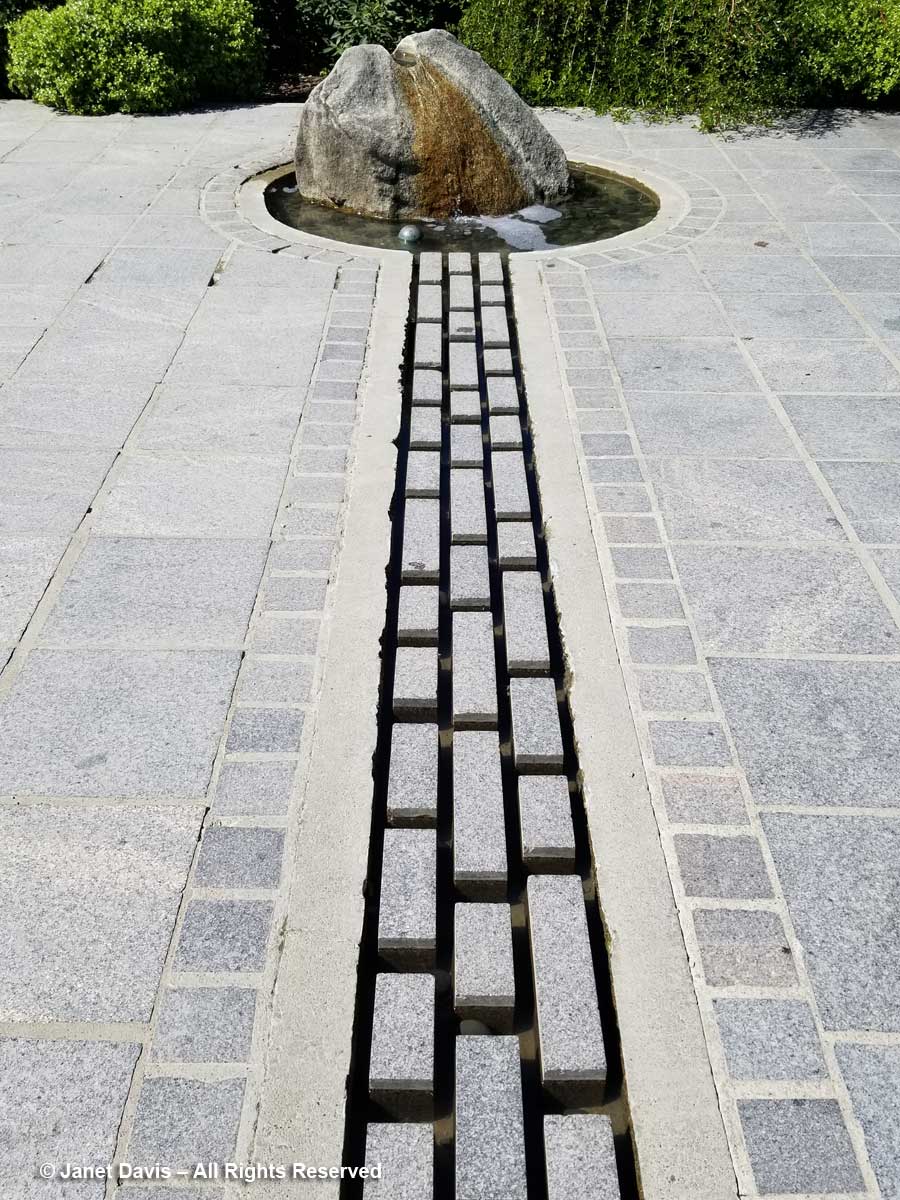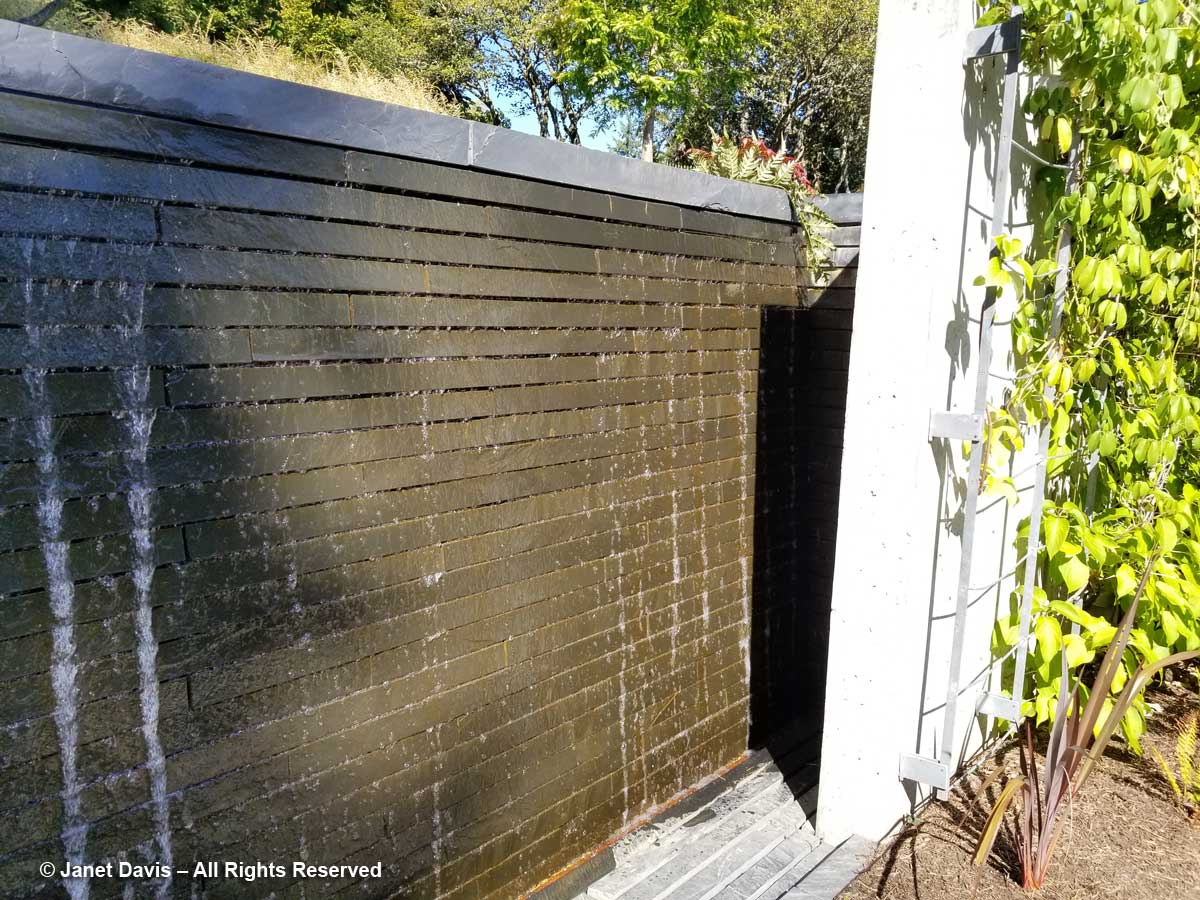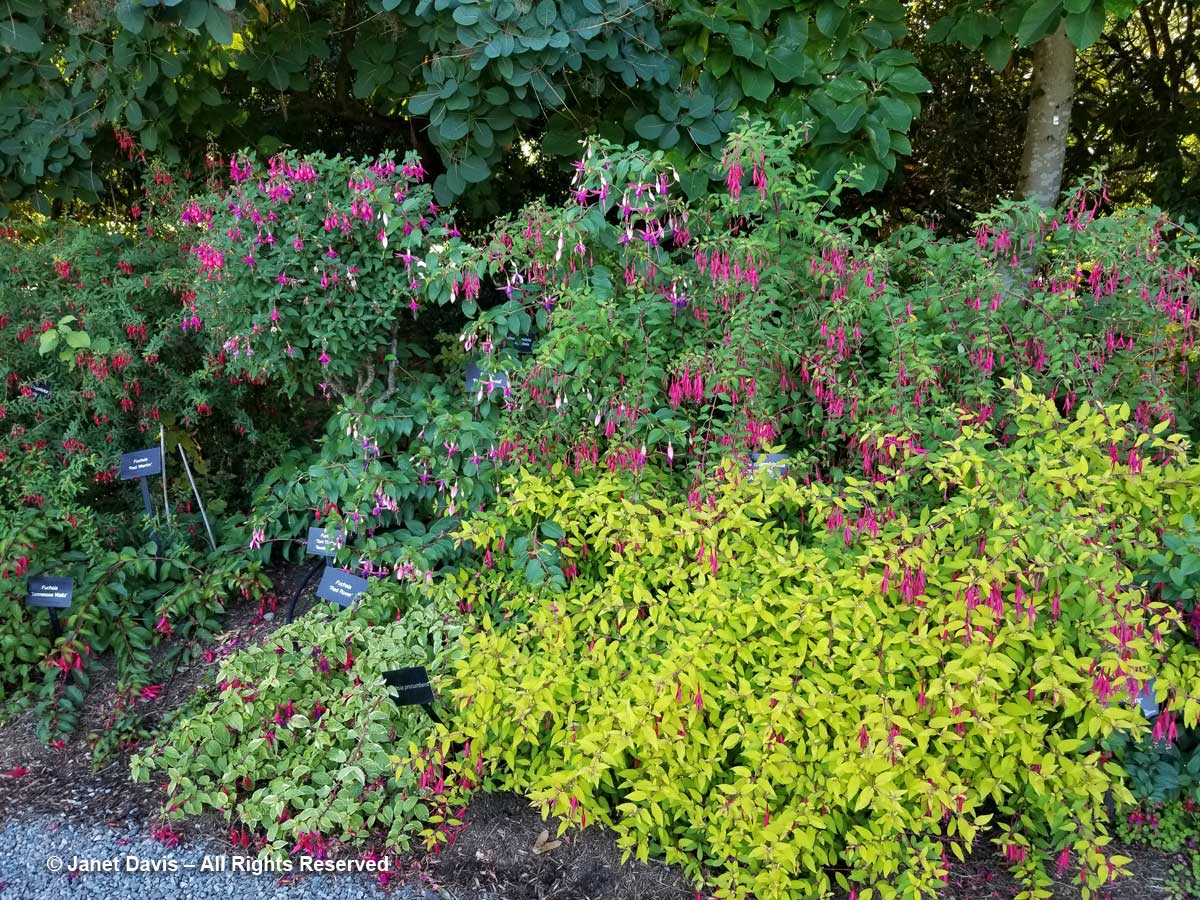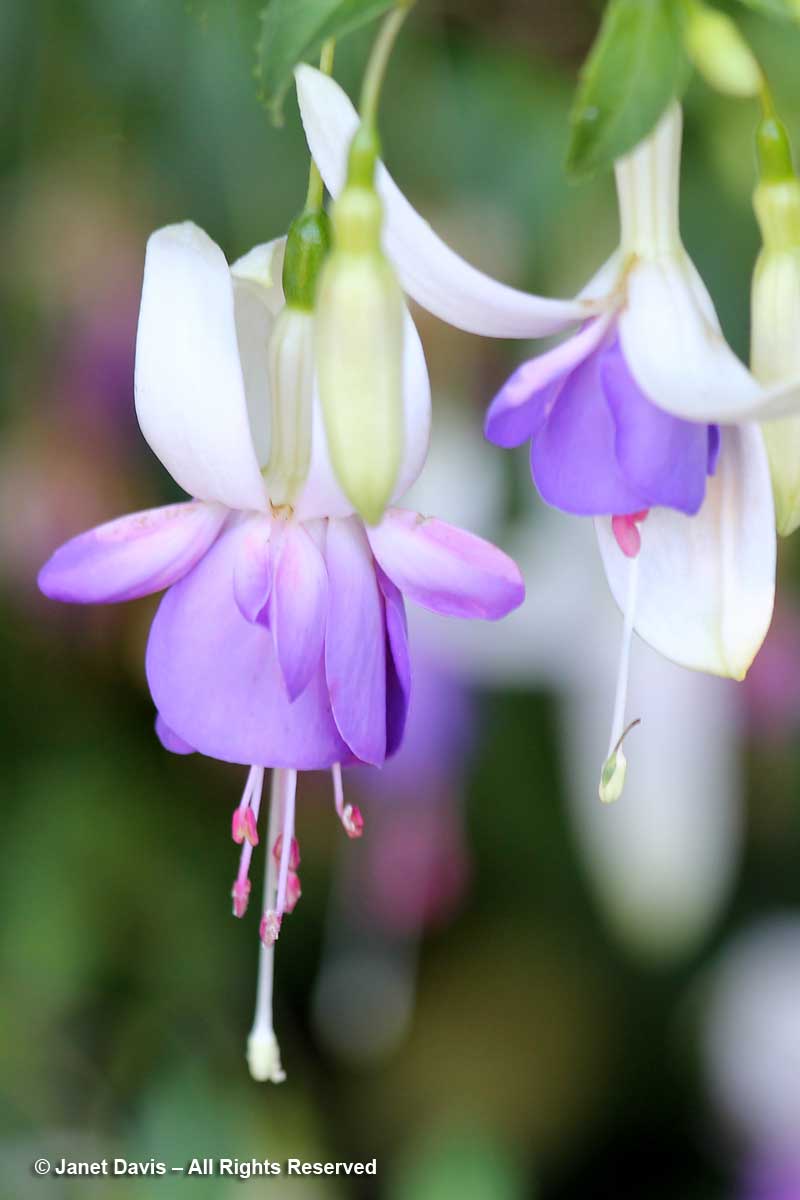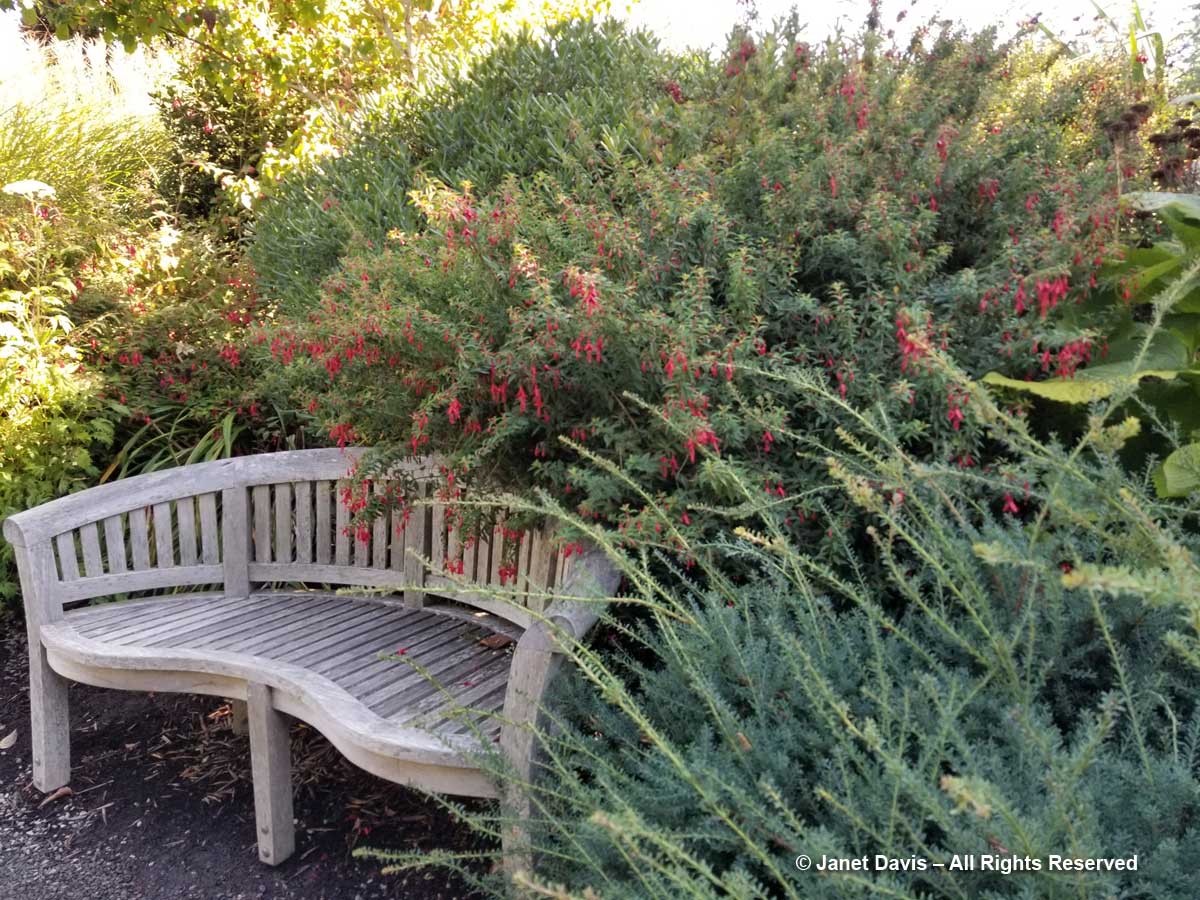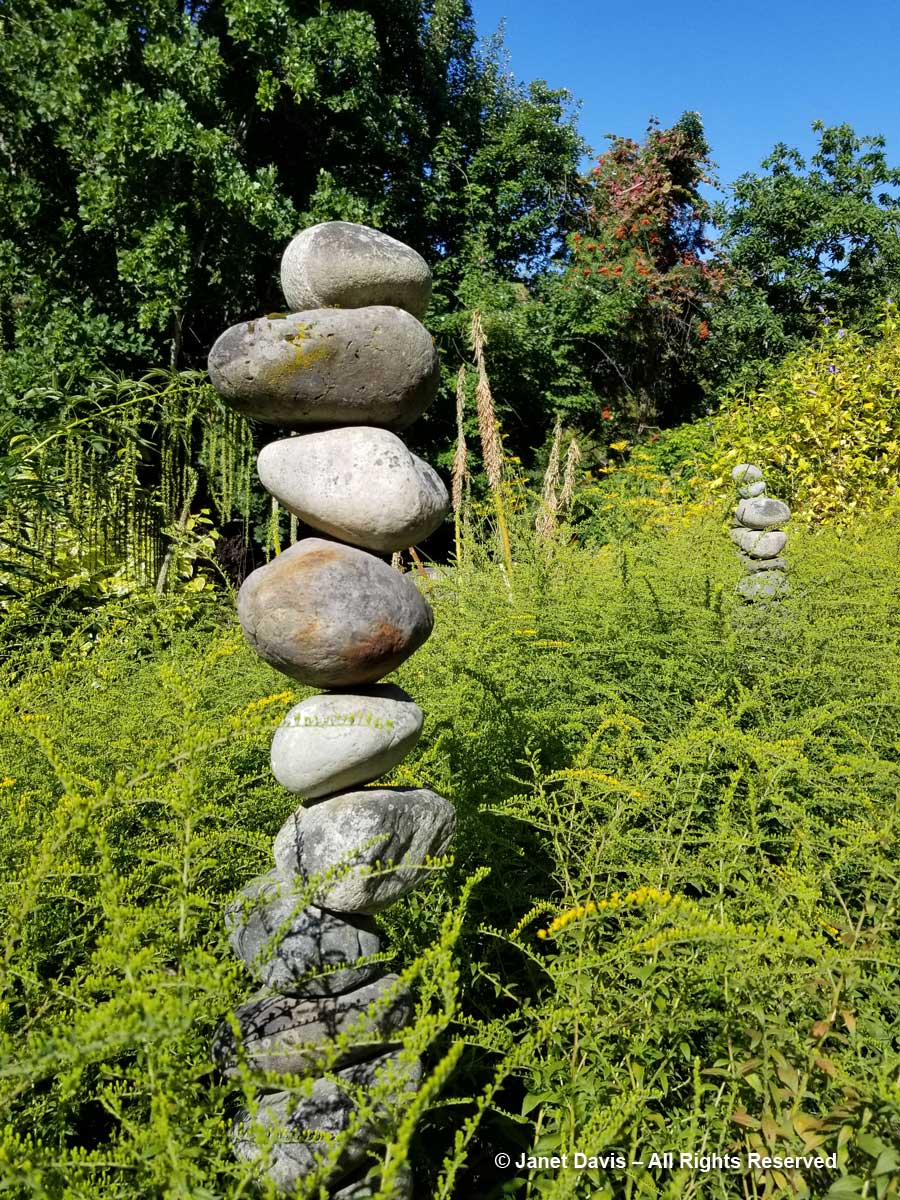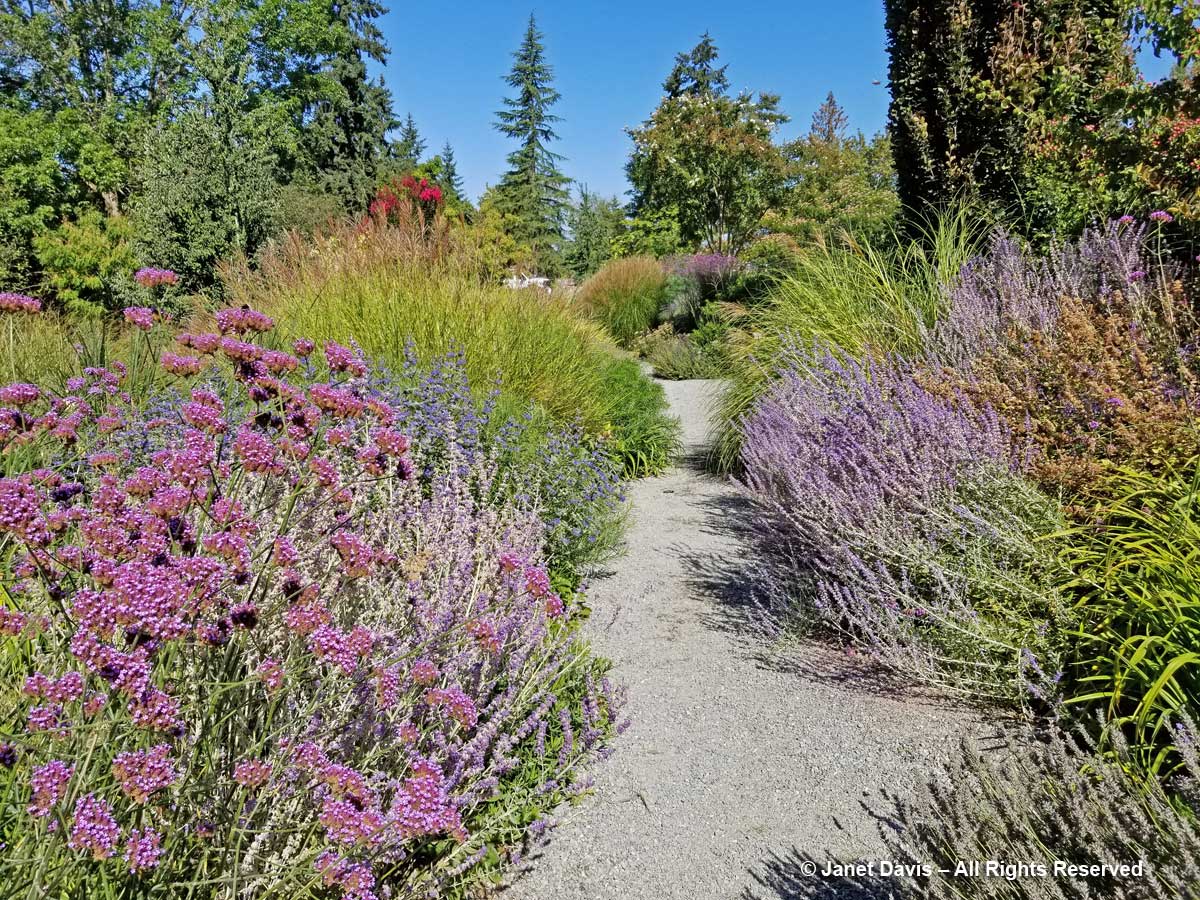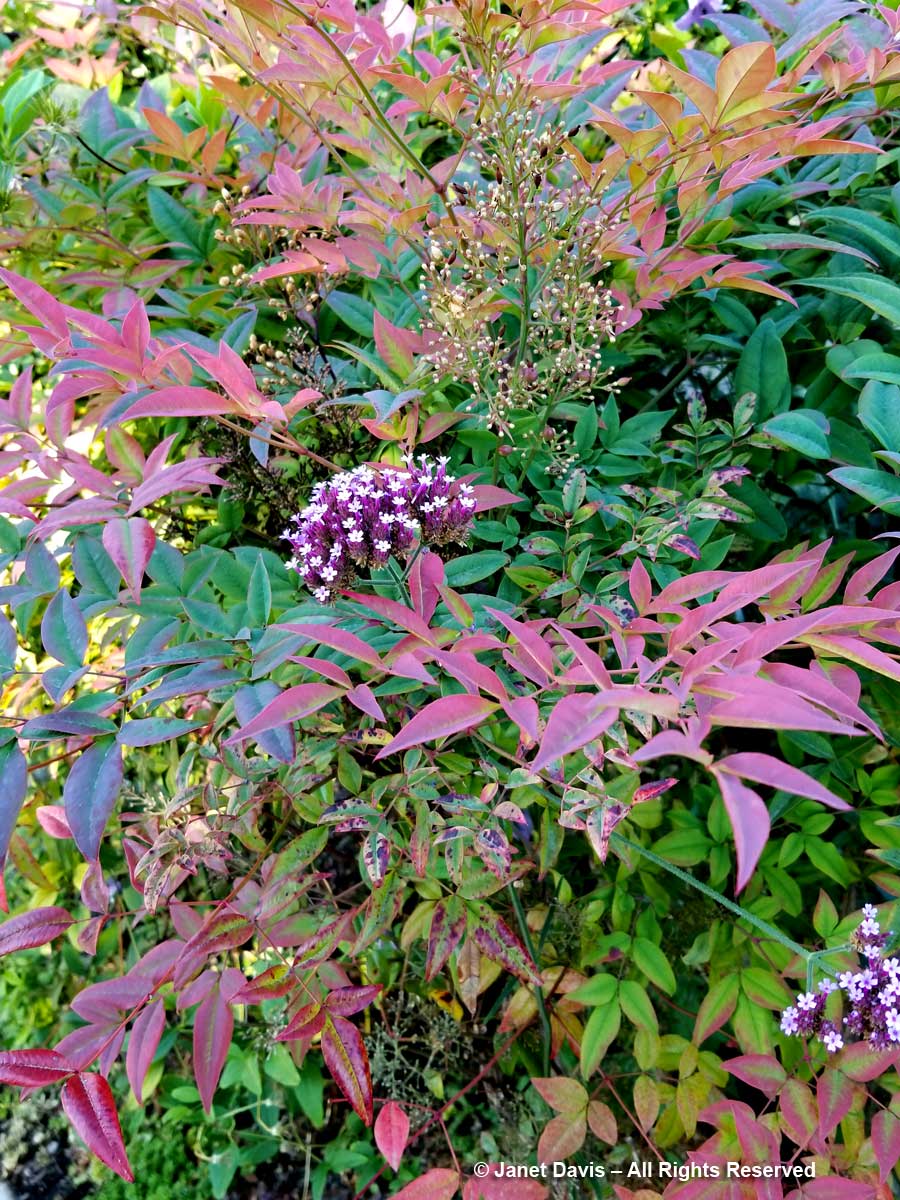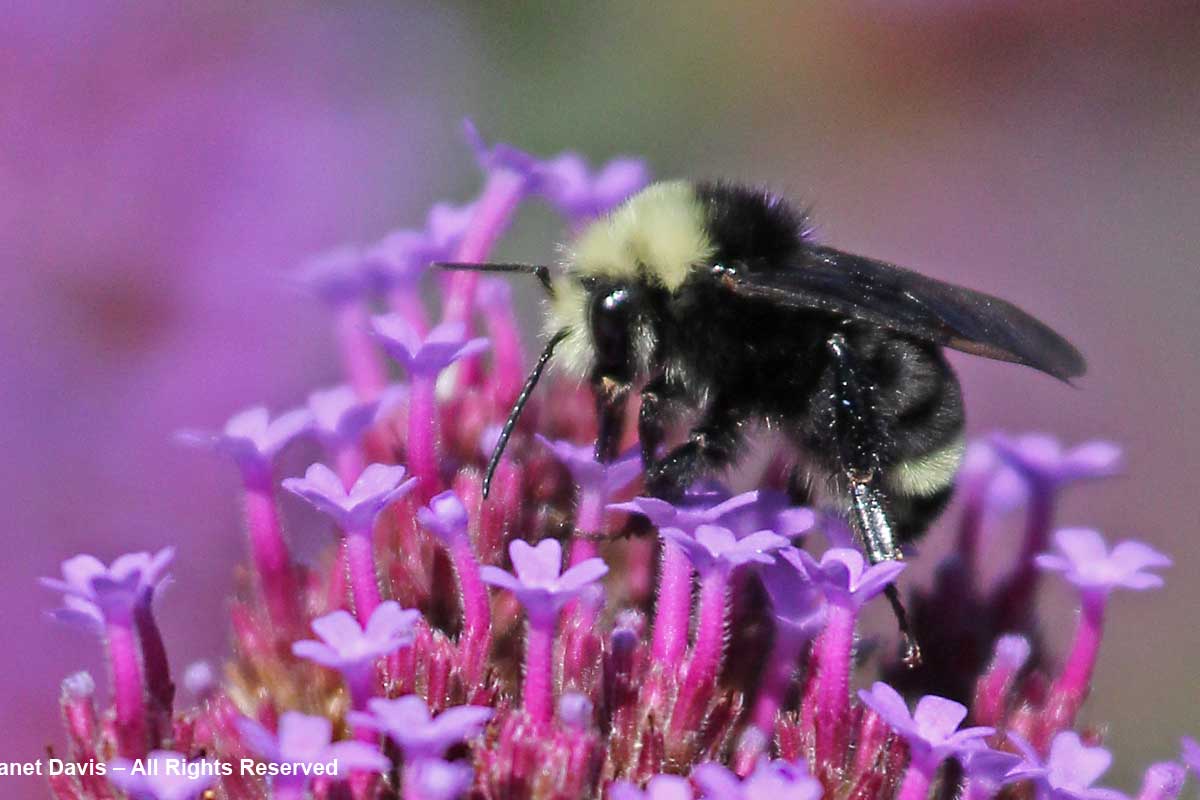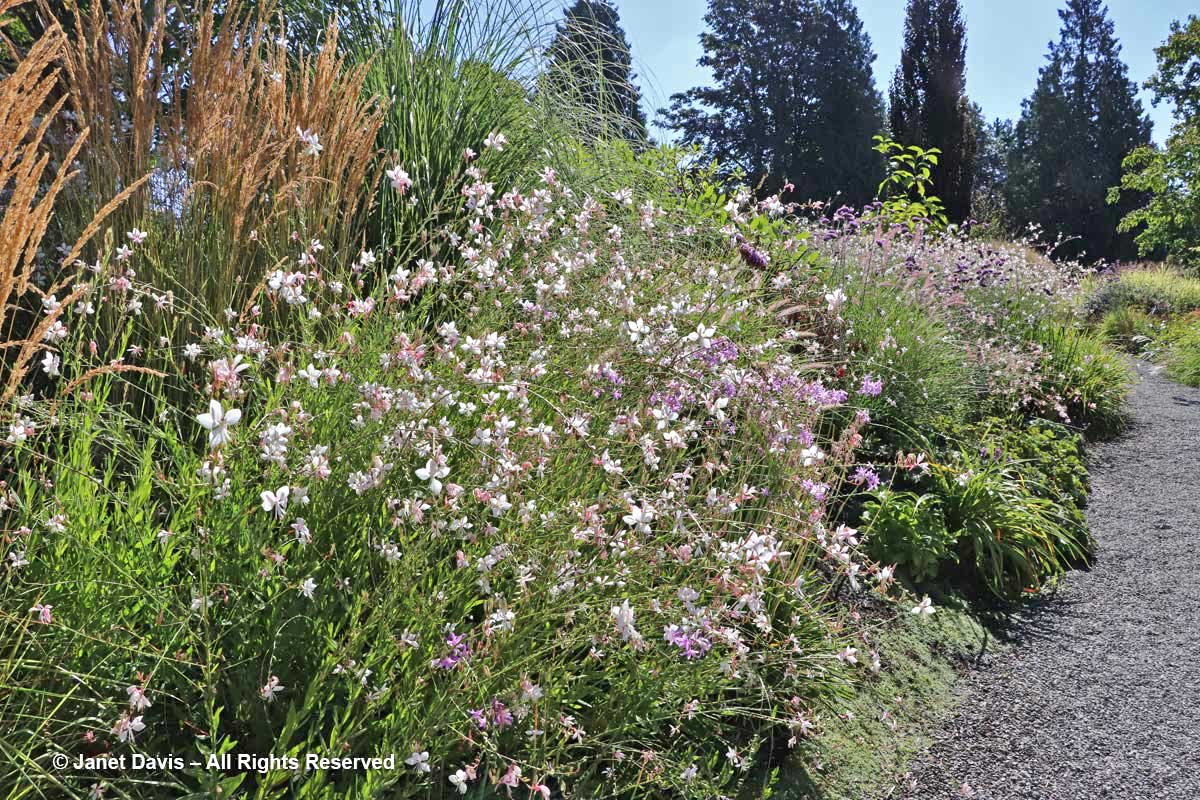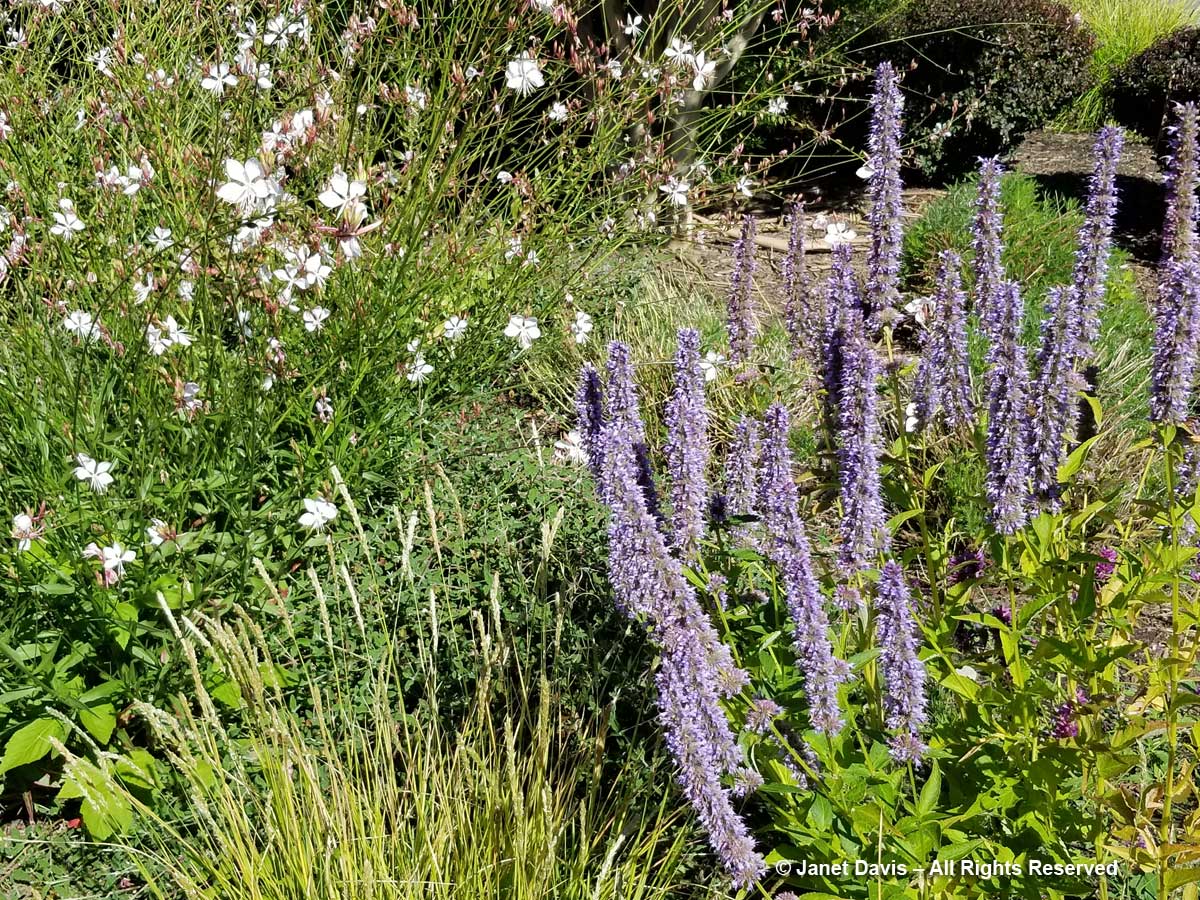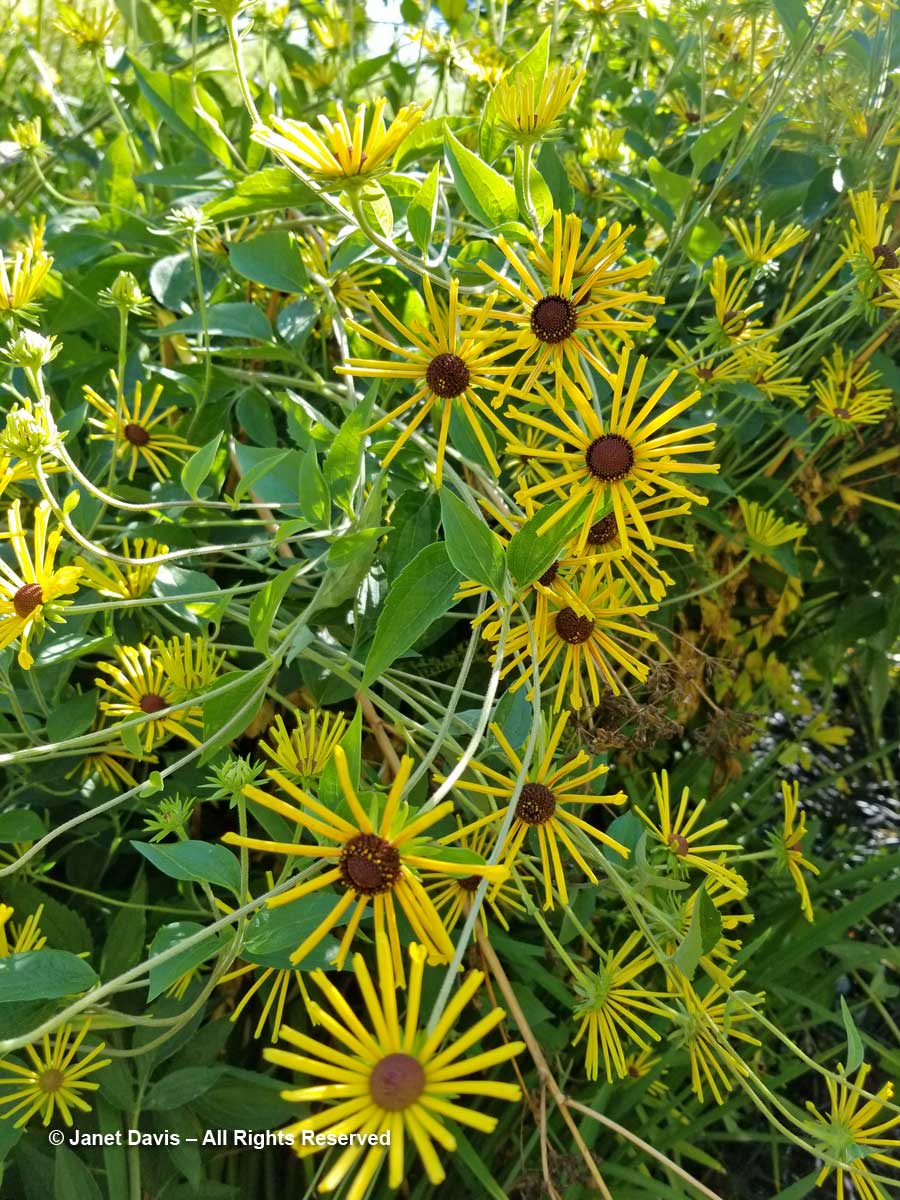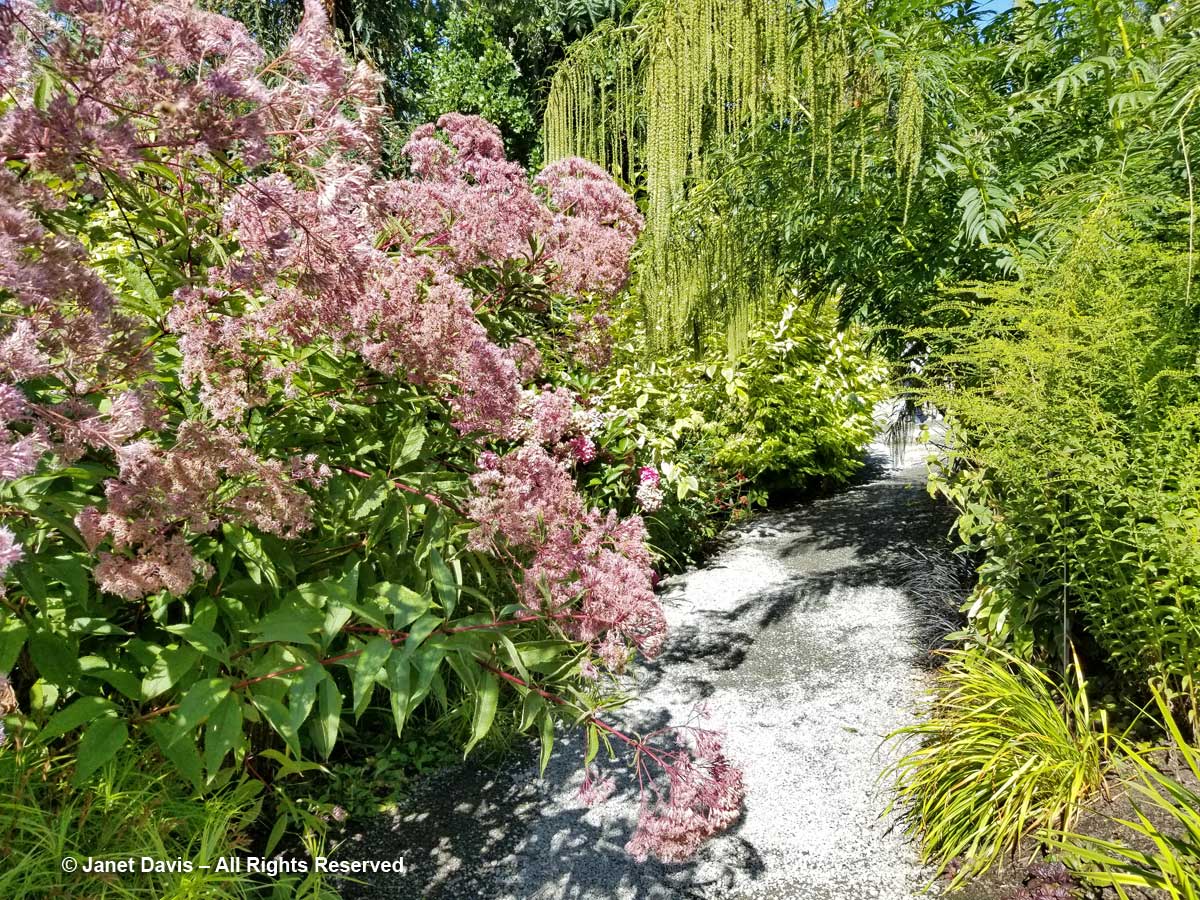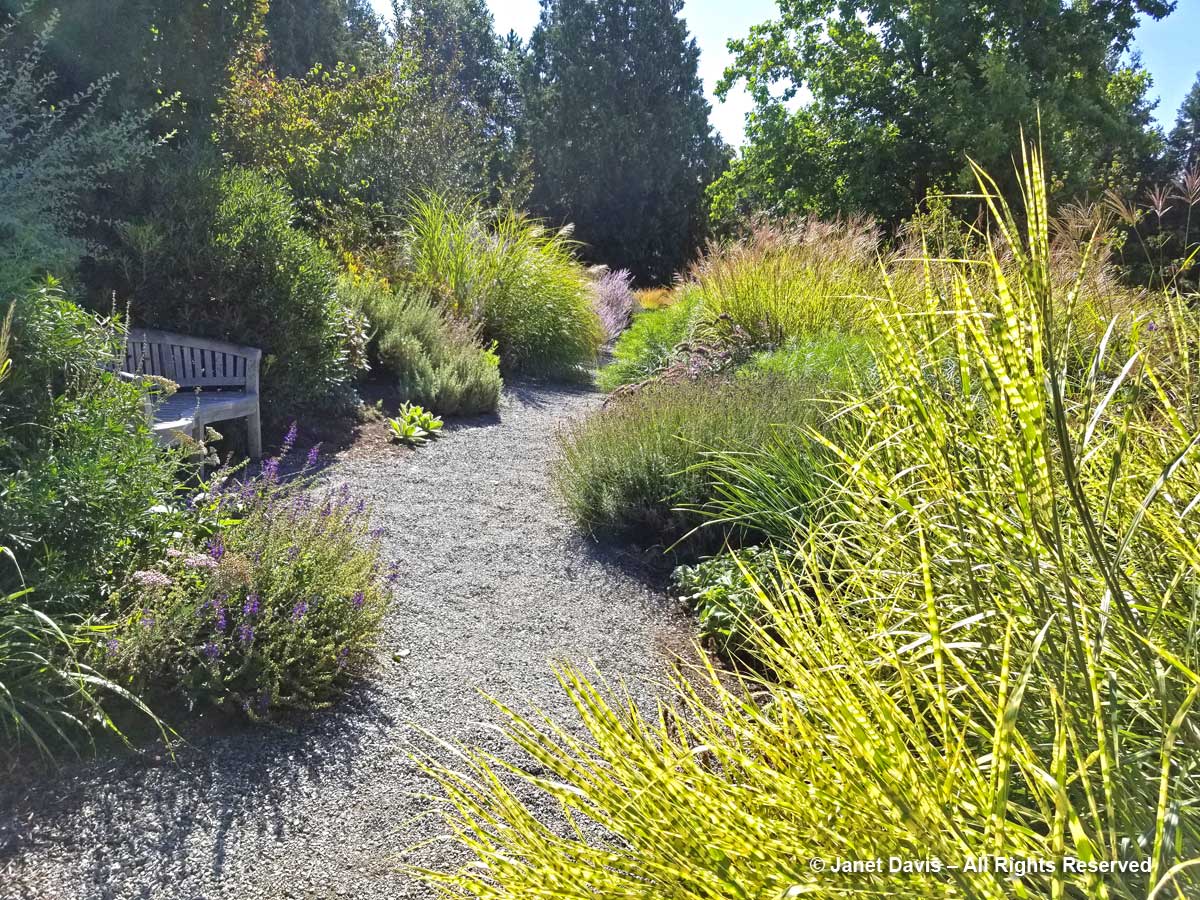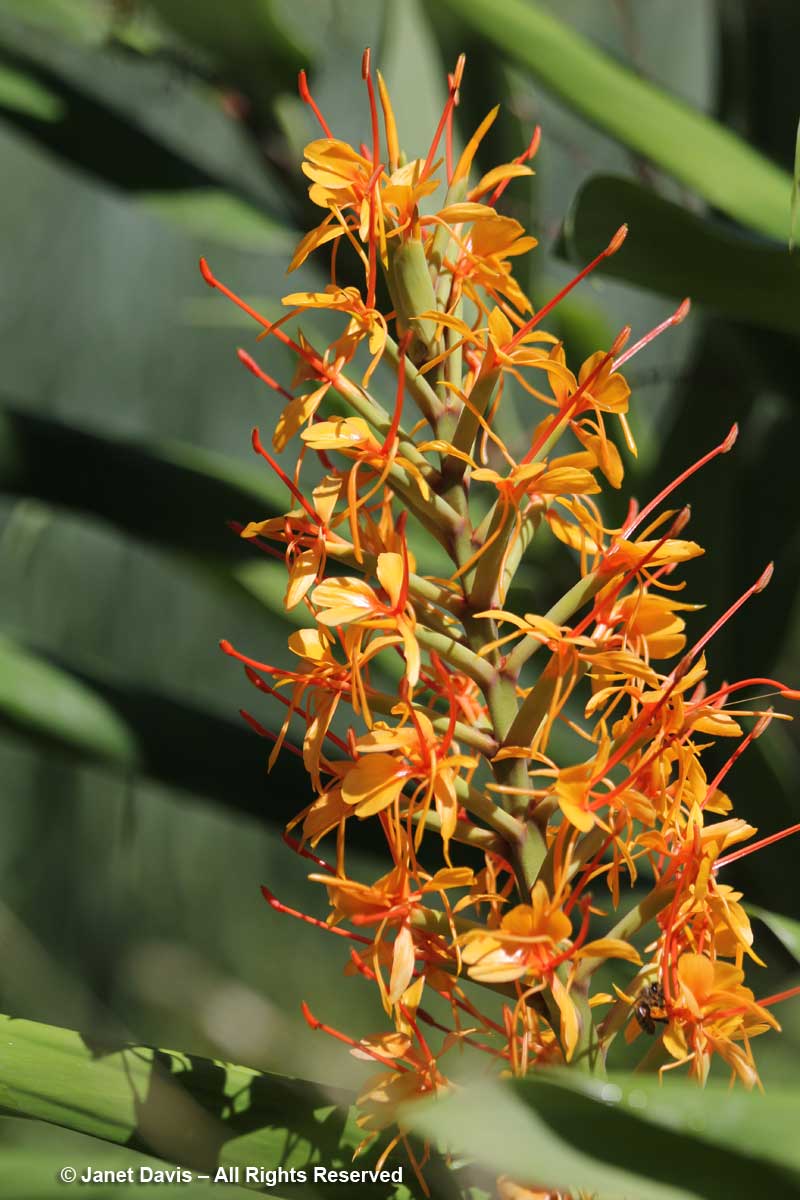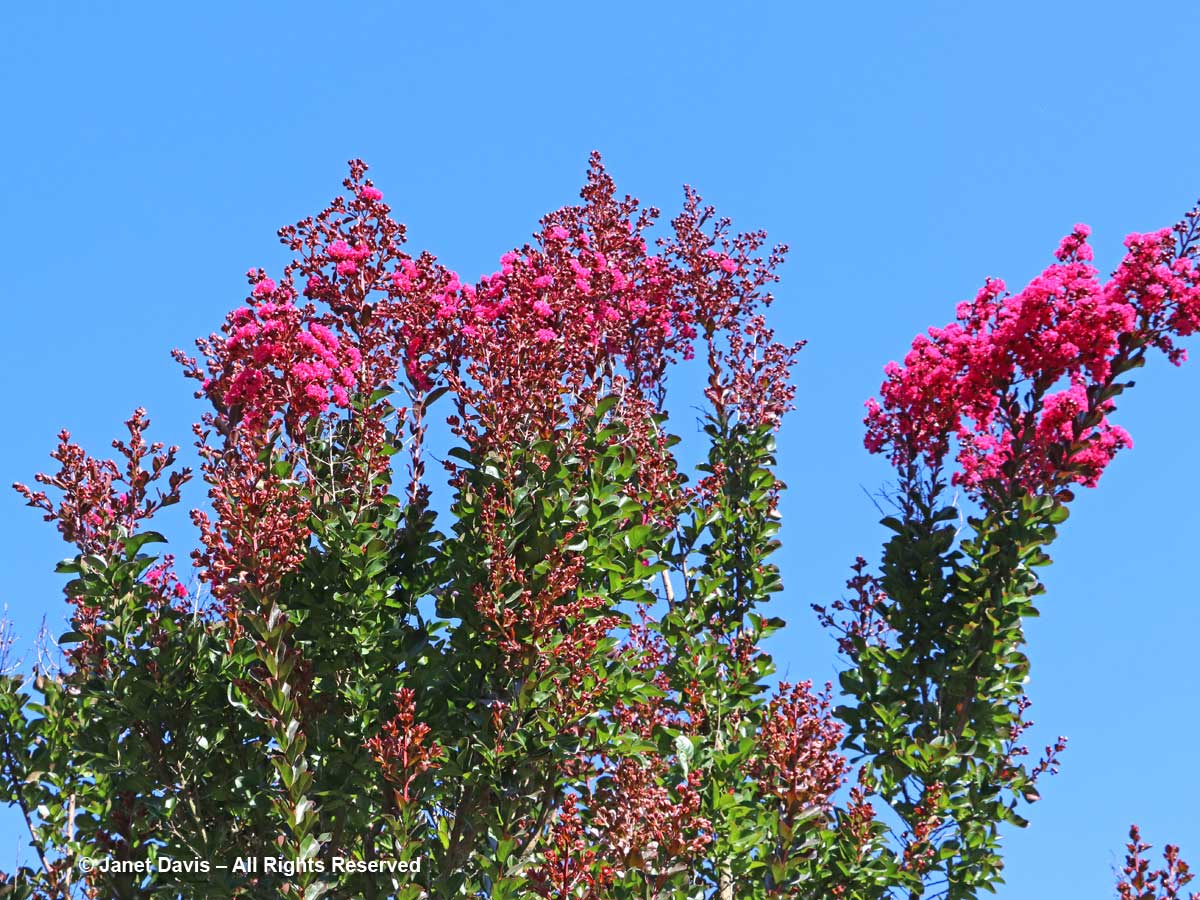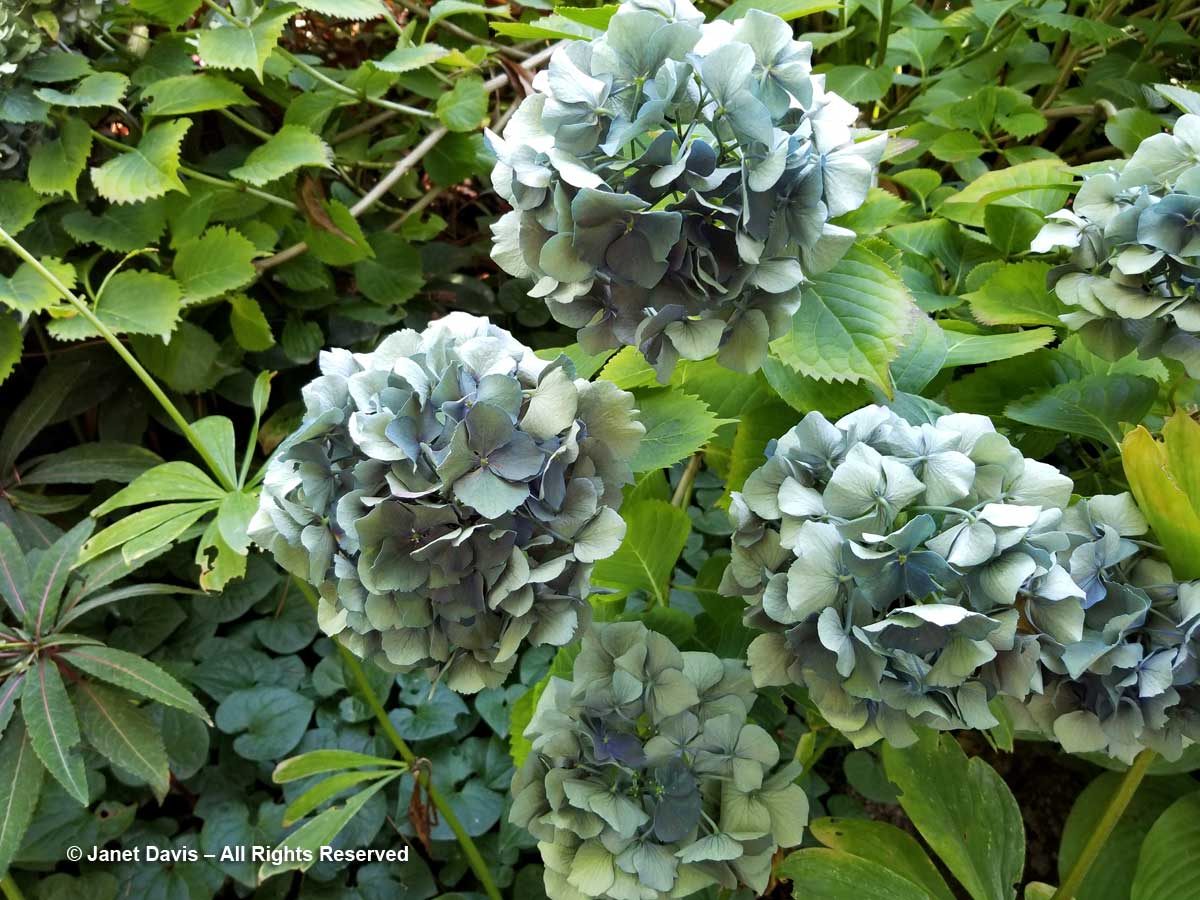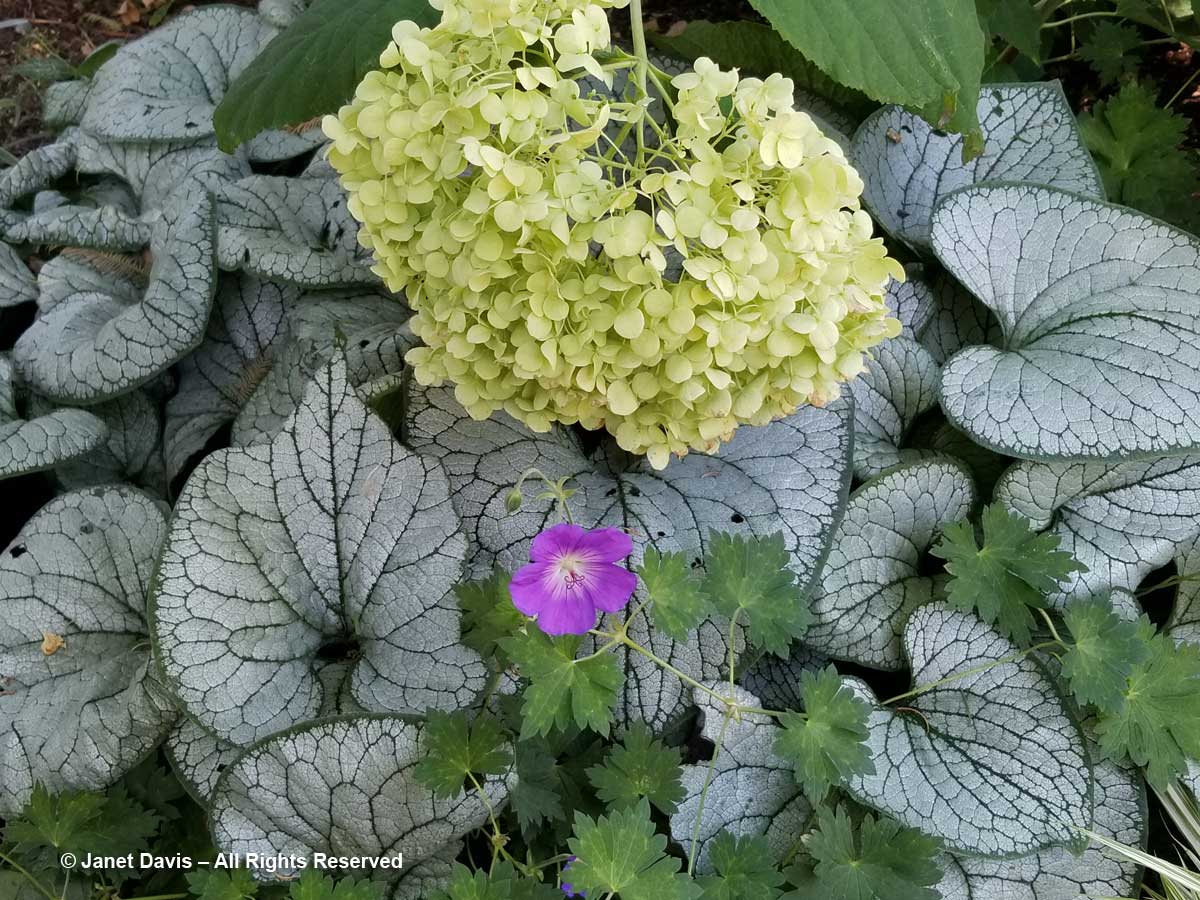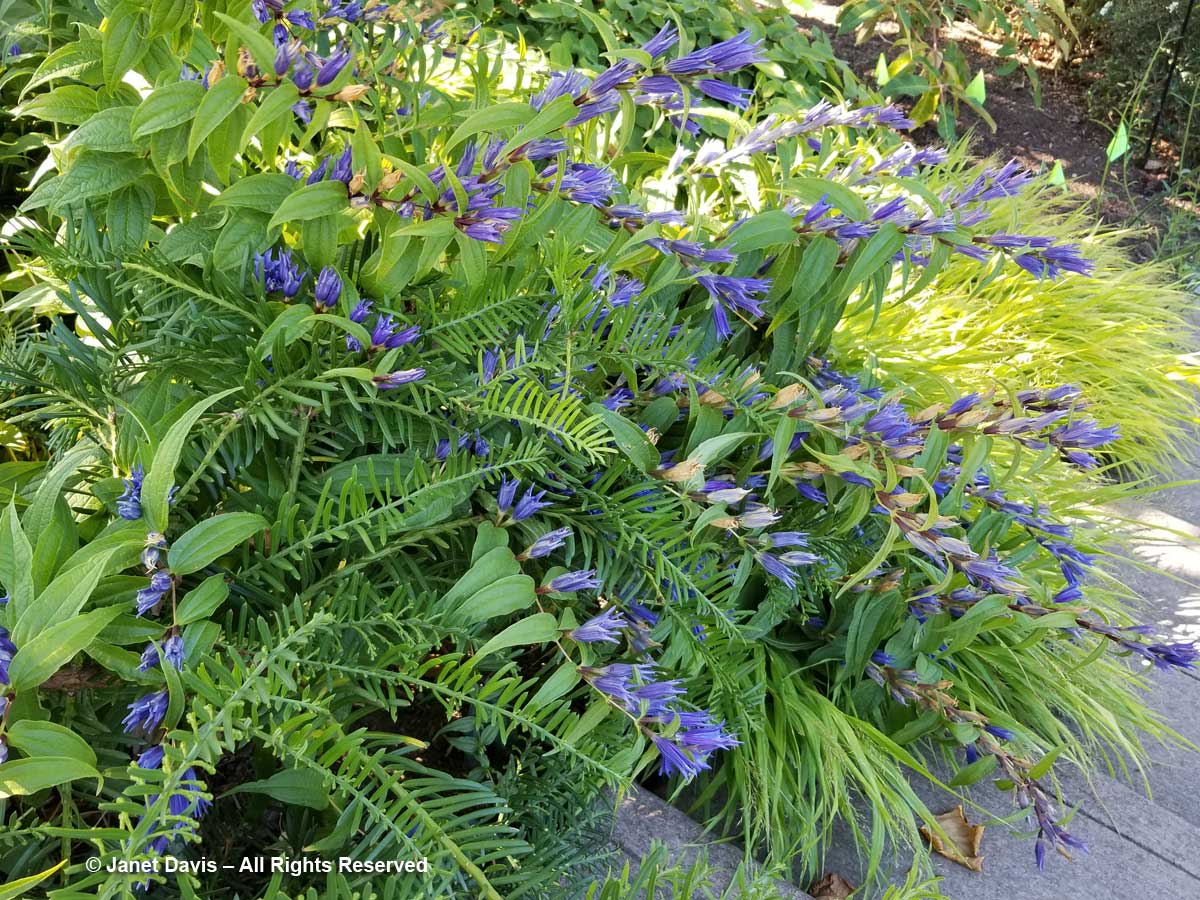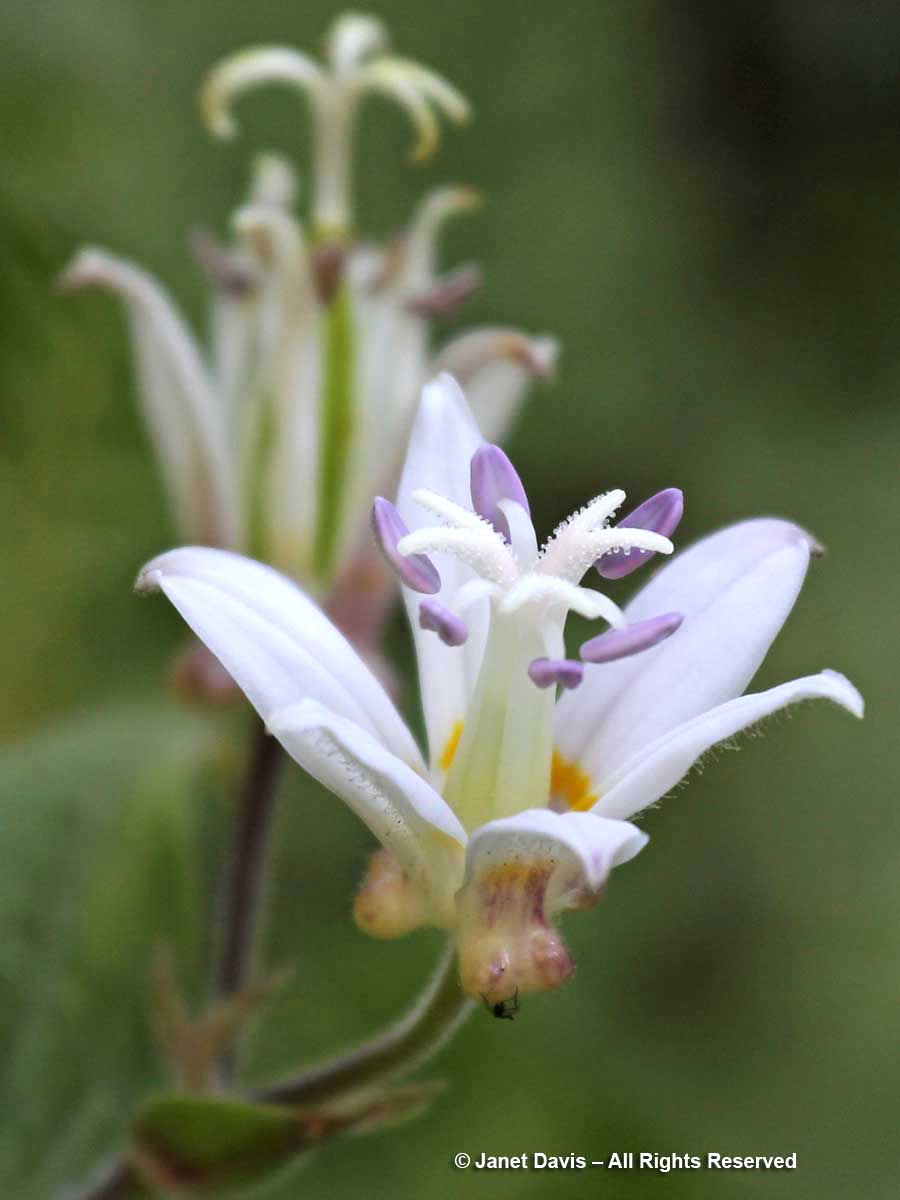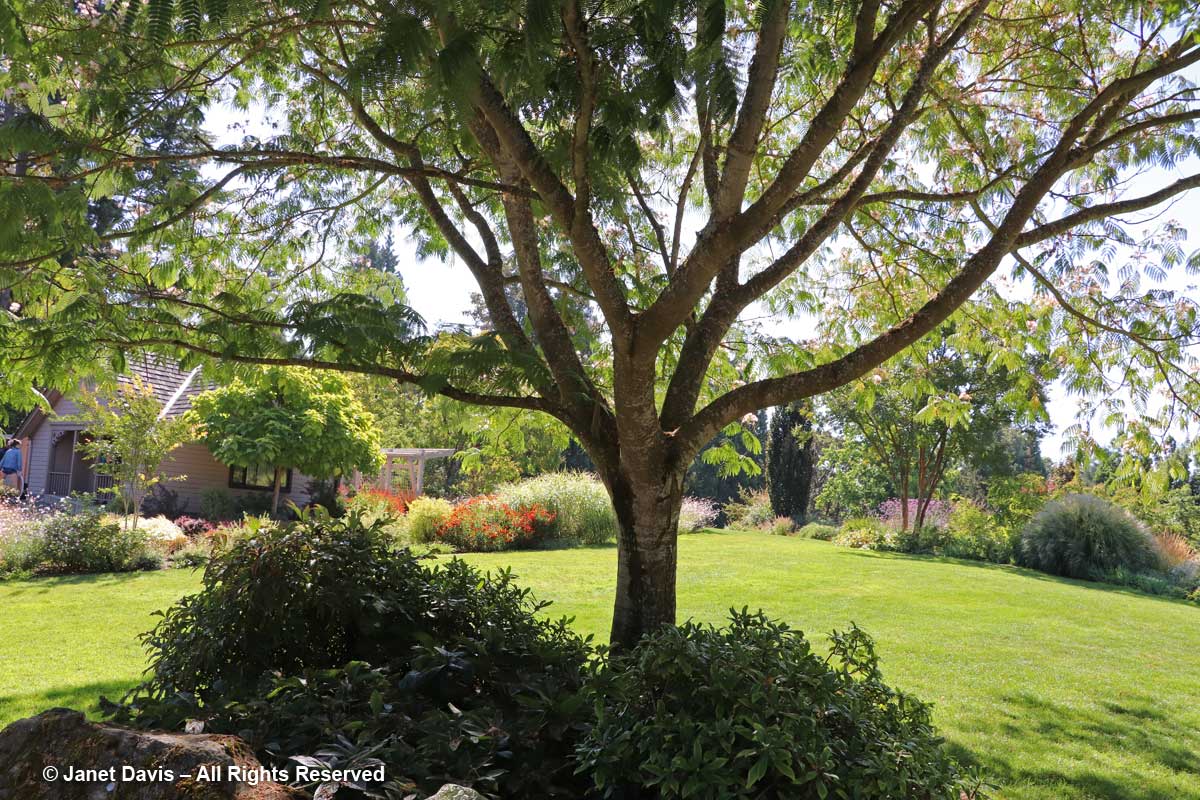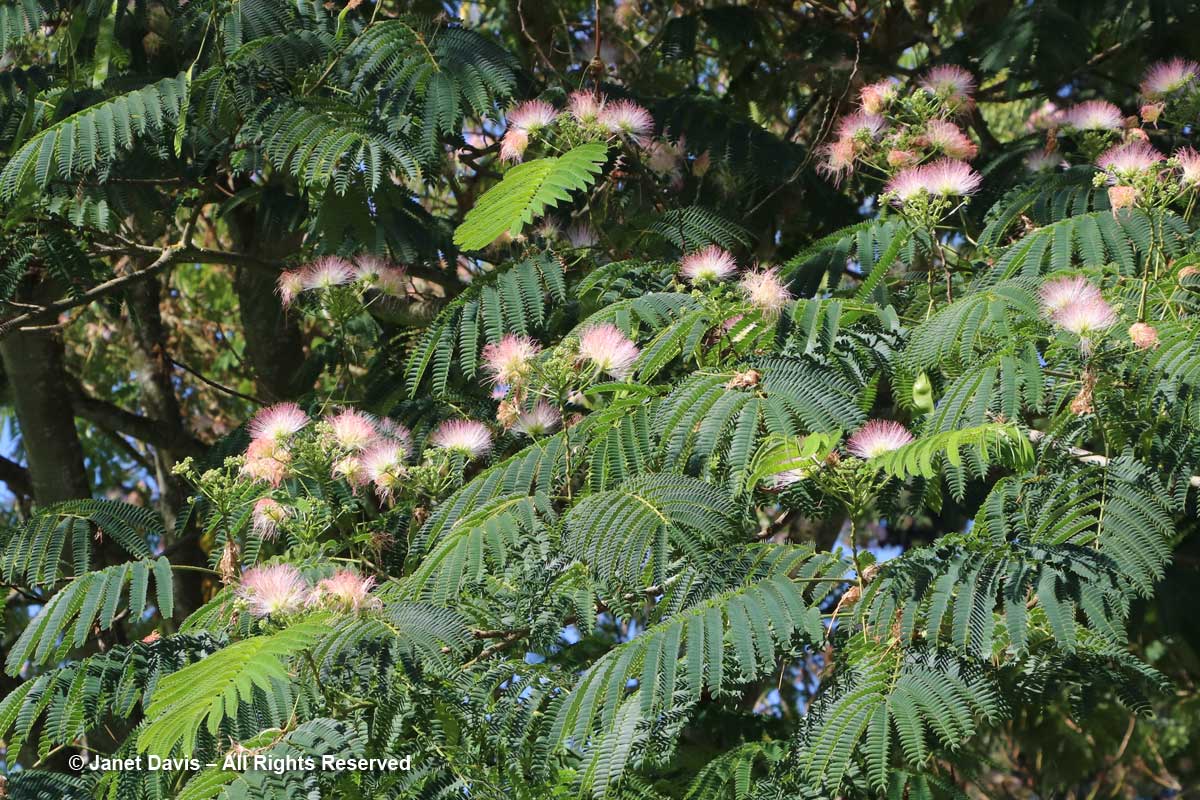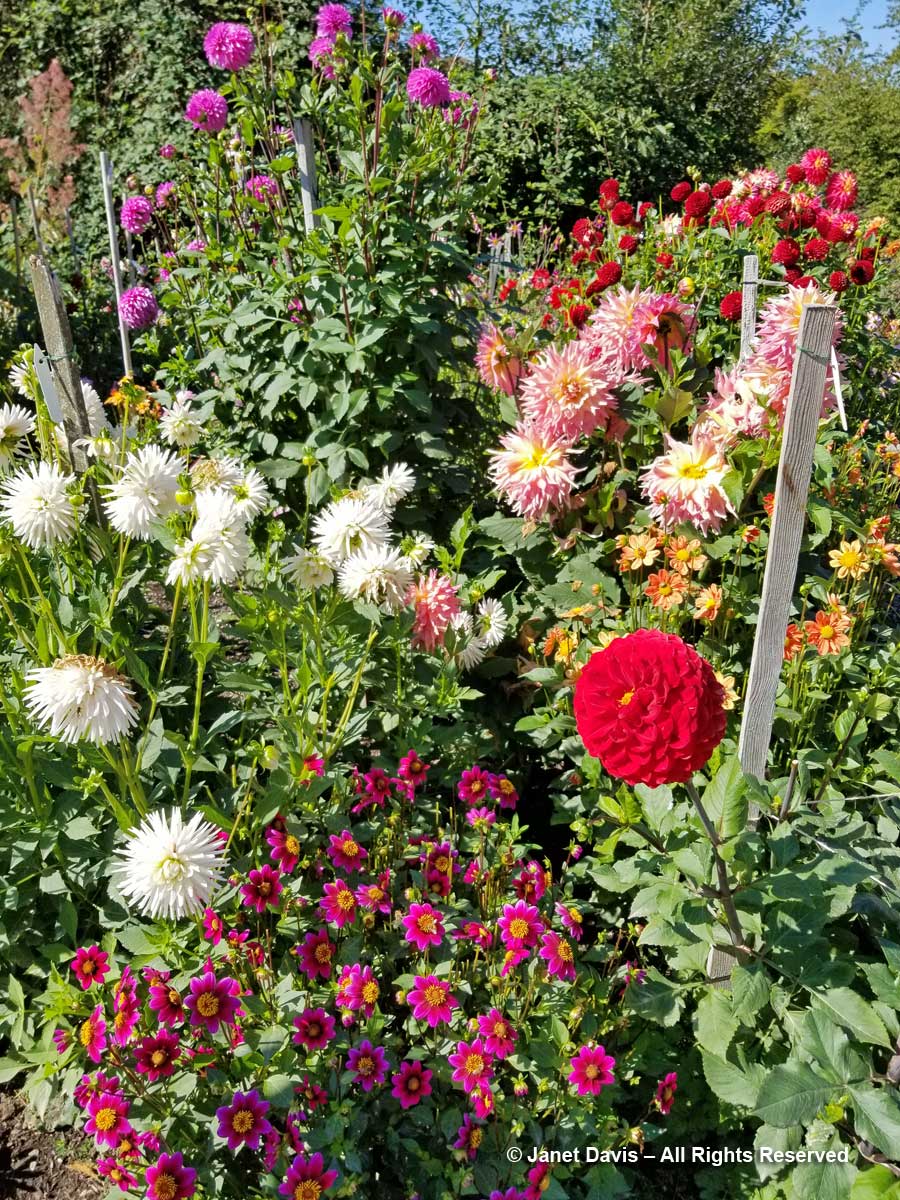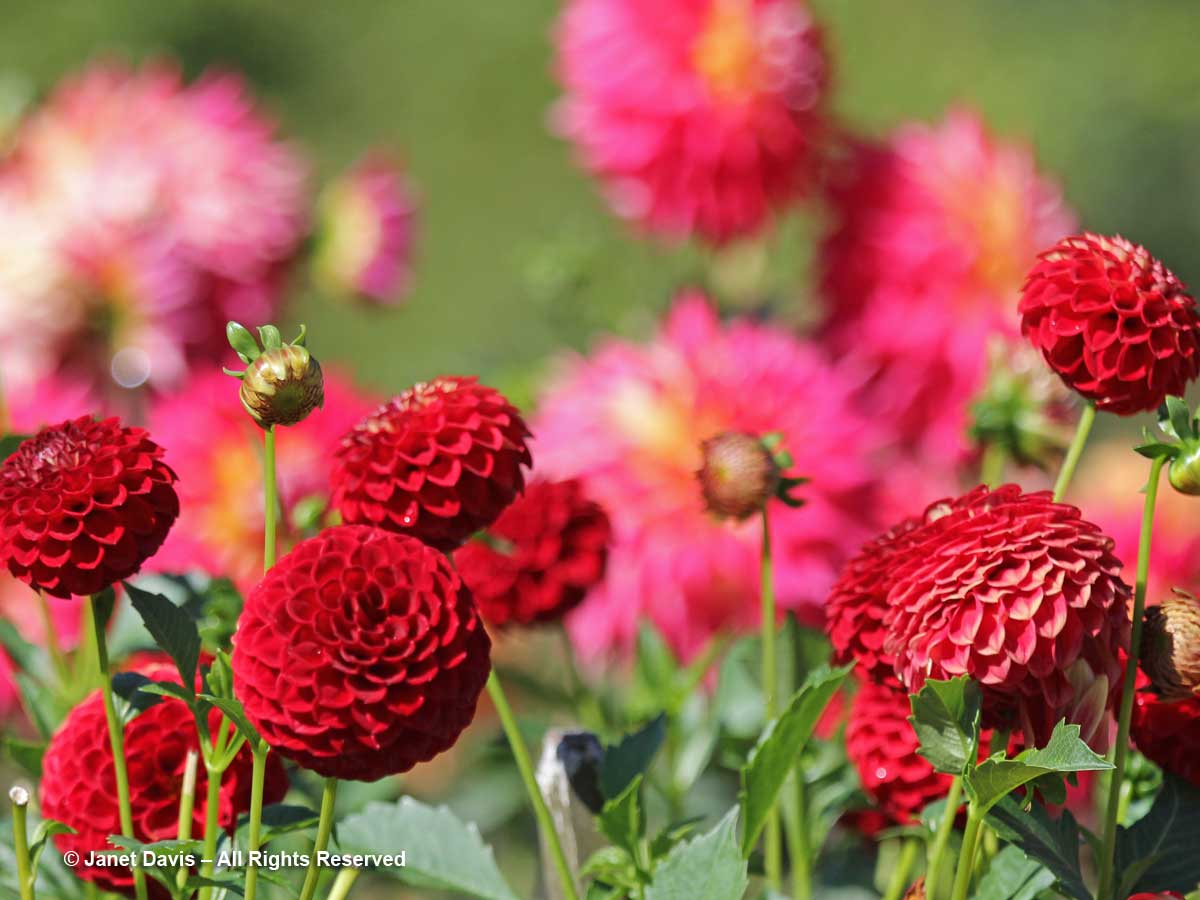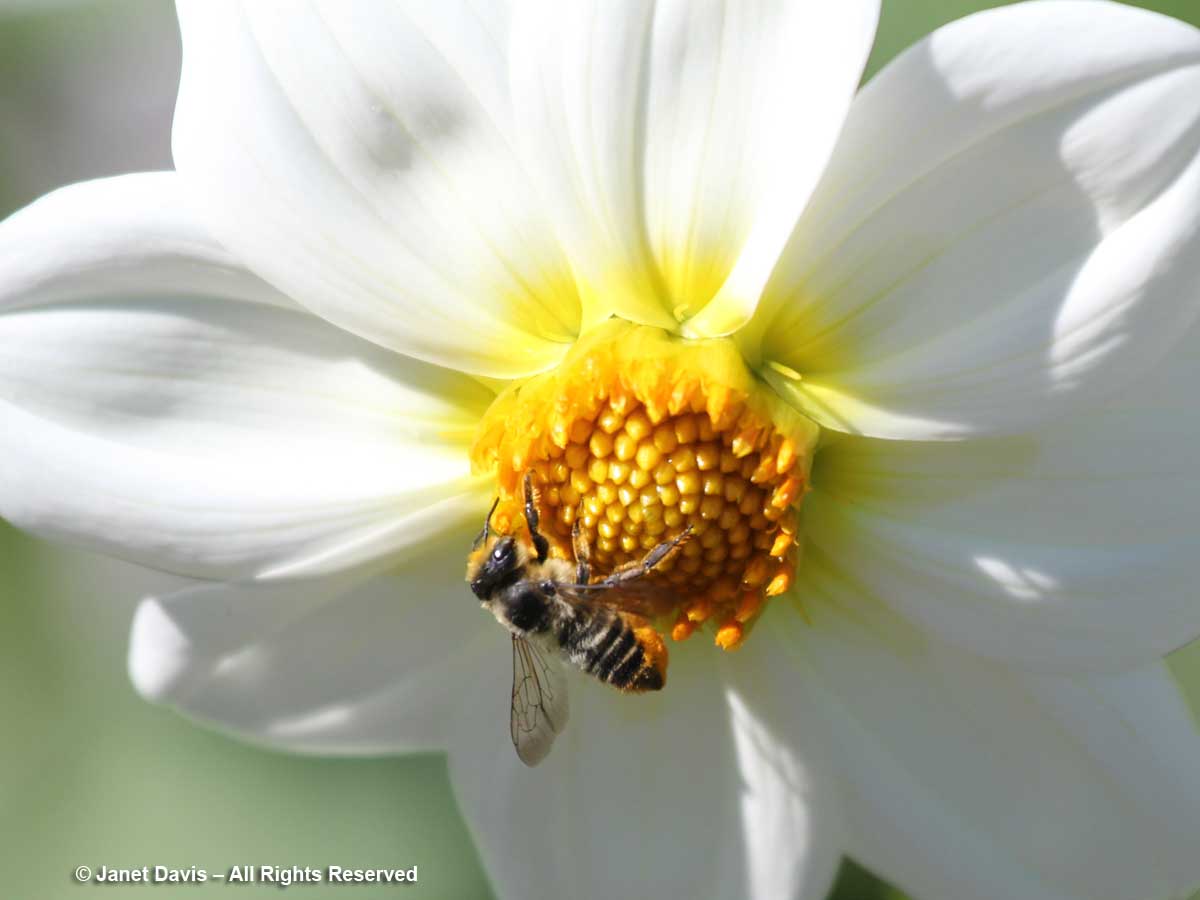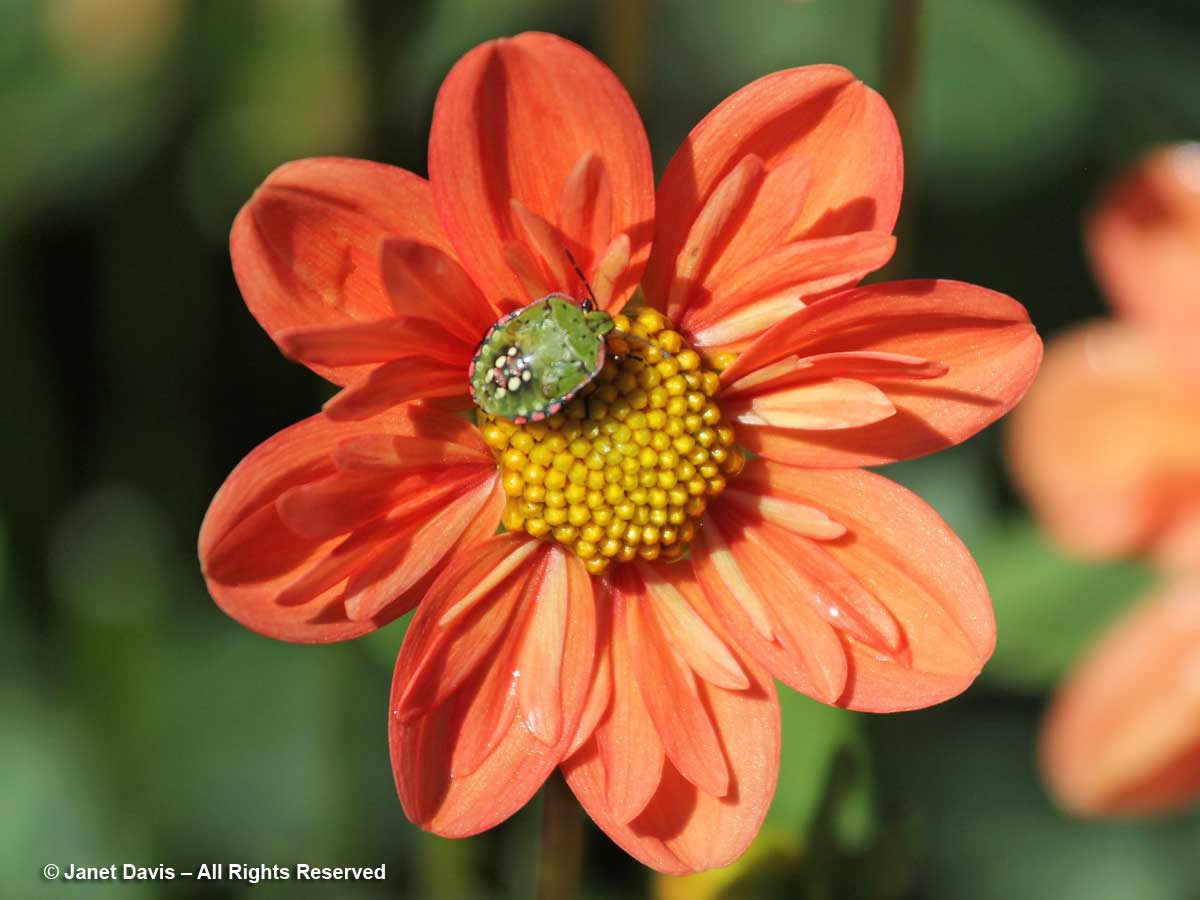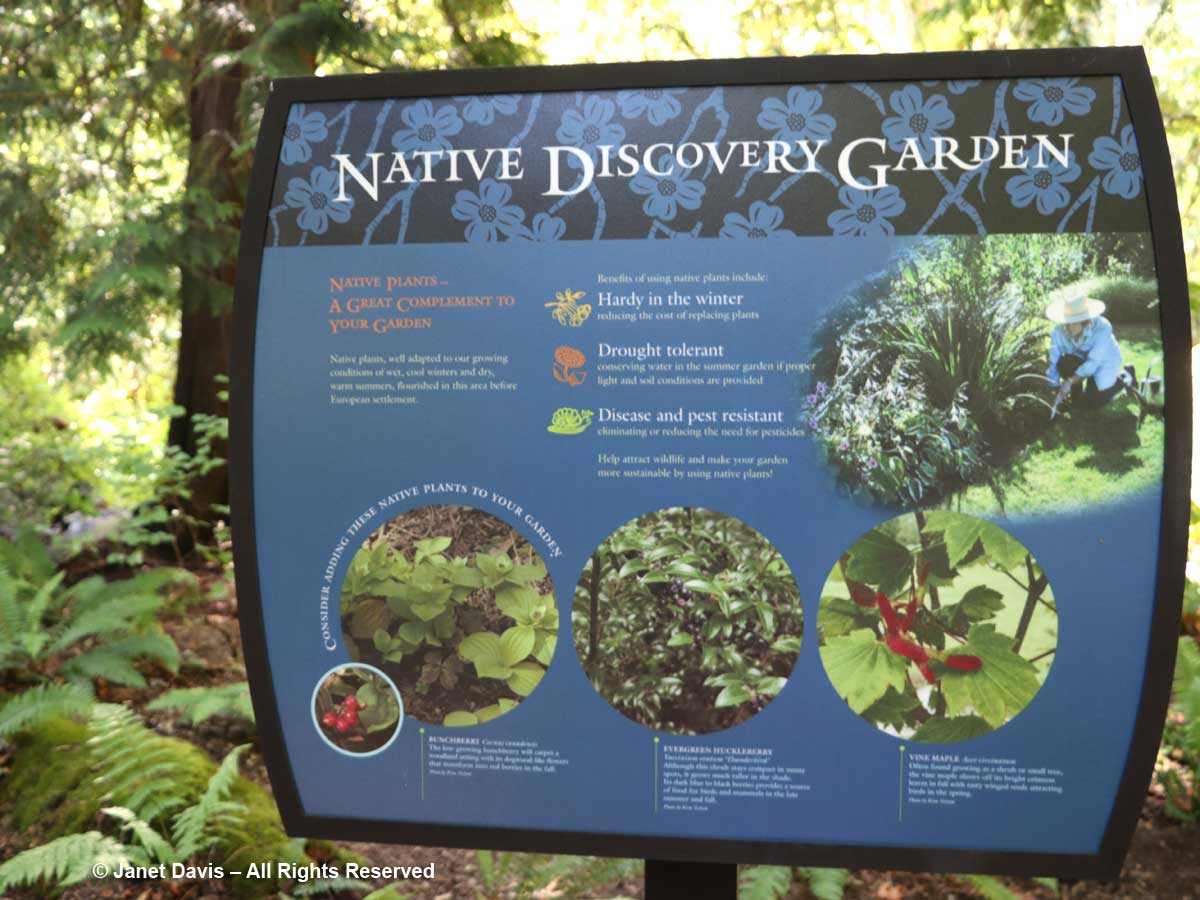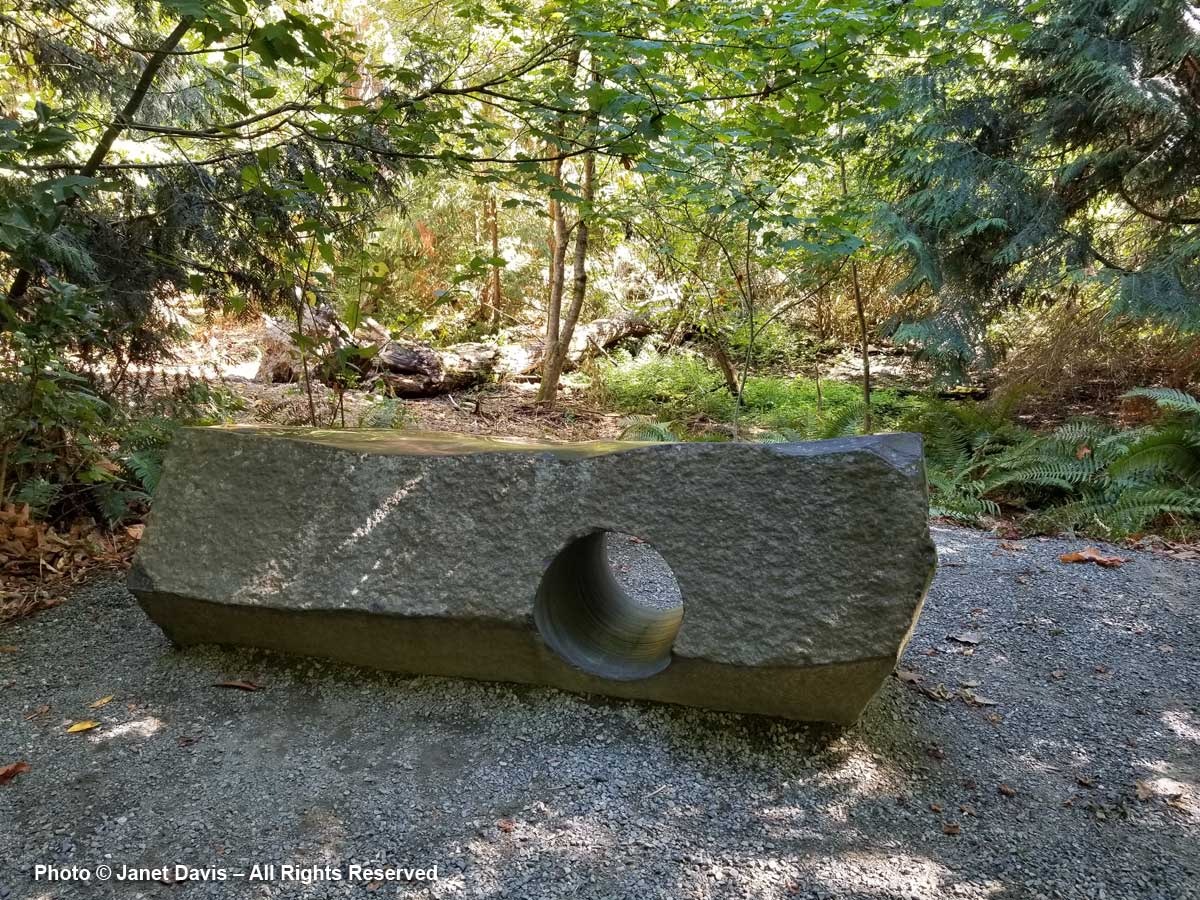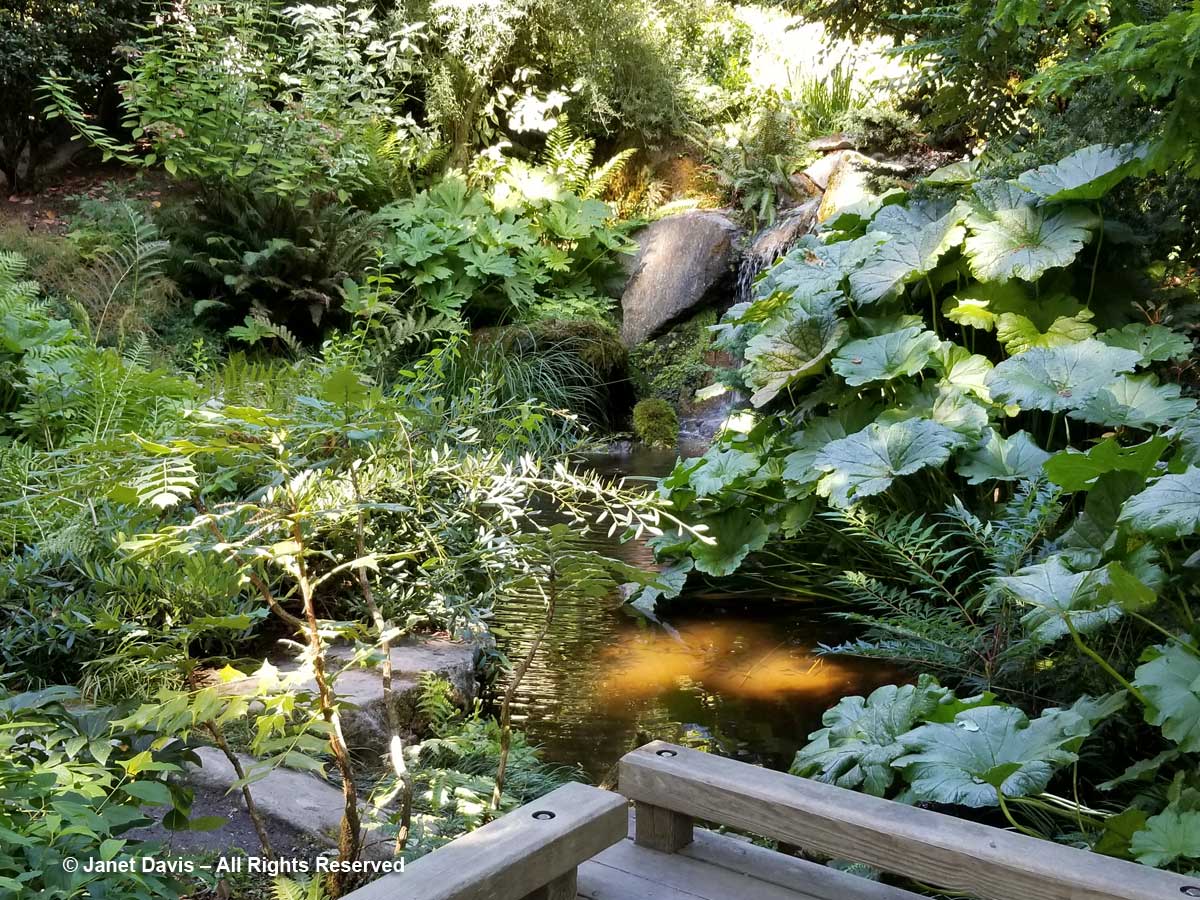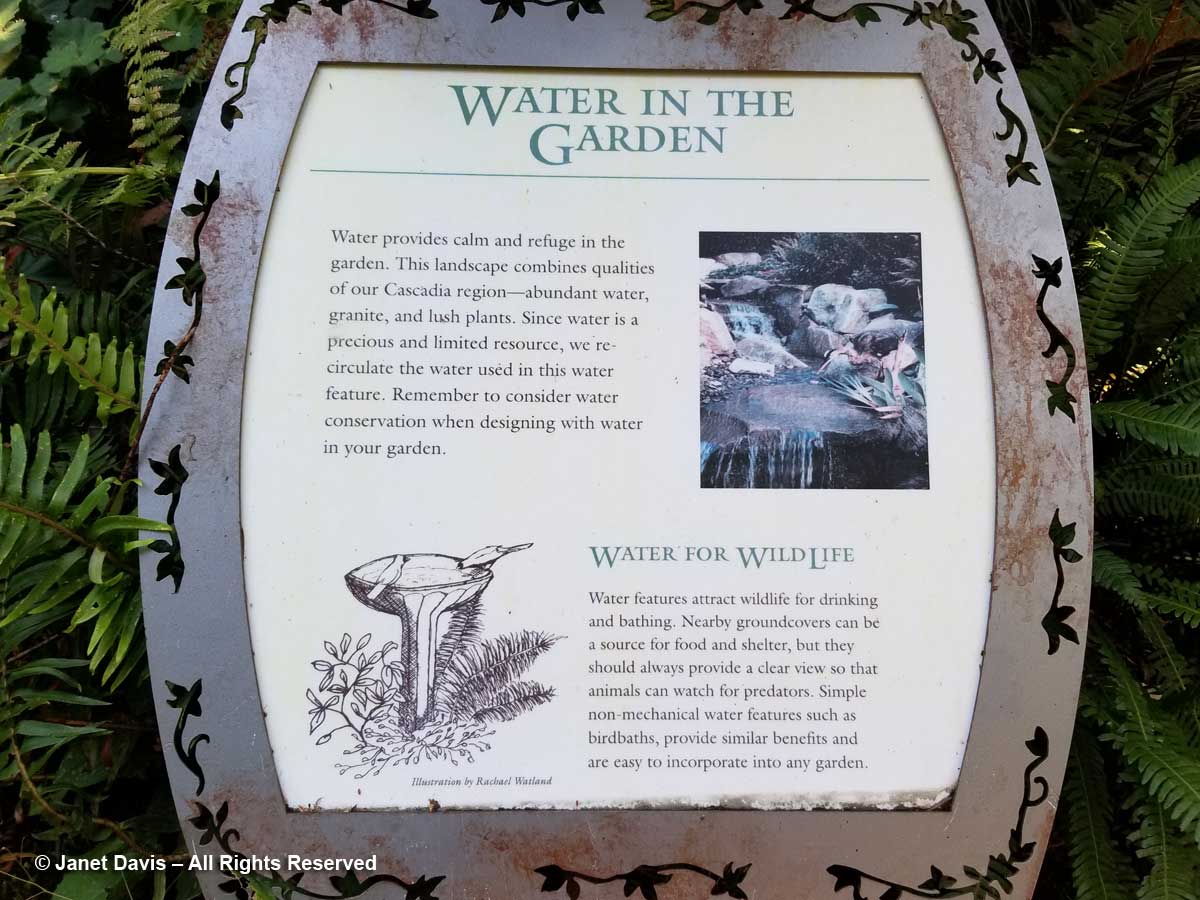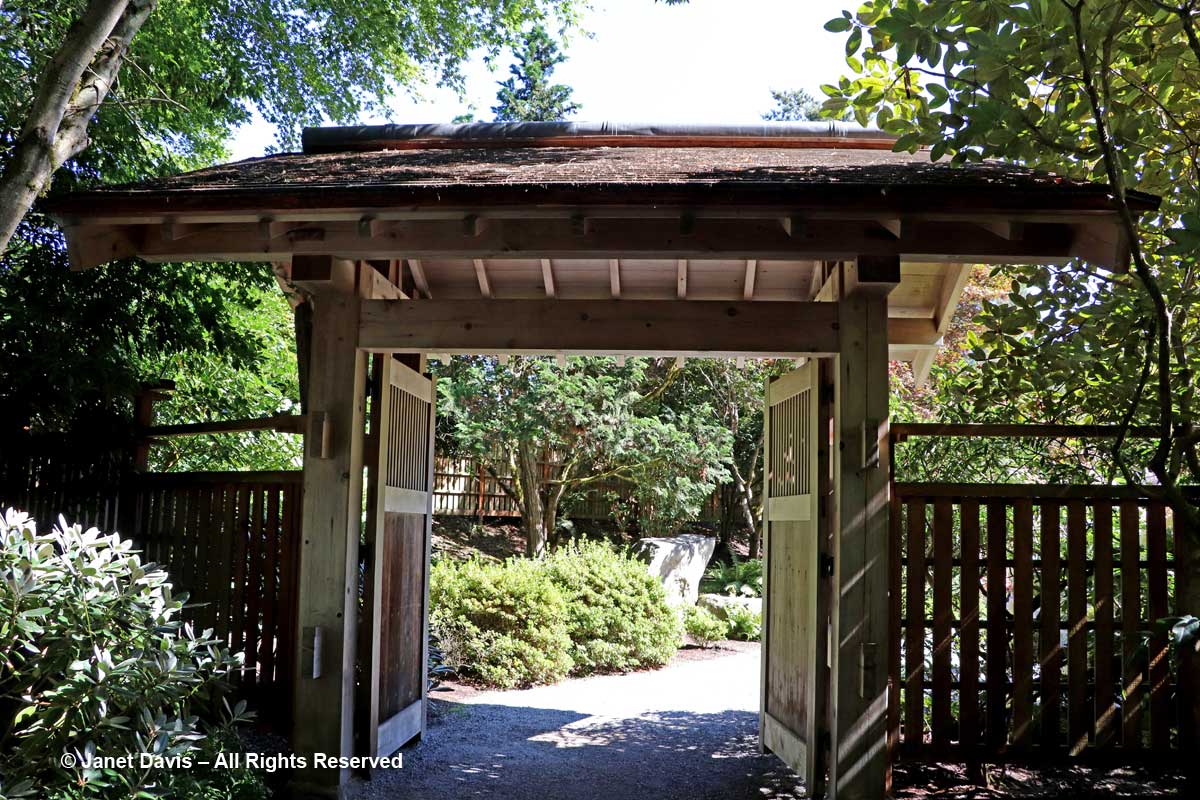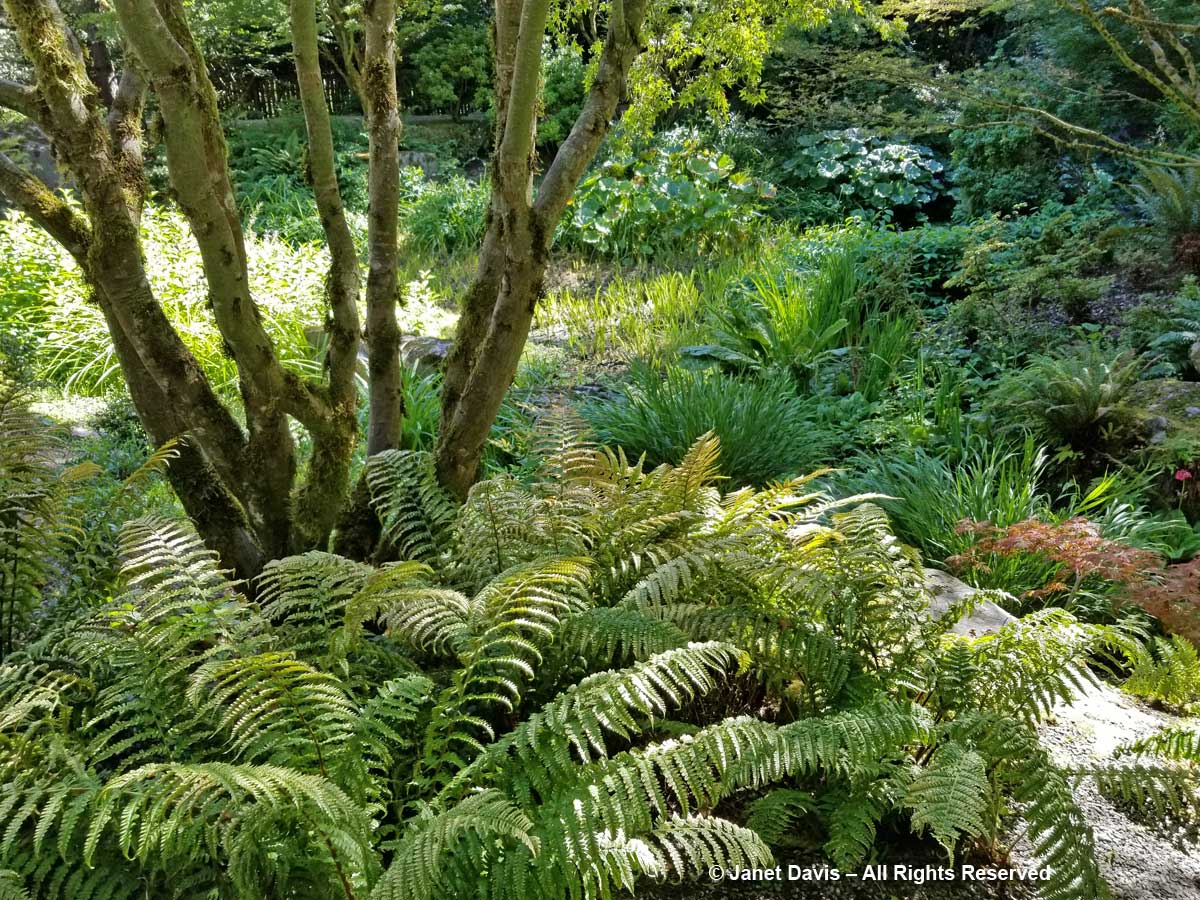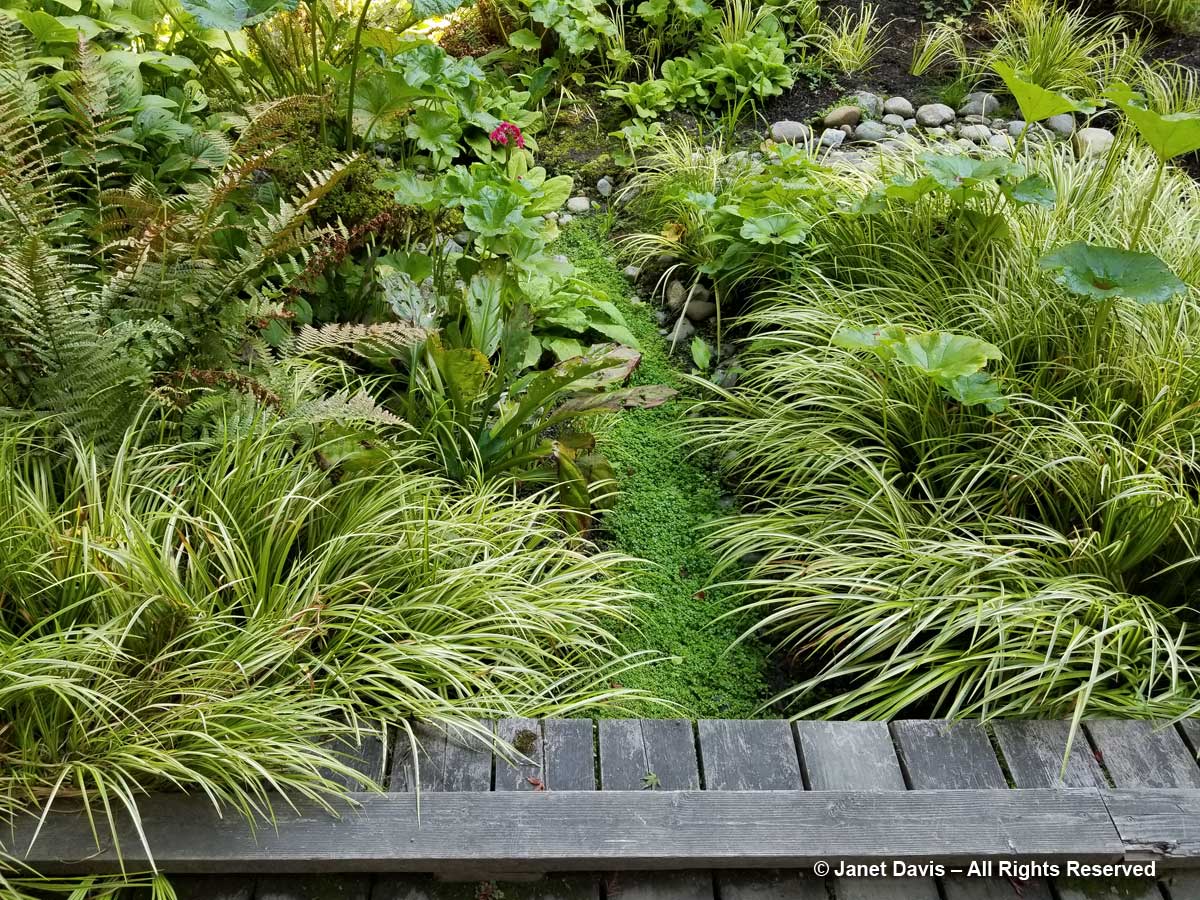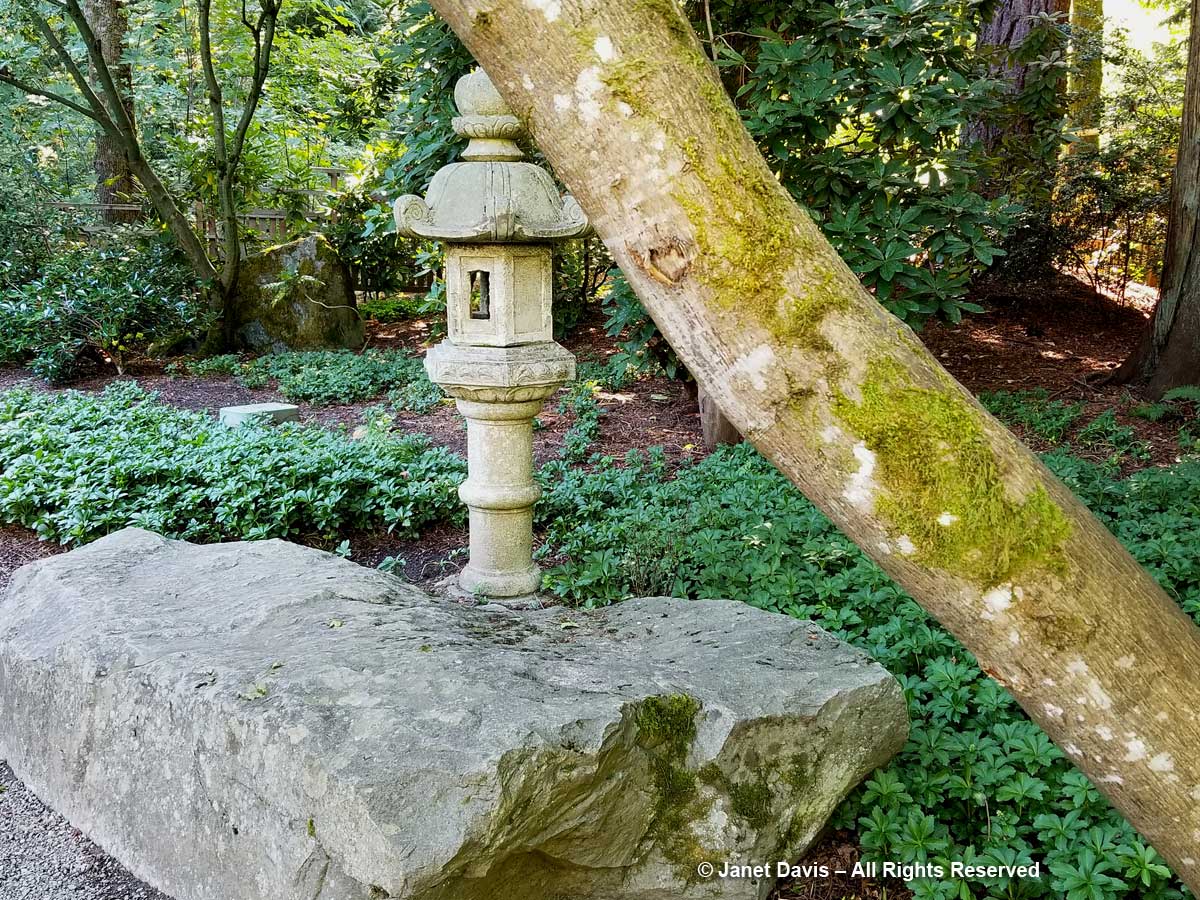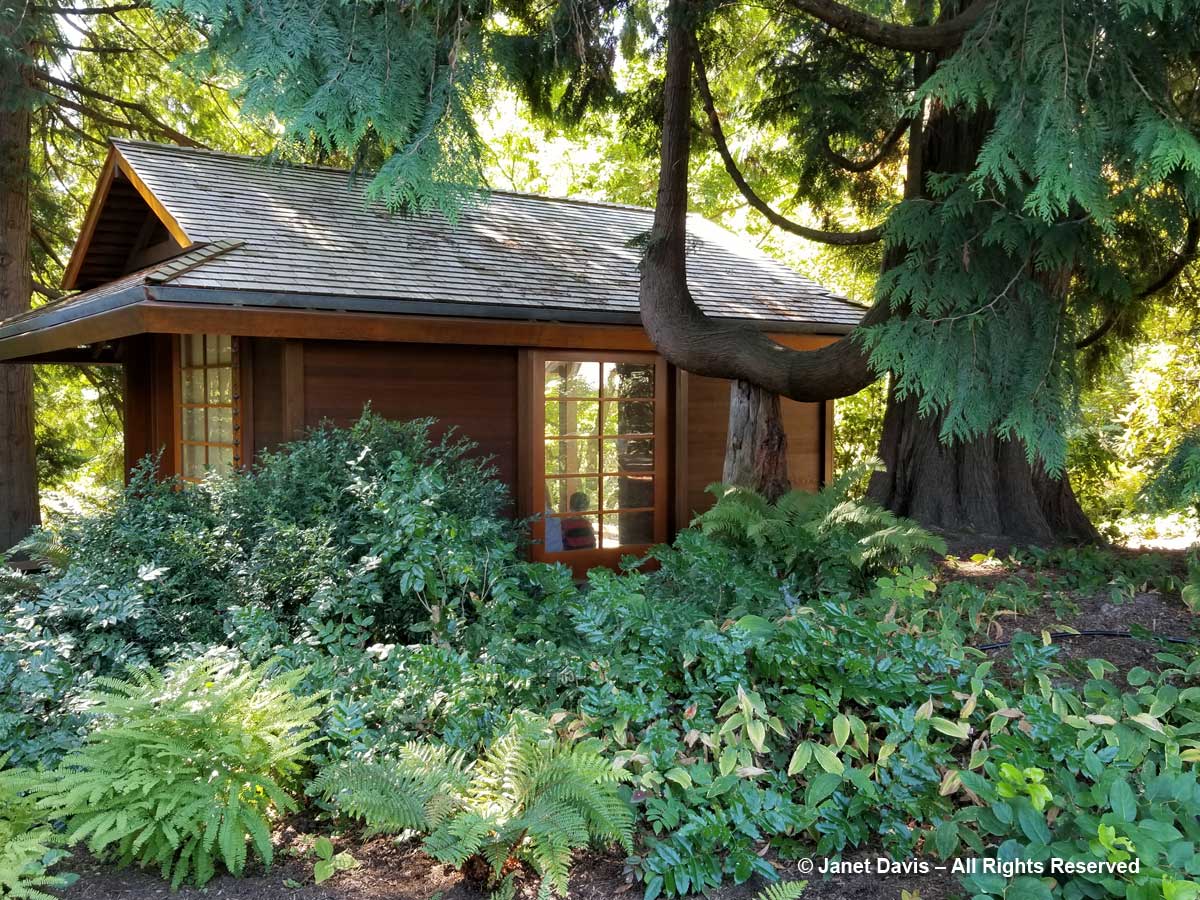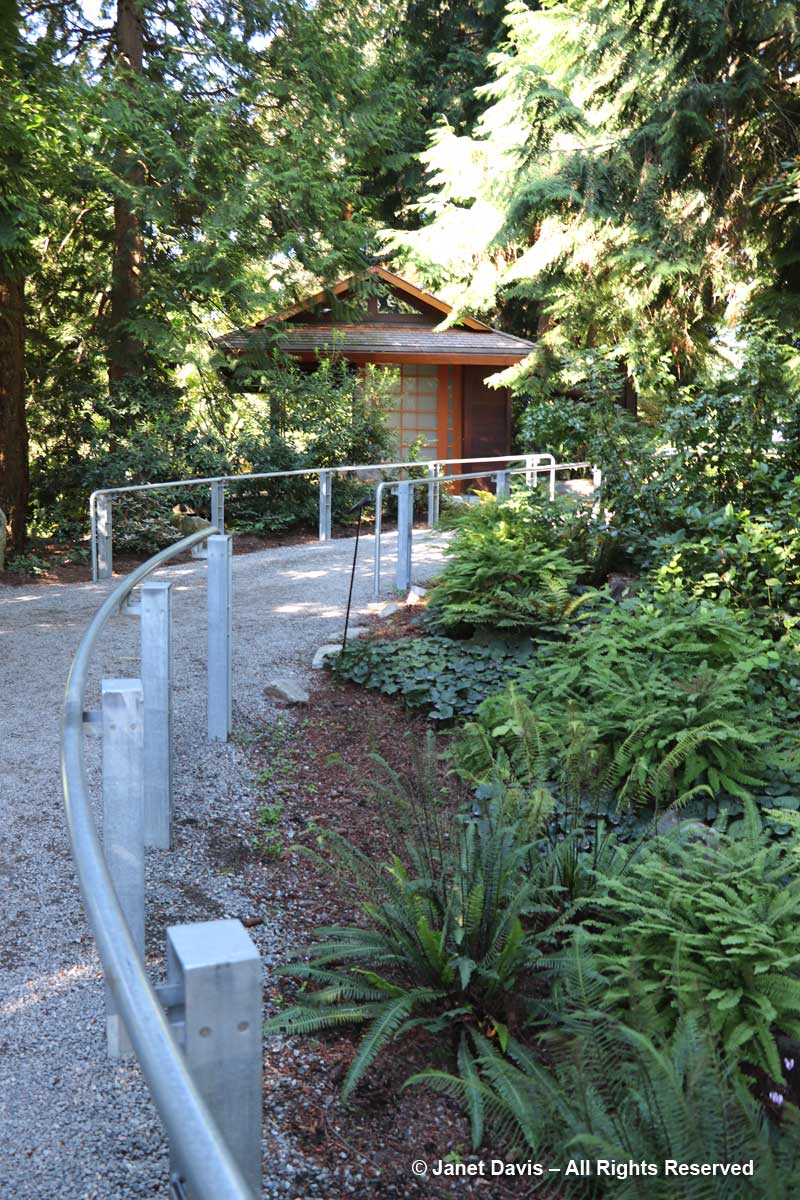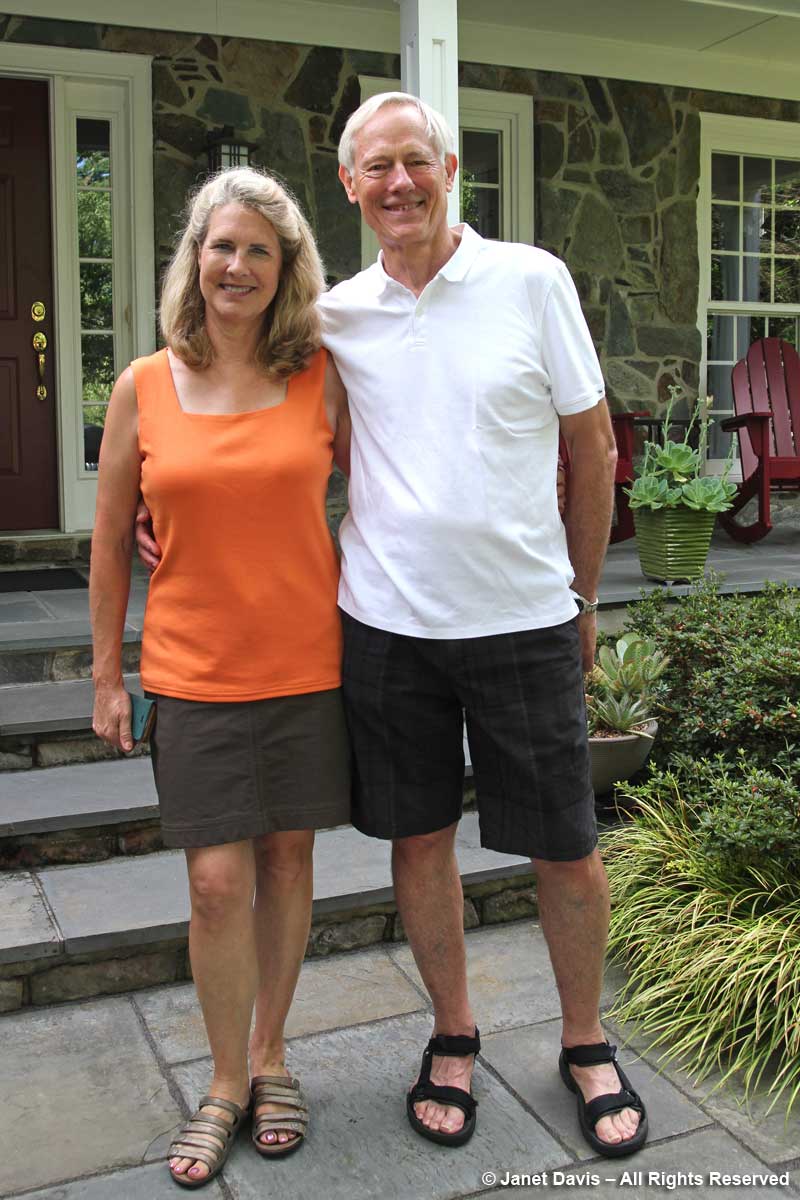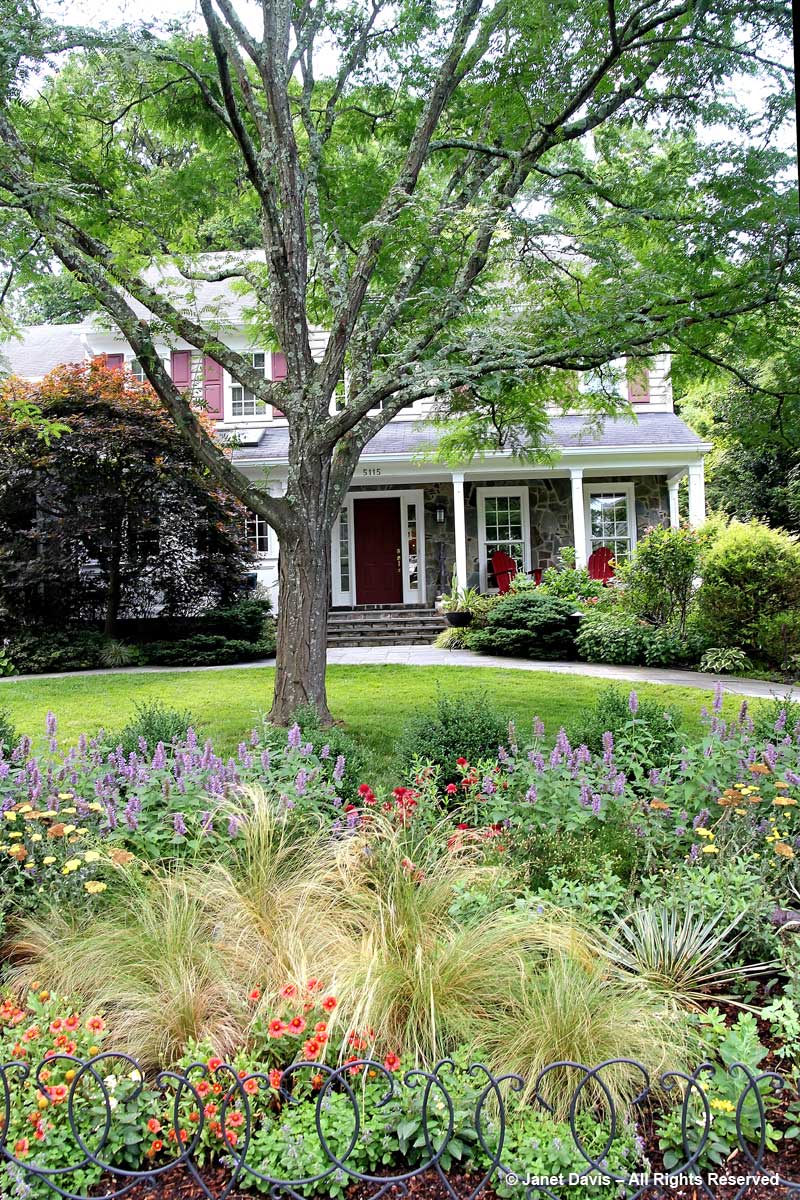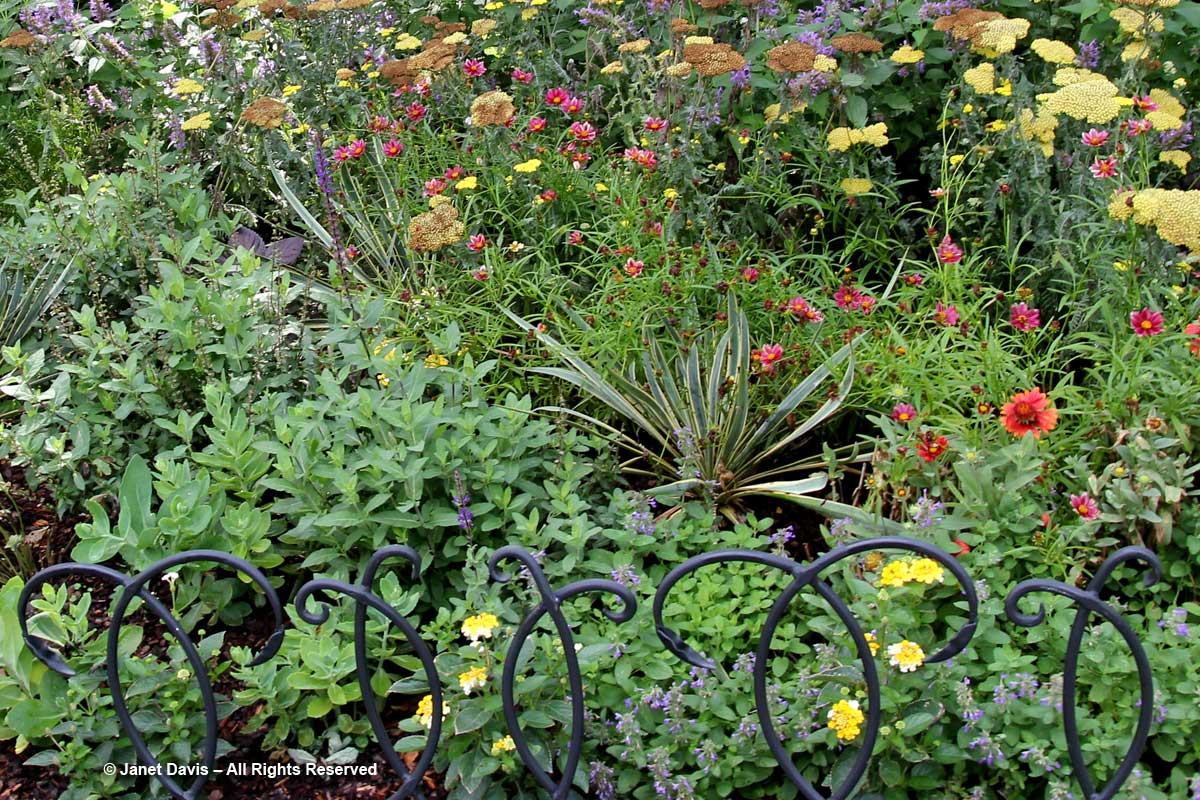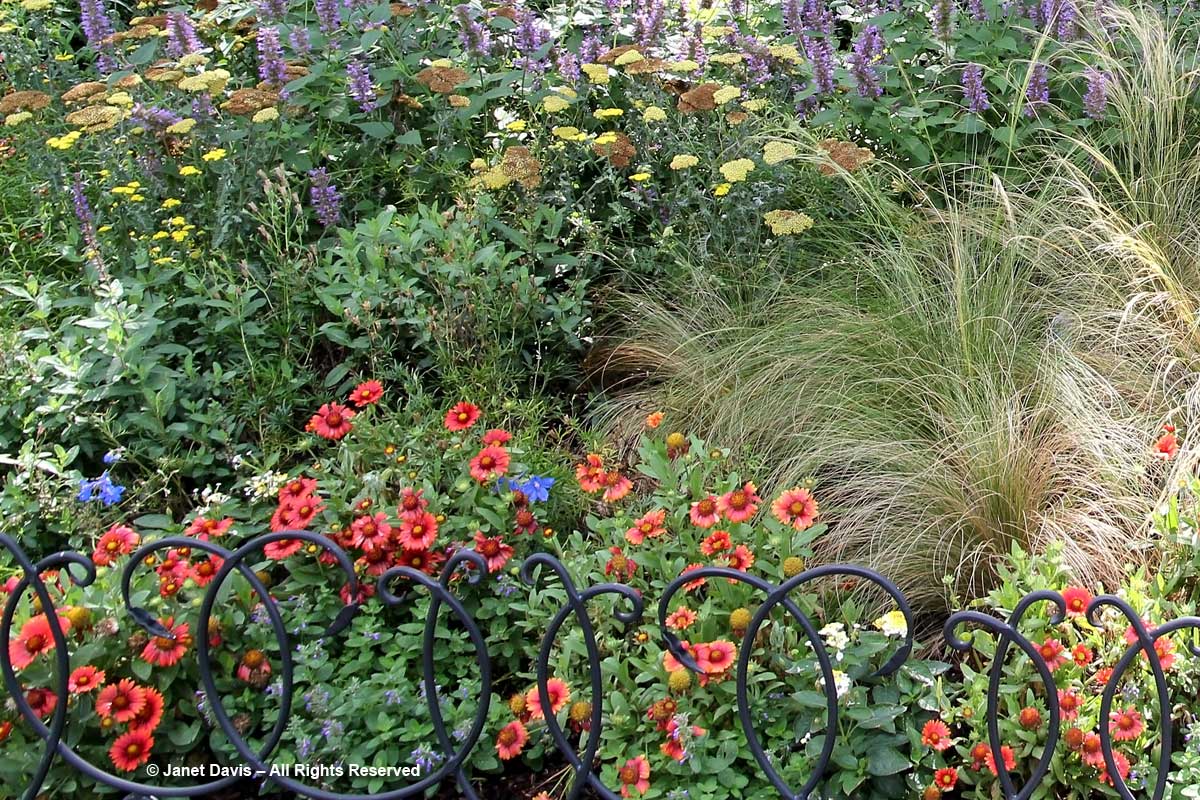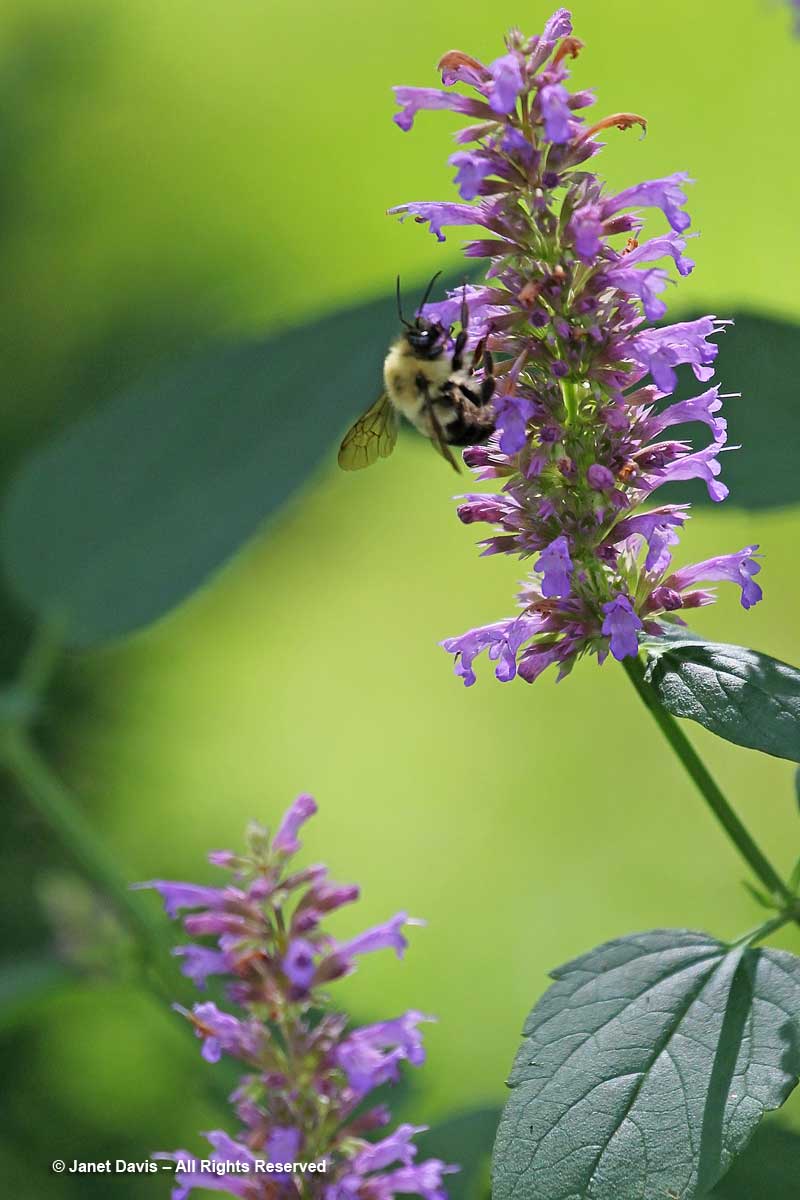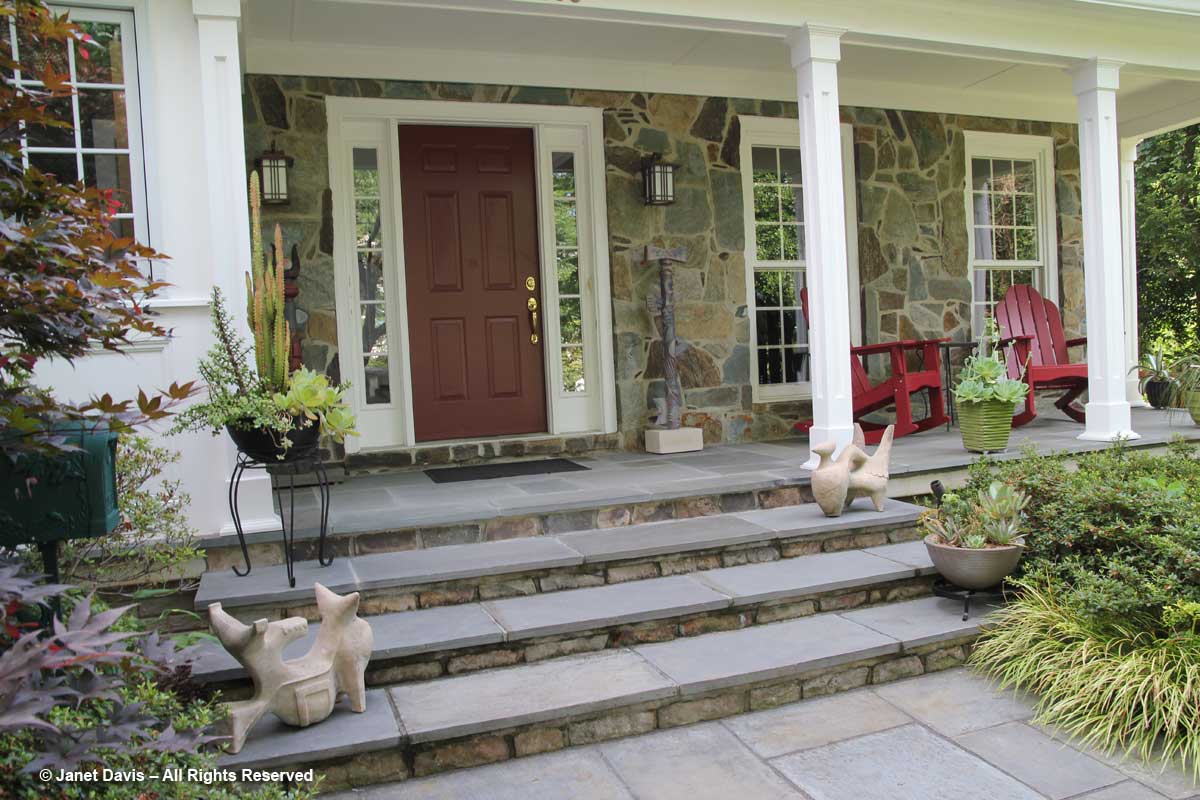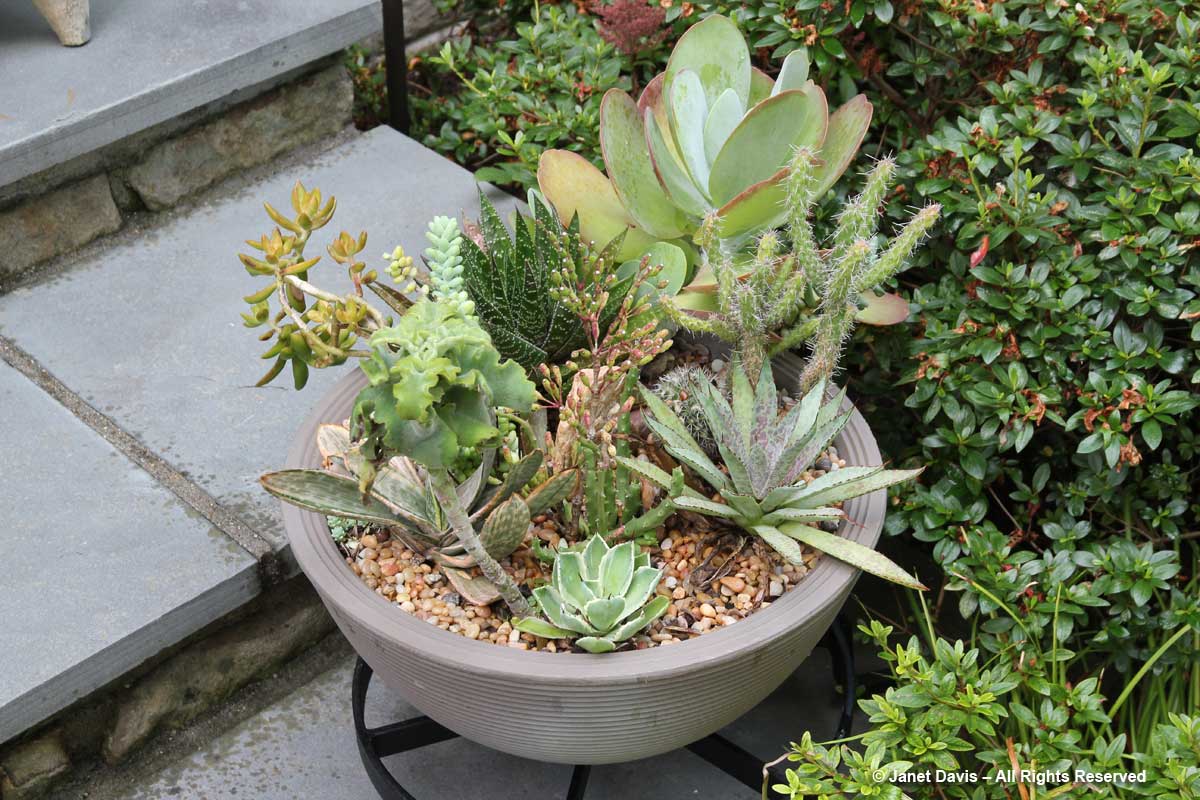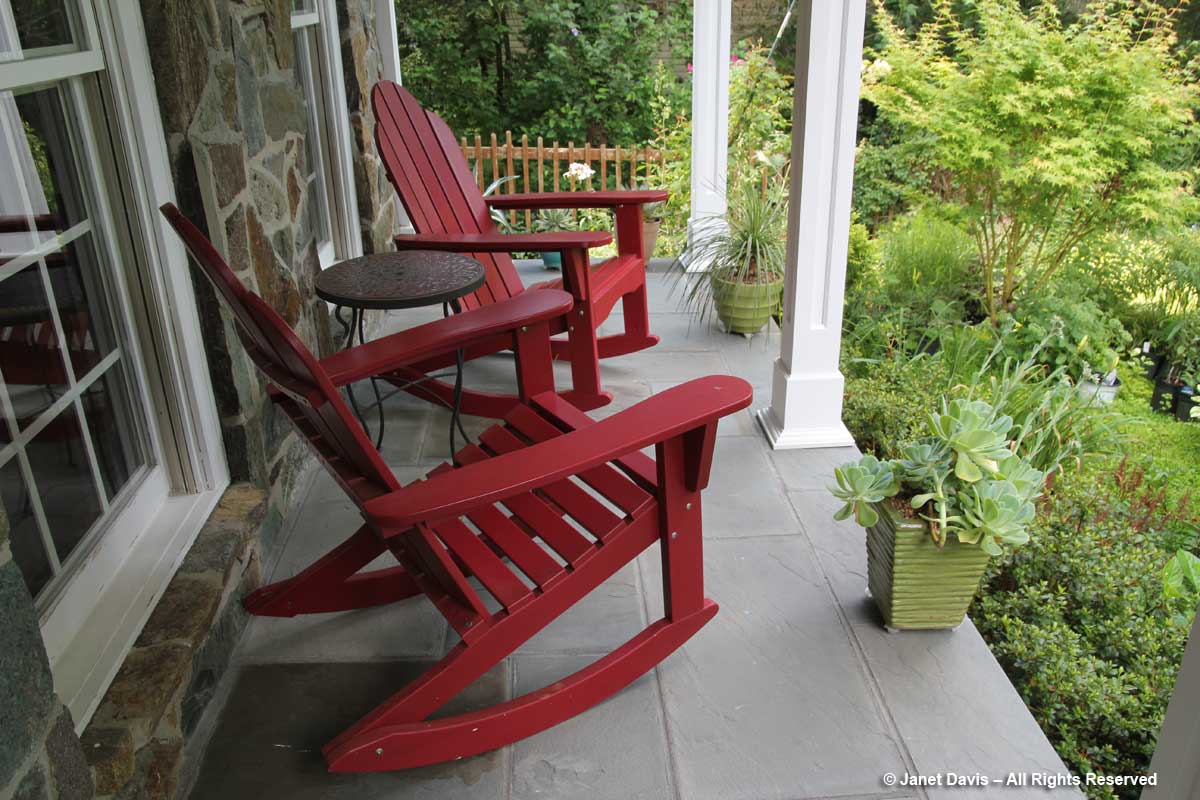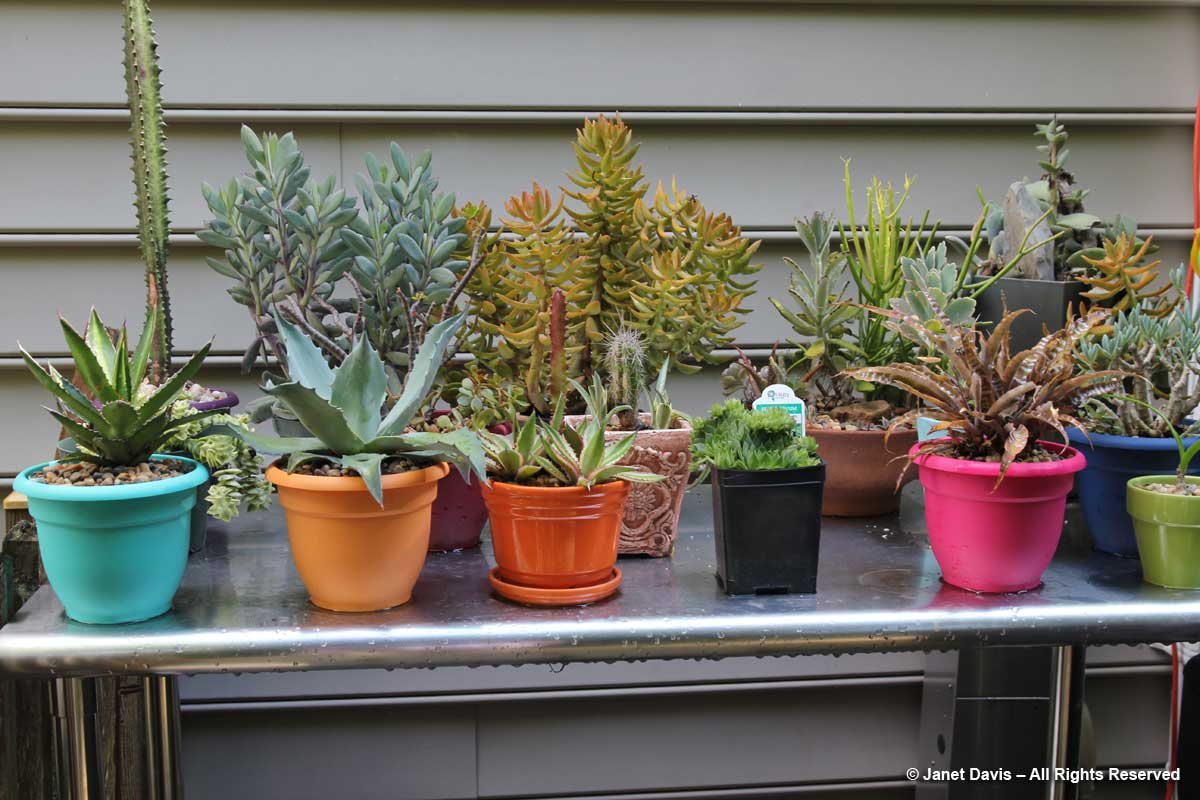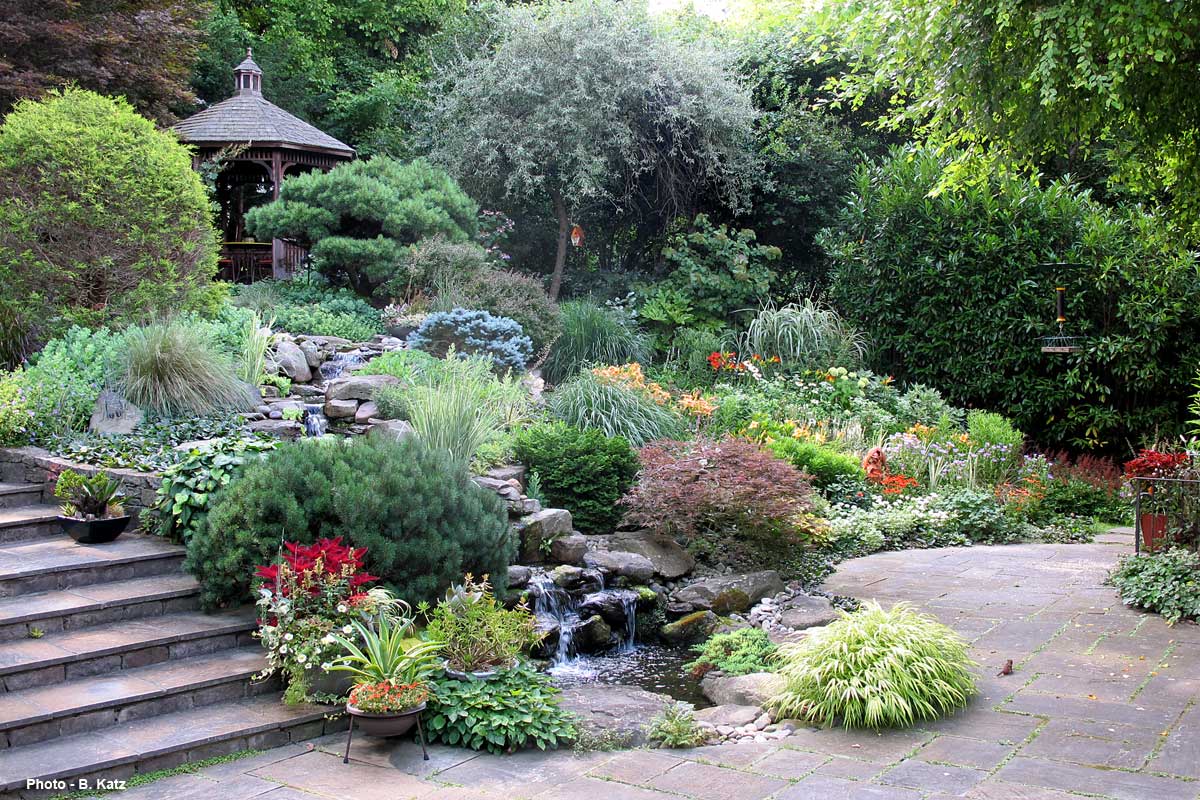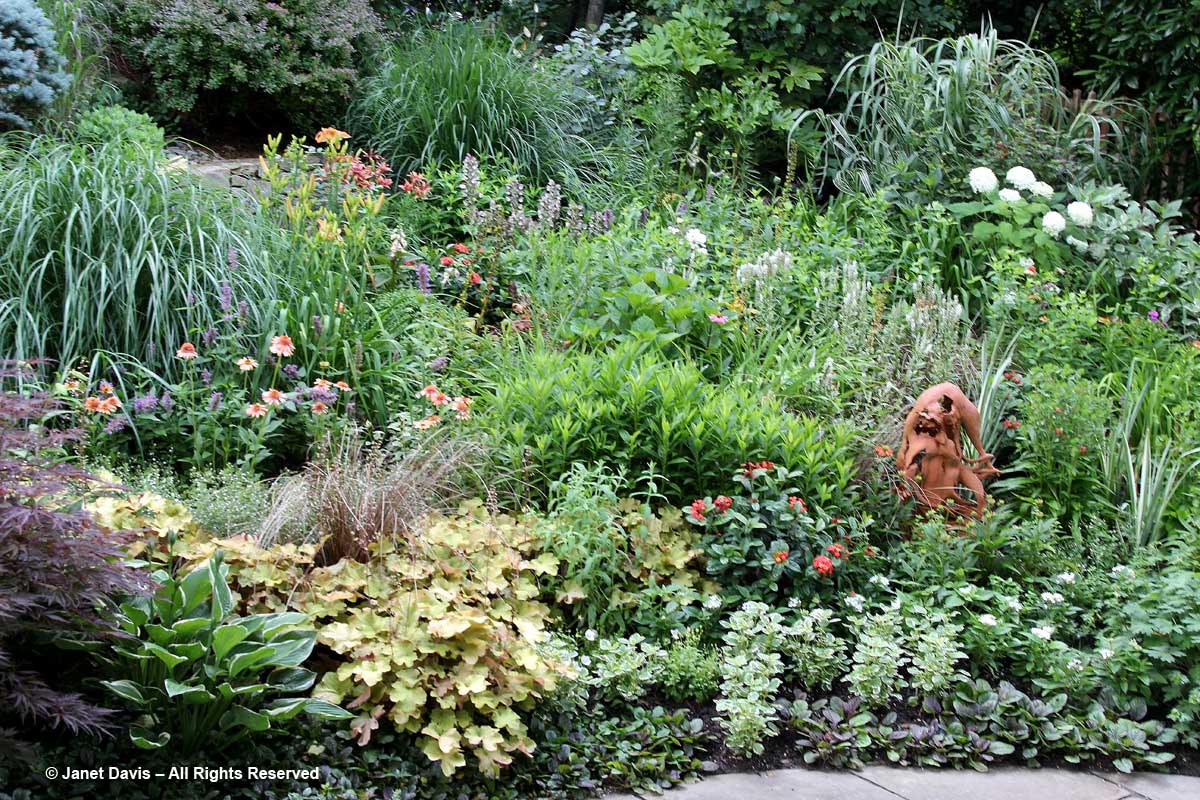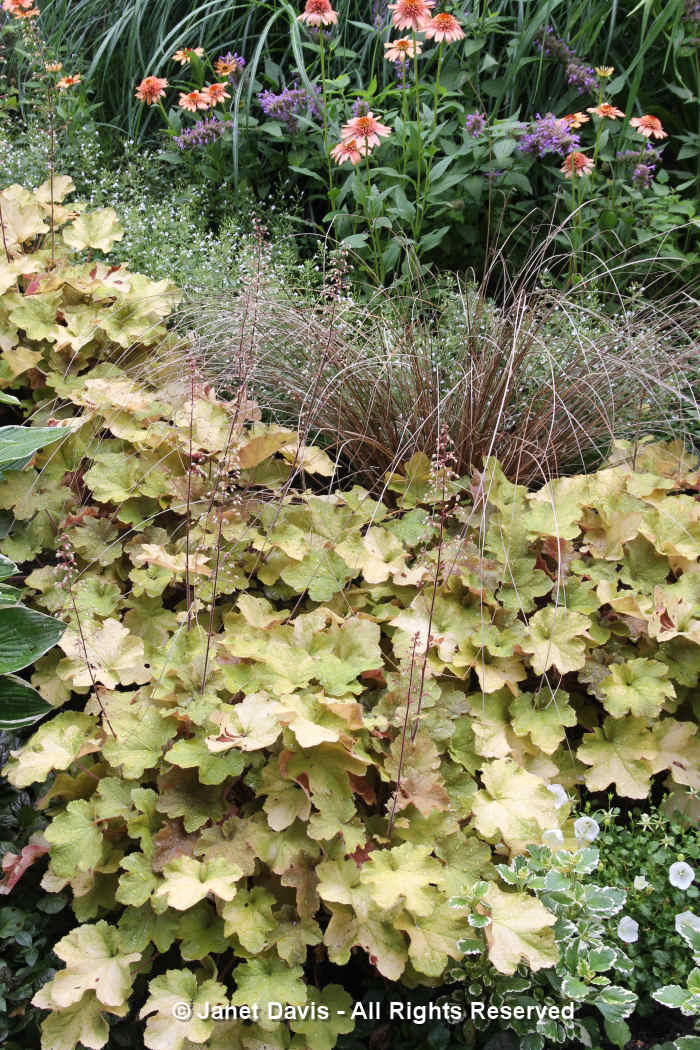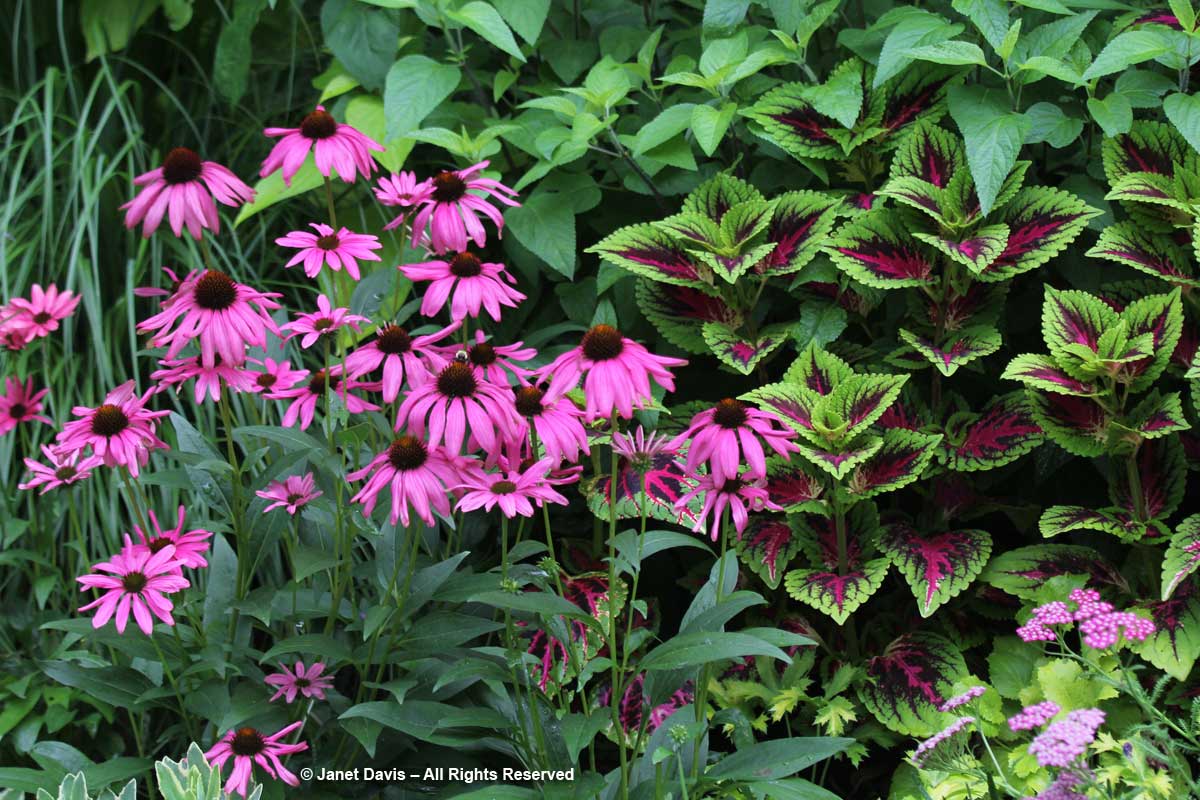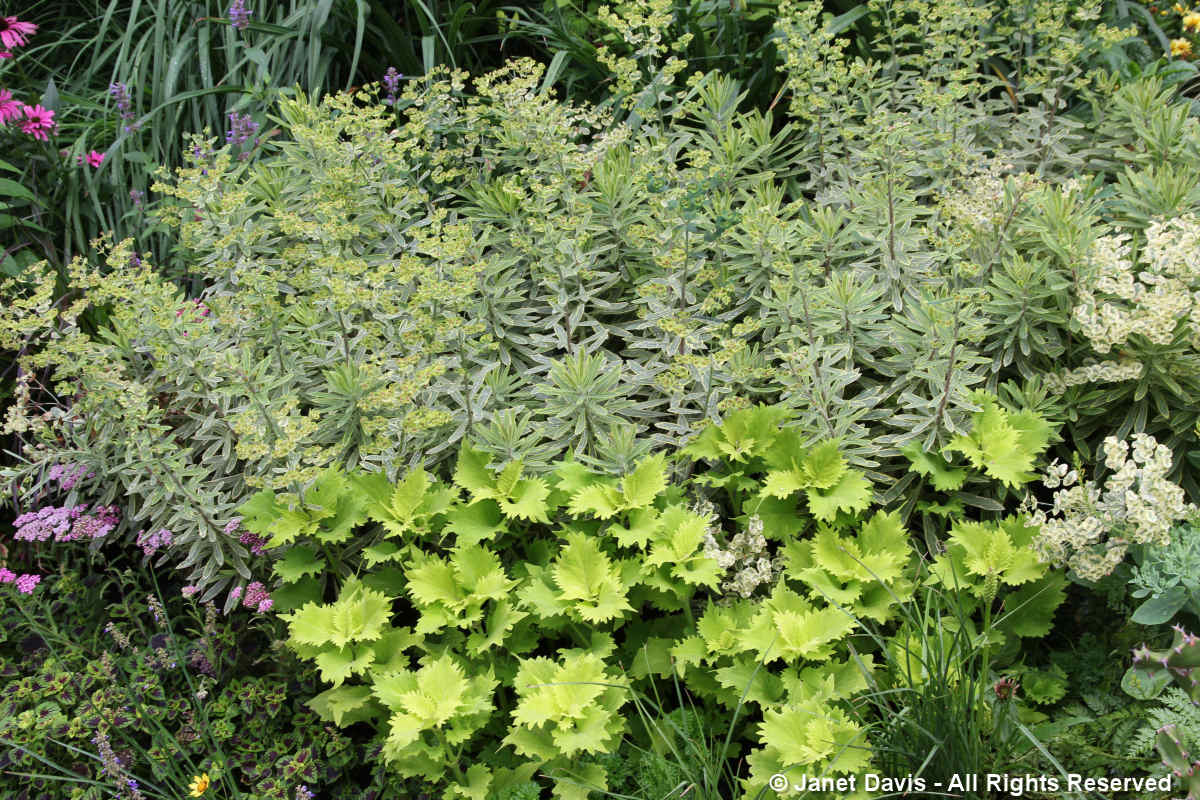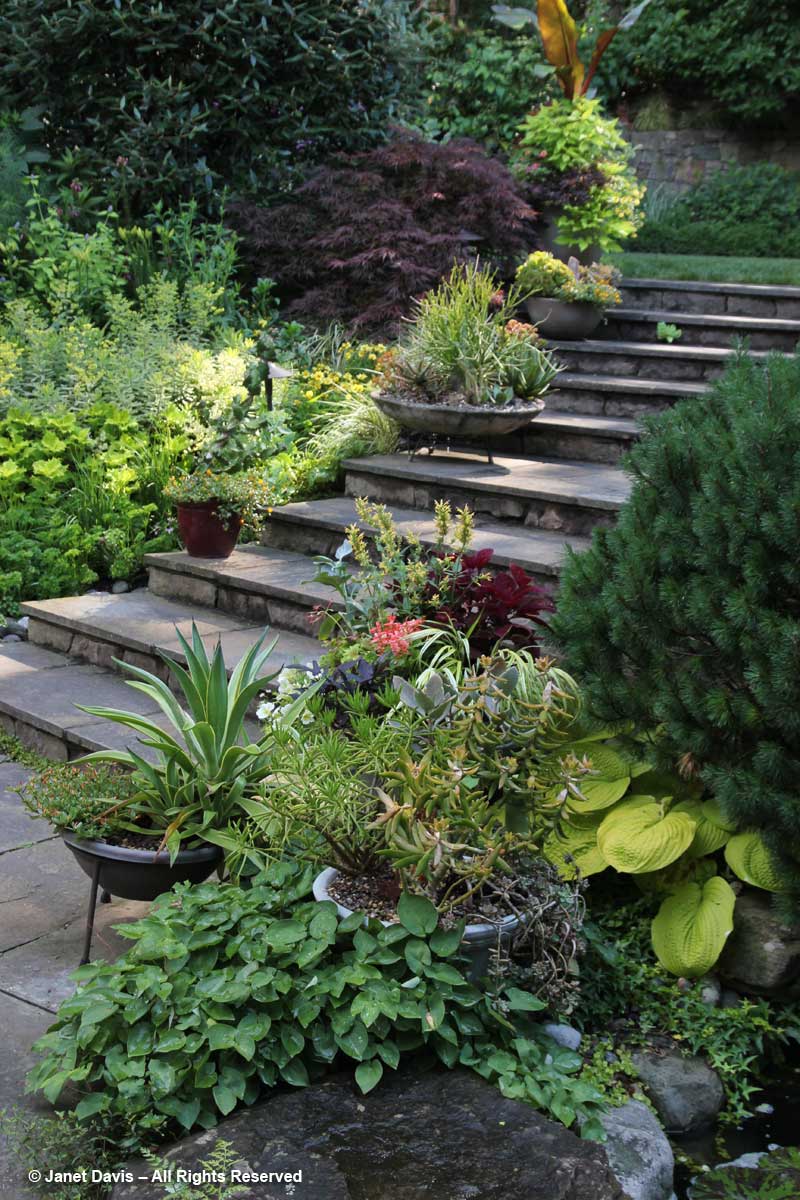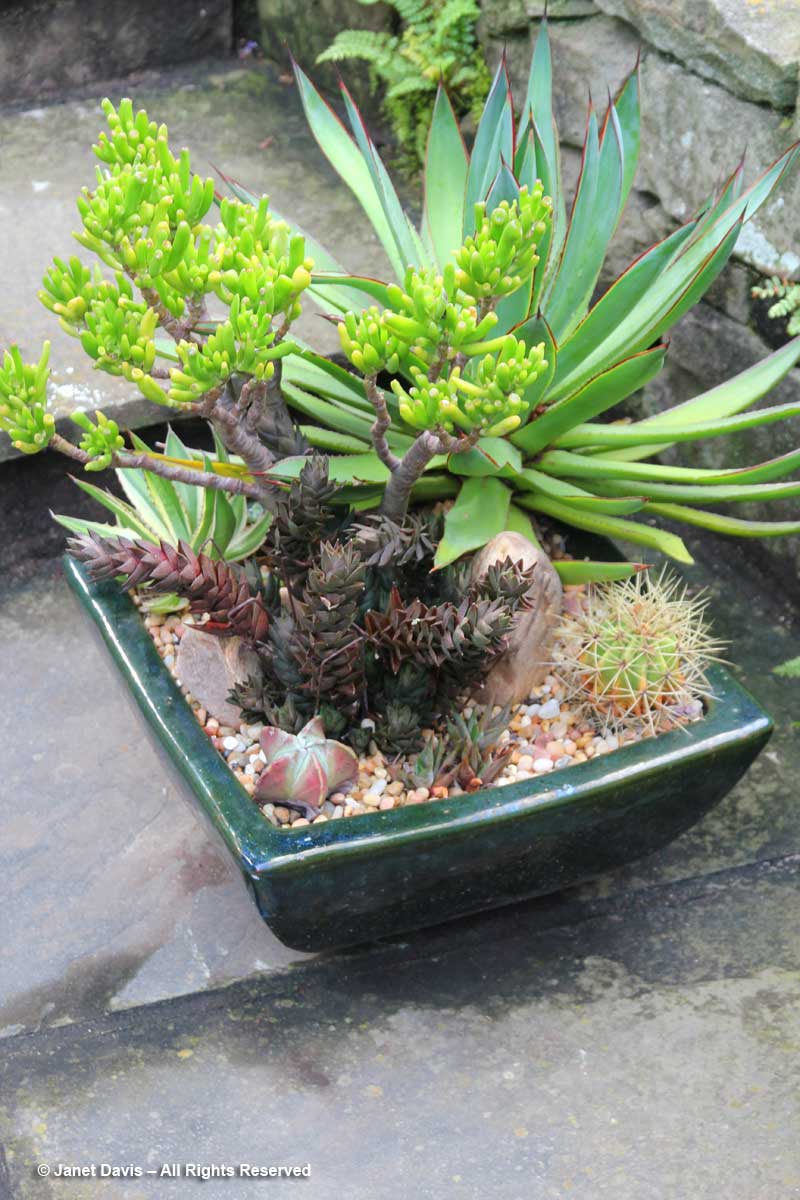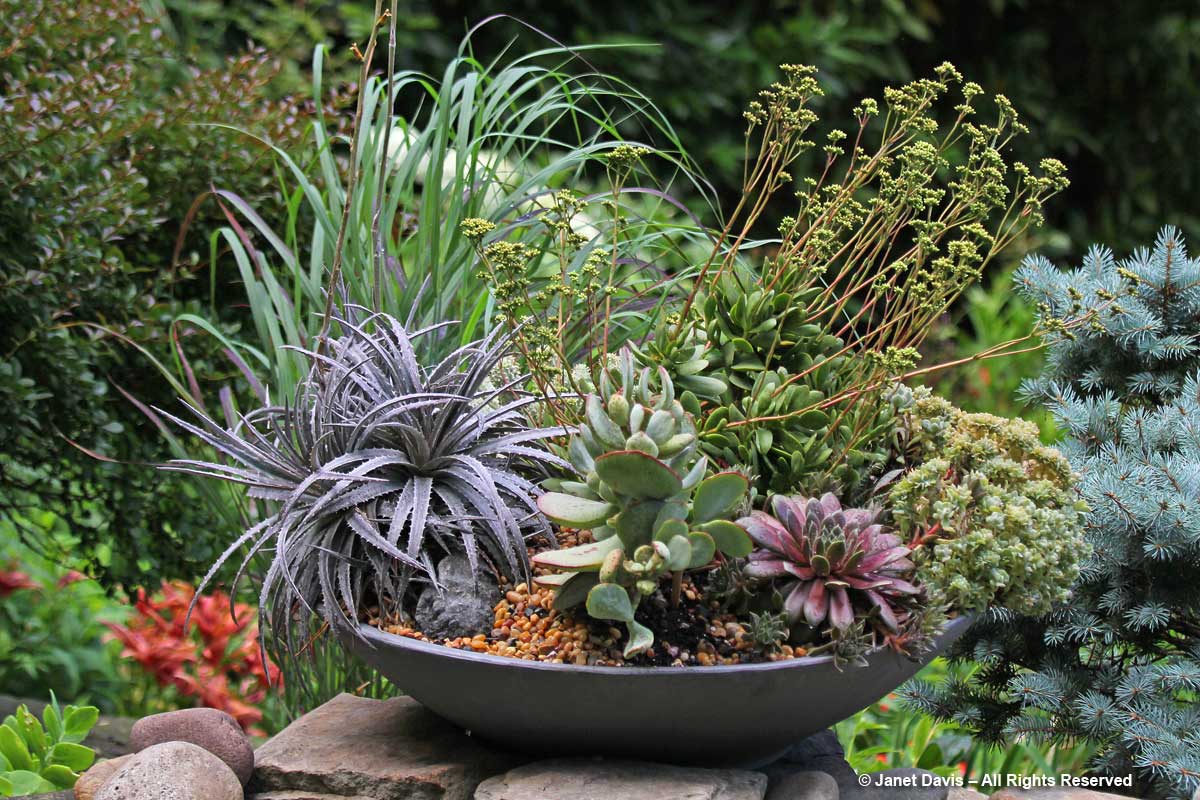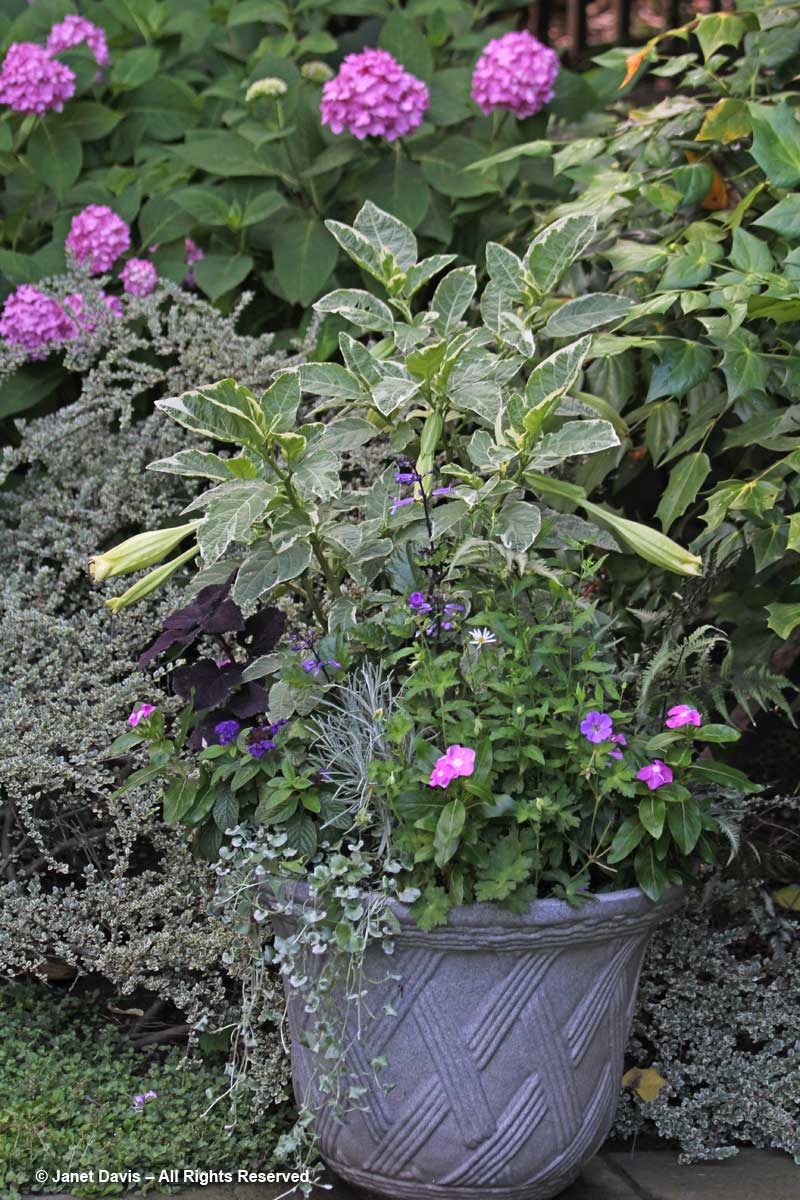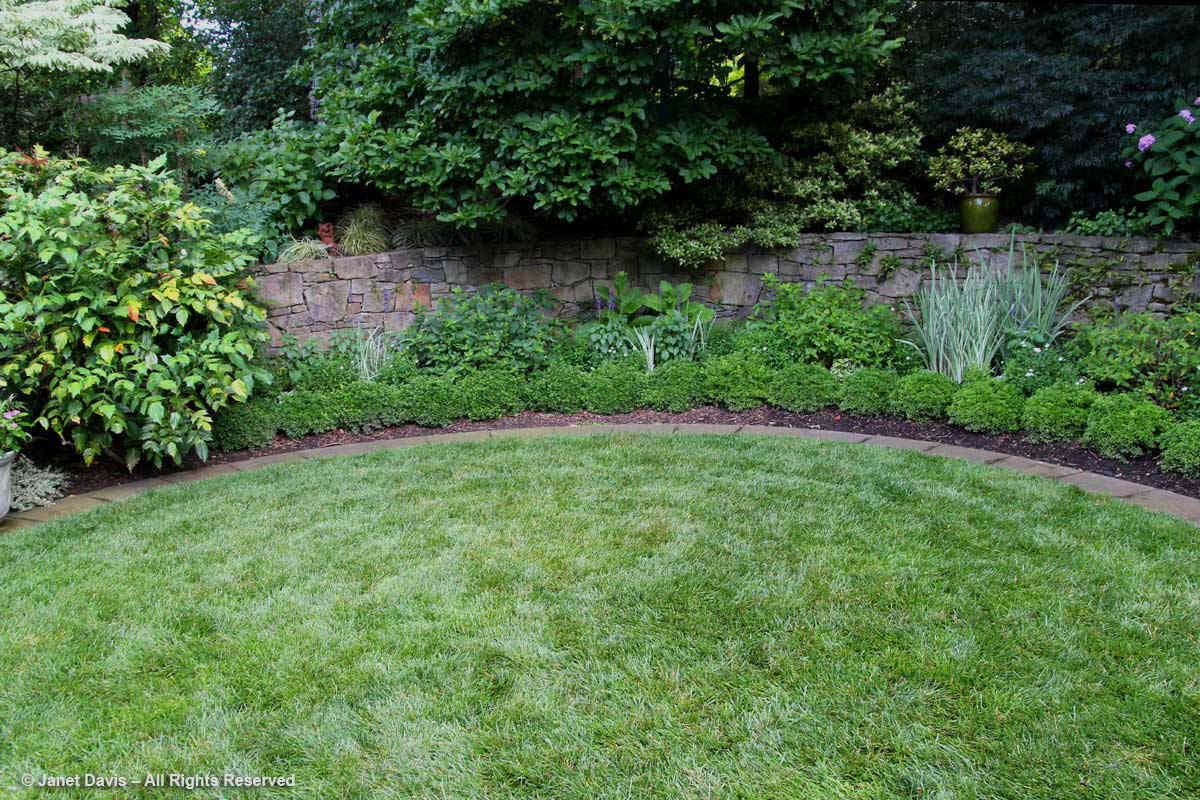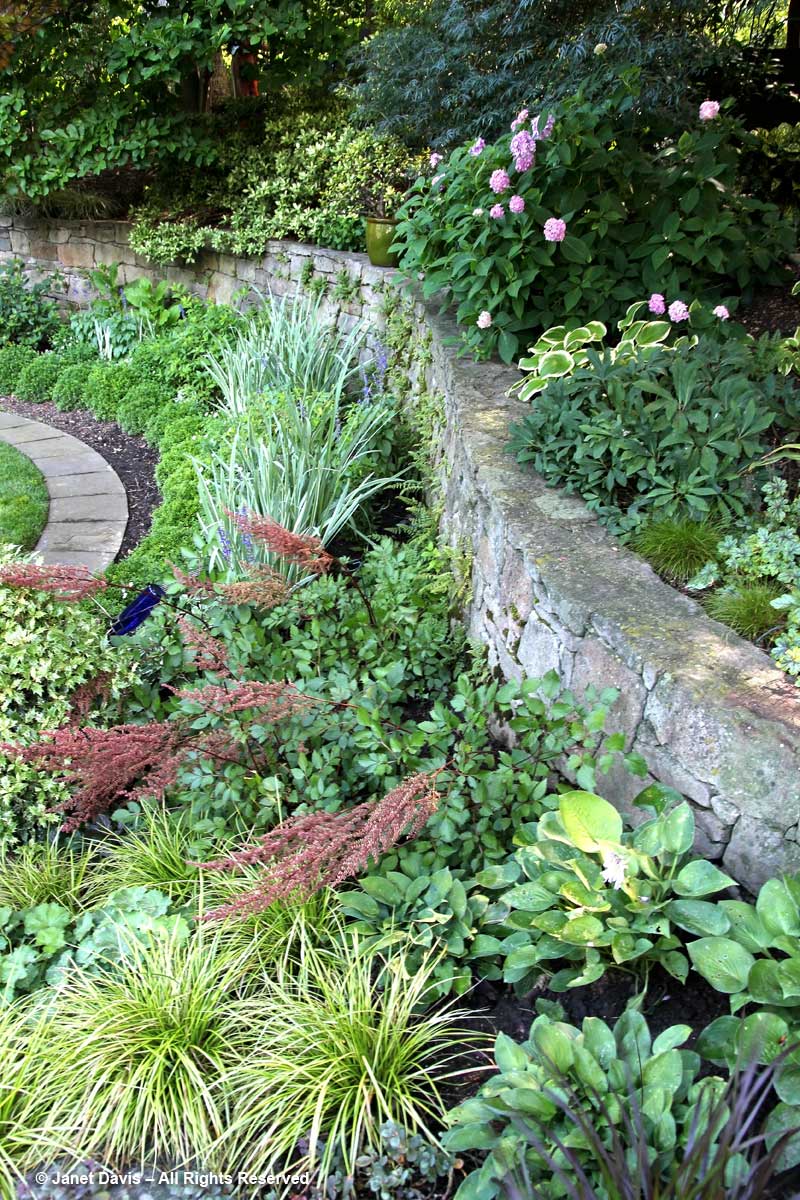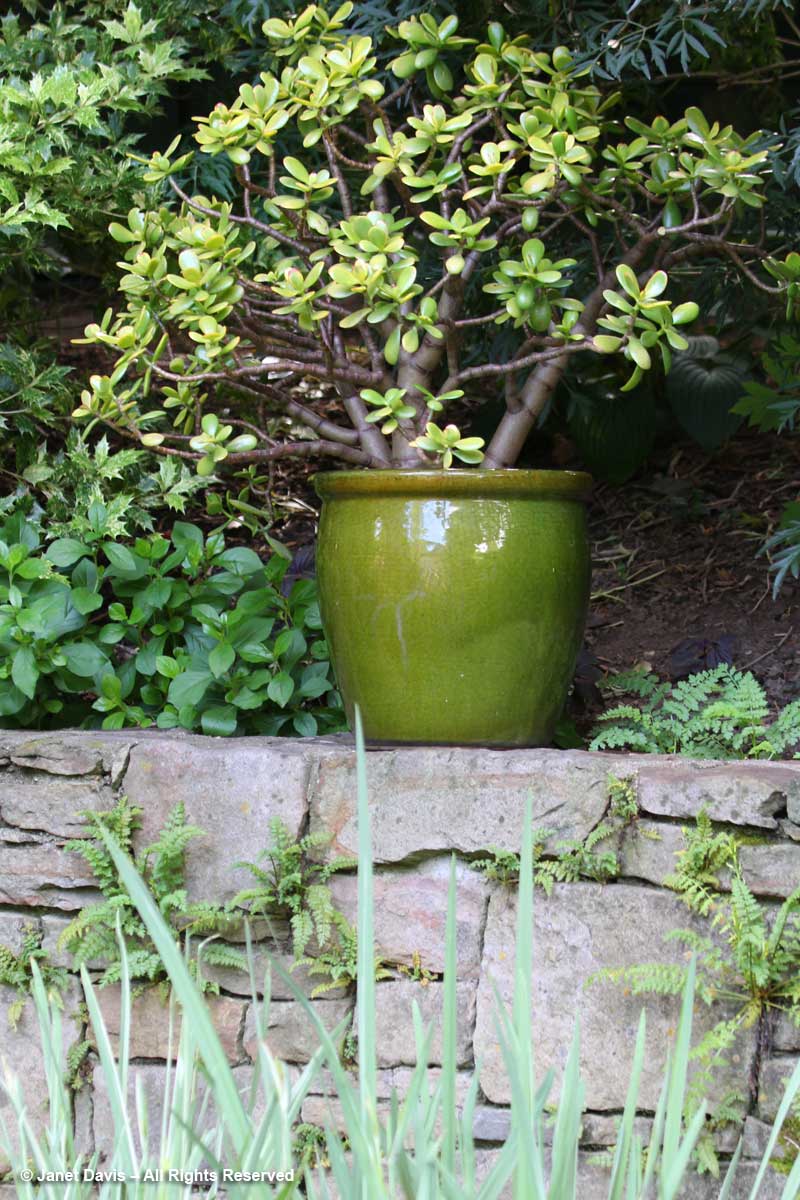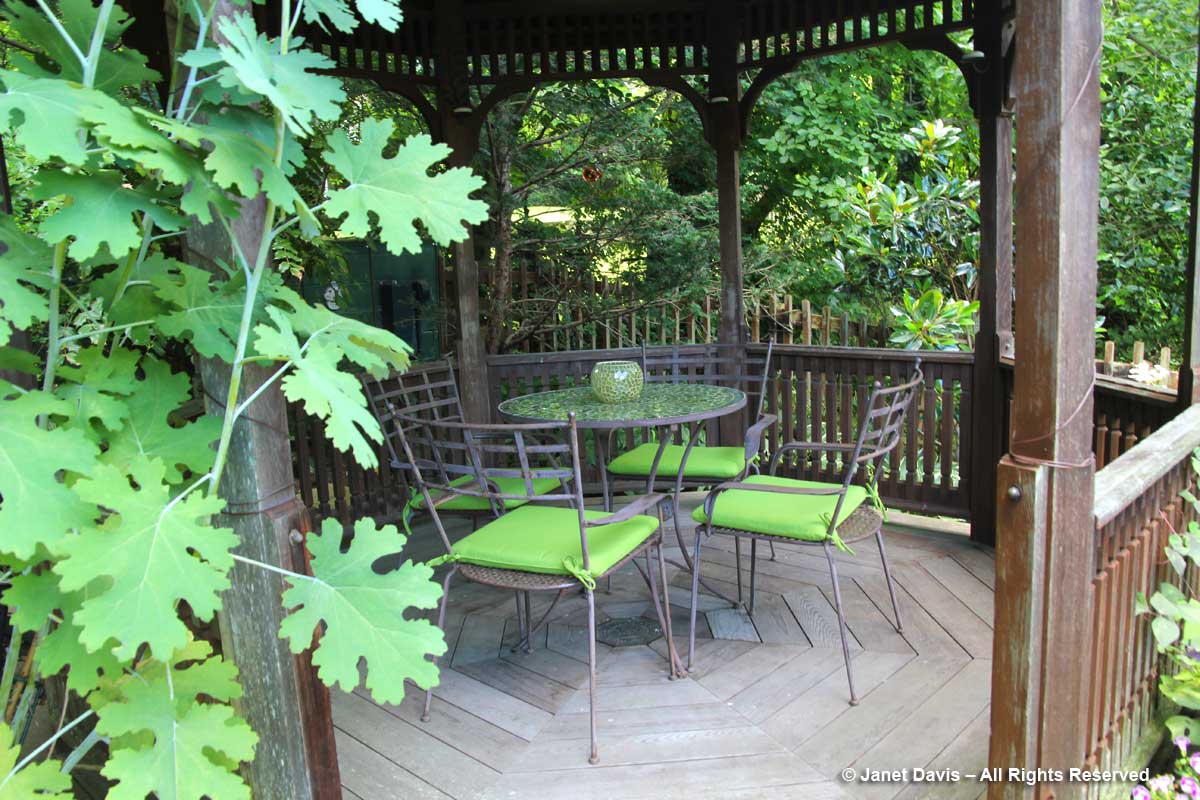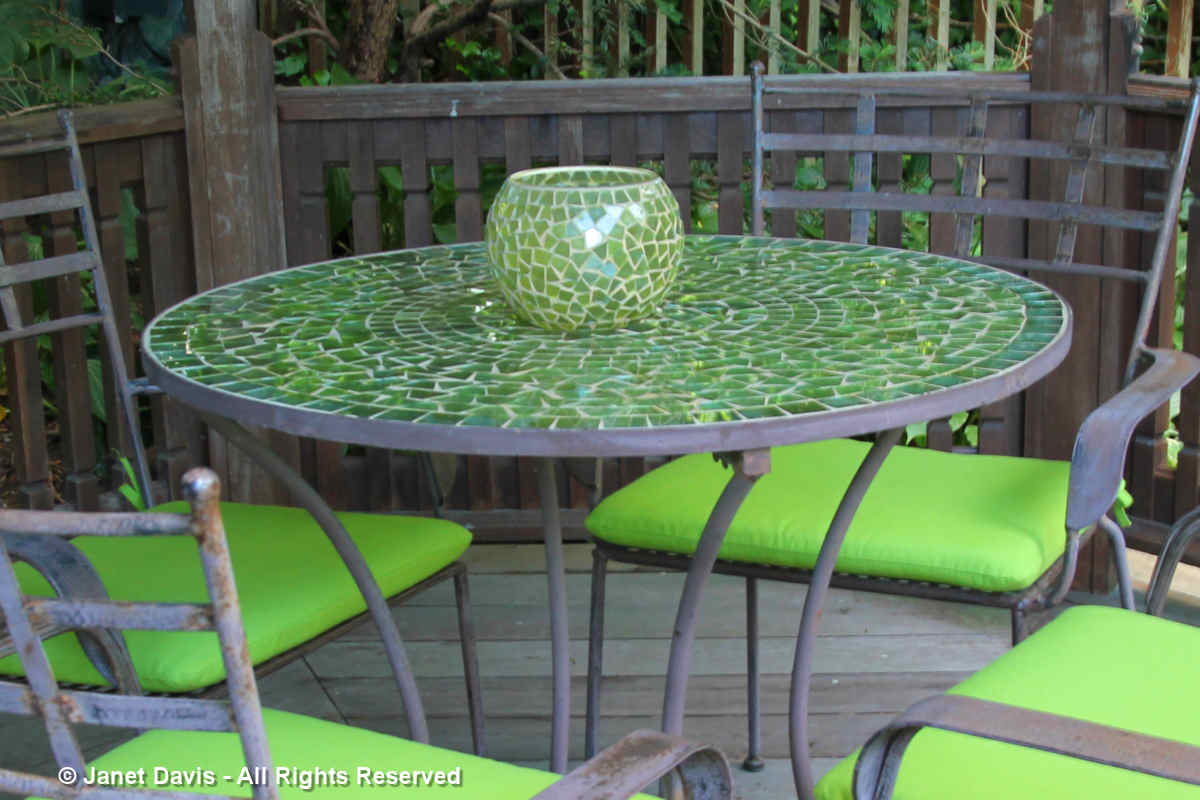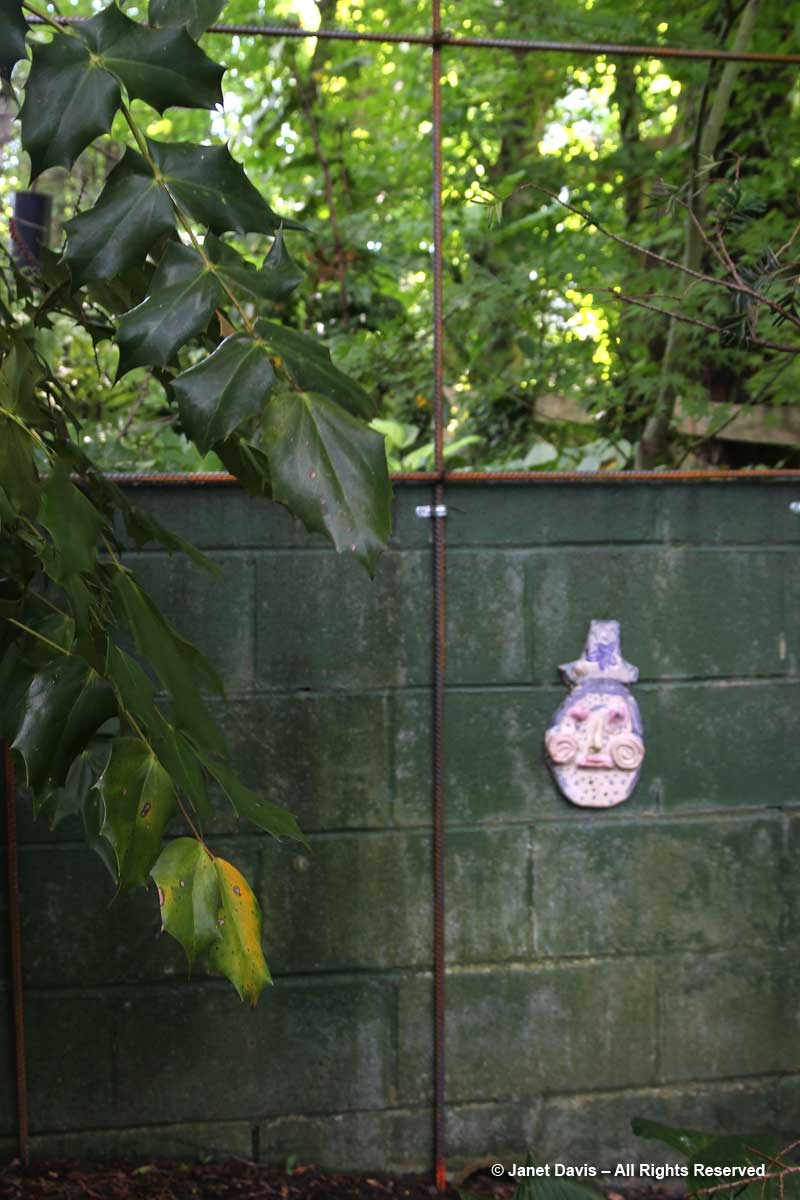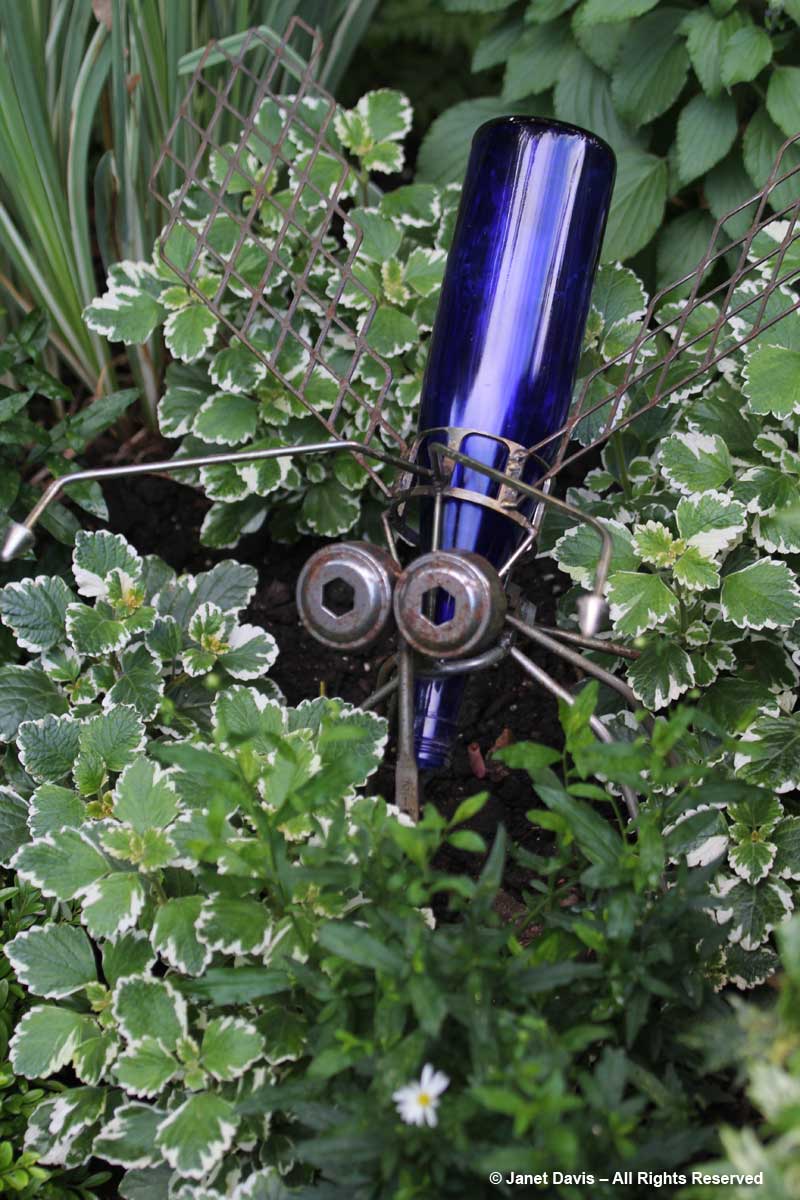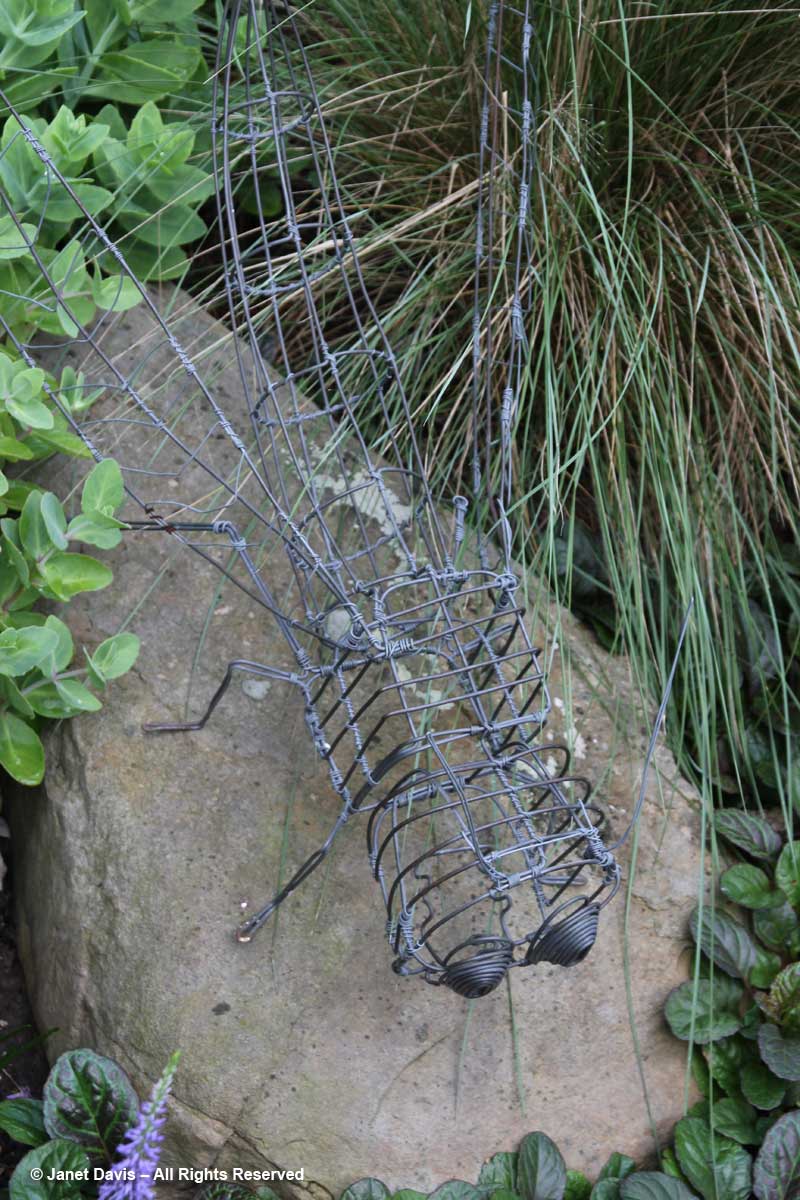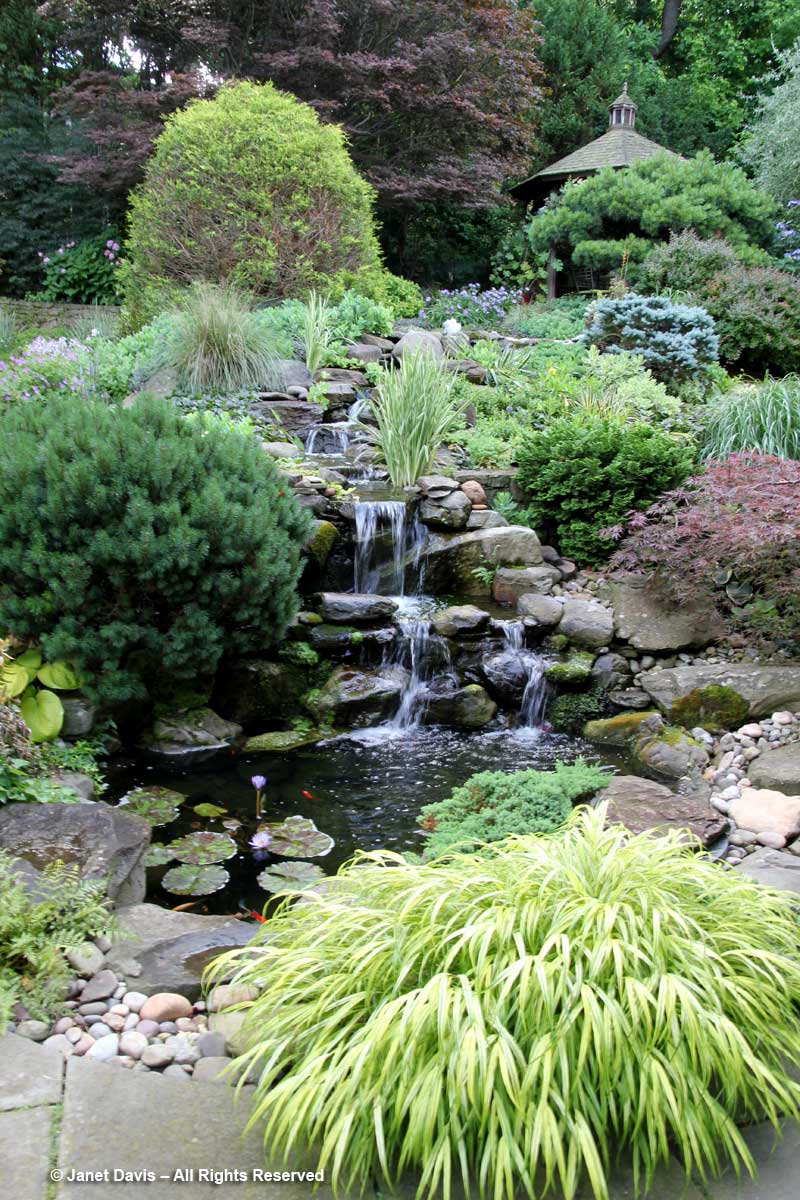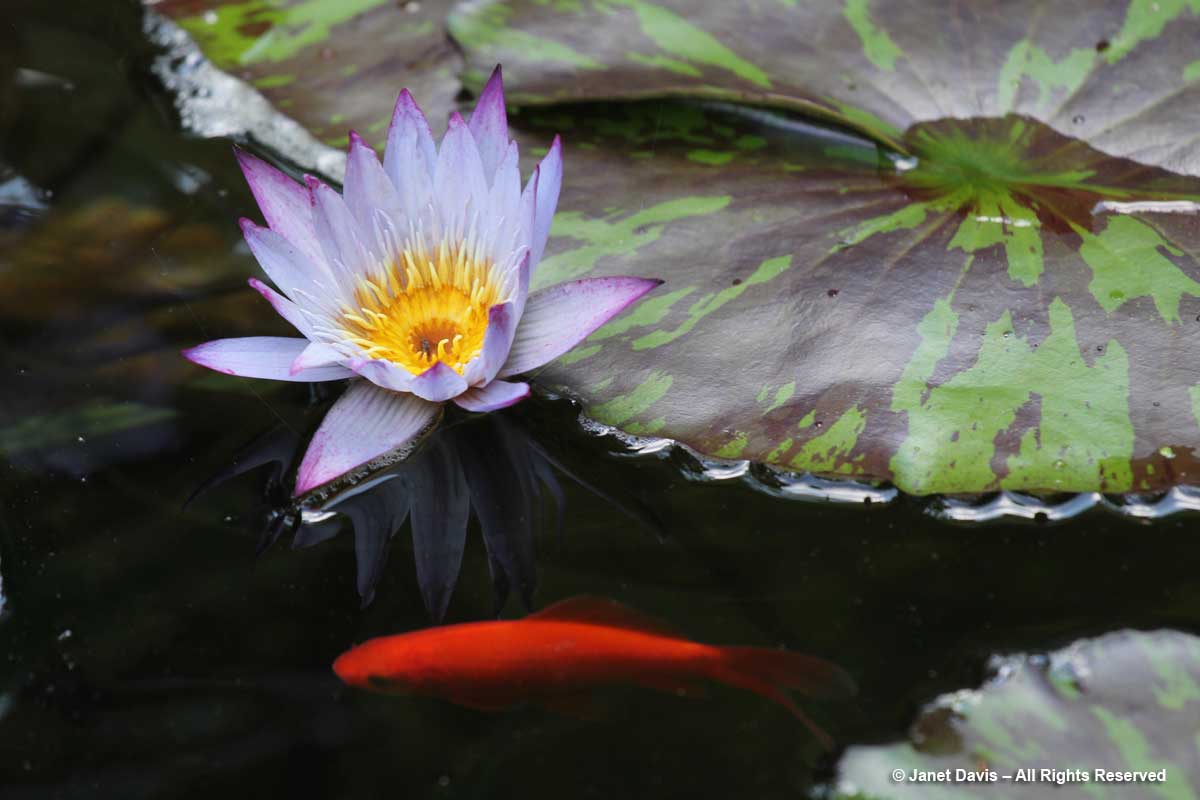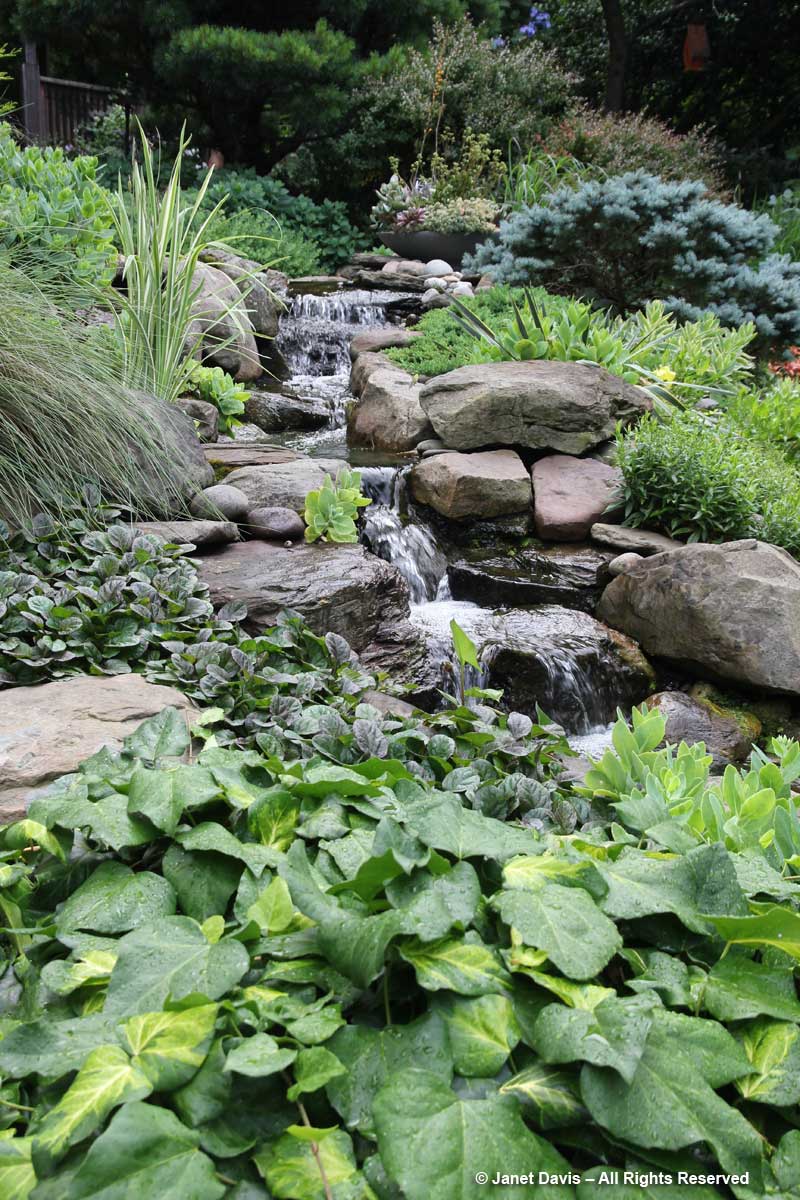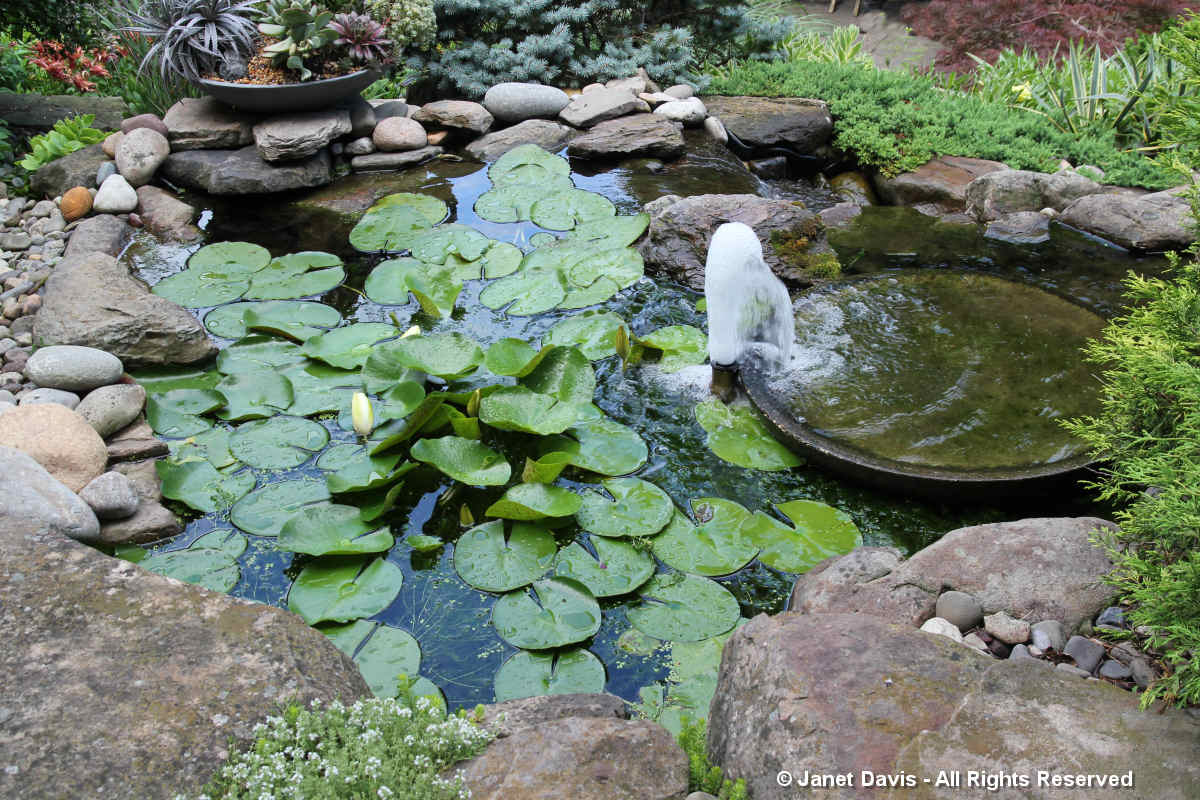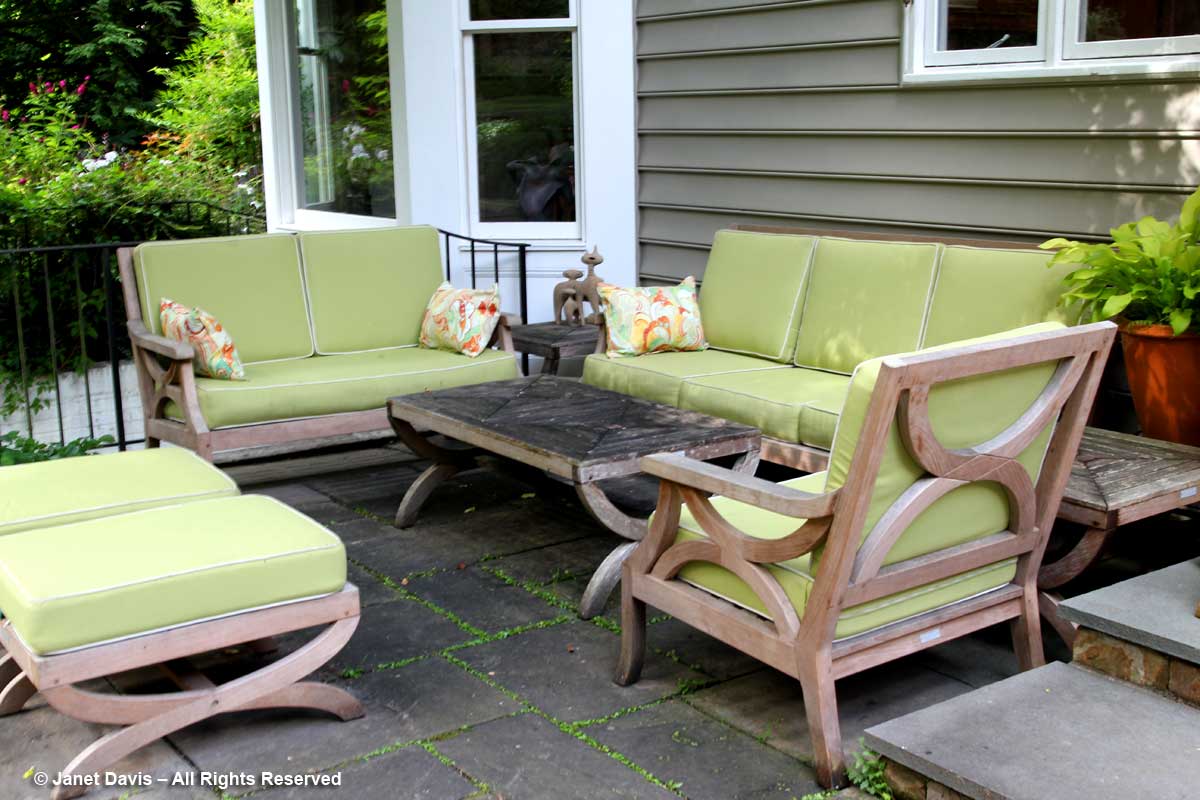On our brief stop in Seattle in September, we paid a visit to Bellevue Botanical Garden. I had been to the garden years earlier and it was still enchanting — if only the weather had cooperated (she says, with a wink). For unlike most people who revel in a warm late summer day without a cloud on the horizon, photographers tend to gaze skyward hopefully for the chance of overcast – even a light sprinkle – because midday sunshine creates difficult, contrasty light in a garden. Nevertheless, that’s what we had and I was resigned walking in that I would be focusing on shadier spots in the garden.
This is a map of the garden, which I modified to show both the small keys and actual sections in one image. From their website a bit of history: “The Bellevue Botanical Garden Society (BBGS) was founded in 1984, by Iris and Bob Jewett, with the idea to build and support a free public botanical garden for their local community. It came to fruition when Harriet and Cal Shorts generously donated their home and 7.5 acres to develop the Bellevue Botanical Garden (BBG). The Society was then incorporated in January 1986, as a non-profit organization. Beginning in 1992, and in partnership with the City of Bellevue, more than 45 acres has since been added to the Garden. Today, the 53-acre Bellevue Botanical Garden is a world-renowned community treasure for everyone to enjoy”. 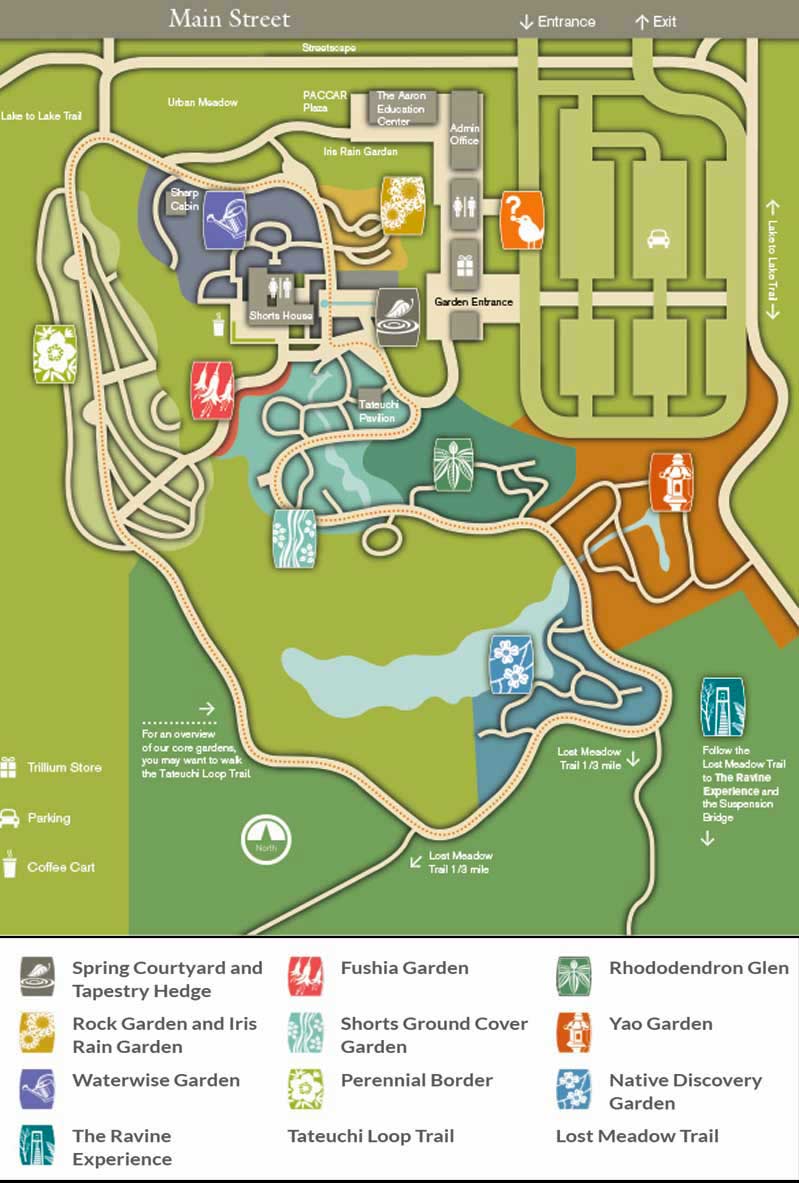
The entrance walkway features a unique in-ground rock fountain which feeds a rill that flows along the pathway.
Beyond is an interesting slatted wall fountain.
If you have a cellphone, you can use the Tap or Scan app for the garden.
The Fuchsia Garden has been maintained by Seattle’s Eastside Fuchsia Society since 1992. I could have spent a long time here shooting macros, but we had a big driving day ahead, so I satisfied myself with….
…. just one or two close-ups. This lovely blossom is ‘Delta’s Sarah’.
Then we were approaching the famous NPA (Northwest Perennial Alliance).Perennial Border, which is actually a series of parallel borders arrayed on a slope. Though this is an older article, I appreciated reading about the history of the border. 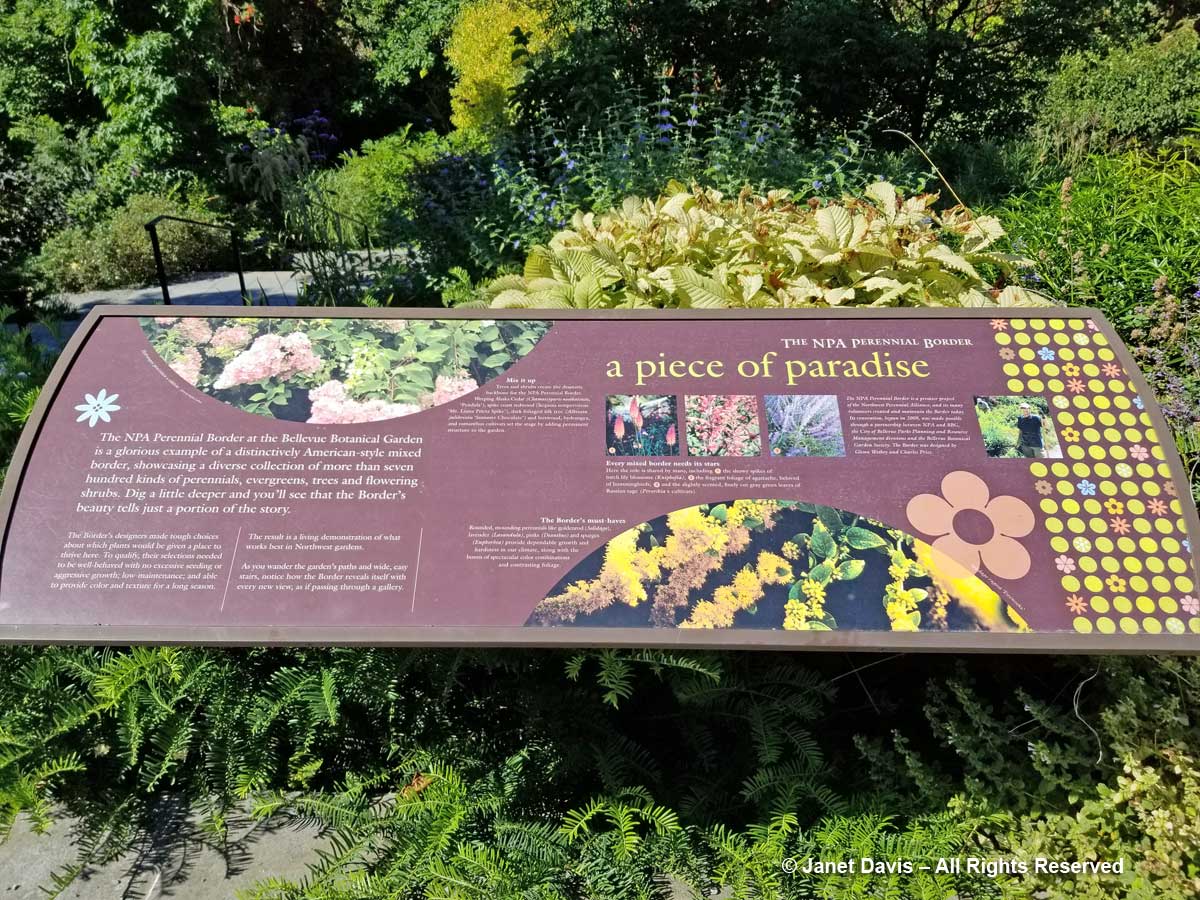
There are attractive benches throughout the garden…..
….. and interesting stacked stone sculptures (these ones in goldenrod about to flower.)
I wish I could show you the border as it should be seen, but in the harsh light I took very few photos. There was an ebullient display of Russian sage (Perovskia atriplicifolia), Verbena bonariensis and blue mist bush (Caryopteris x clandonensis).
And out of the sun, I liked the way V. bonariensis insinuated itself into this heavenly bamboo (Nandina domestica).
Verbena bonariensis always attracts bumble bees, and since I do a lot of photography of bumble bees and all kinds of other native bees and honey bees, I stopped for a moment to watch a yellow-faced bumble bee (Bombus vosnesenskii) nectaring on the tiny flowers.
Gaura (Oenothera gaura) was a cloud of tiny flowers.
The purplish-blue spikes of anise hyssop (Agastache foeniculum) made a pretty pairing with the gaura.
Rudbeckia subtomentosa ‘Henry Eilers’ is one of the late season charmers among the myriad yellow daisies.
I loved the way false hemp (Datisca cannabina) created a living arch on a path behind towering pink Joe Pye weed (Eutrochium maculatum ‘Gateway’).
Ornamental grasses are featured abundantly in the perennial border.
Bulbs are also used in the perennial border, like this tropical ginger lily (Hedychium coccineum ‘Tara’).
And the border features shrubs and small trees like crape myrtle (Lagerstroemia) ….
…. and hydrangeas, which were undergoing their beautiful late summer colour transformation.
Red-orange heleniums (H. autumnale) were attracting pollinators in one section of the border.
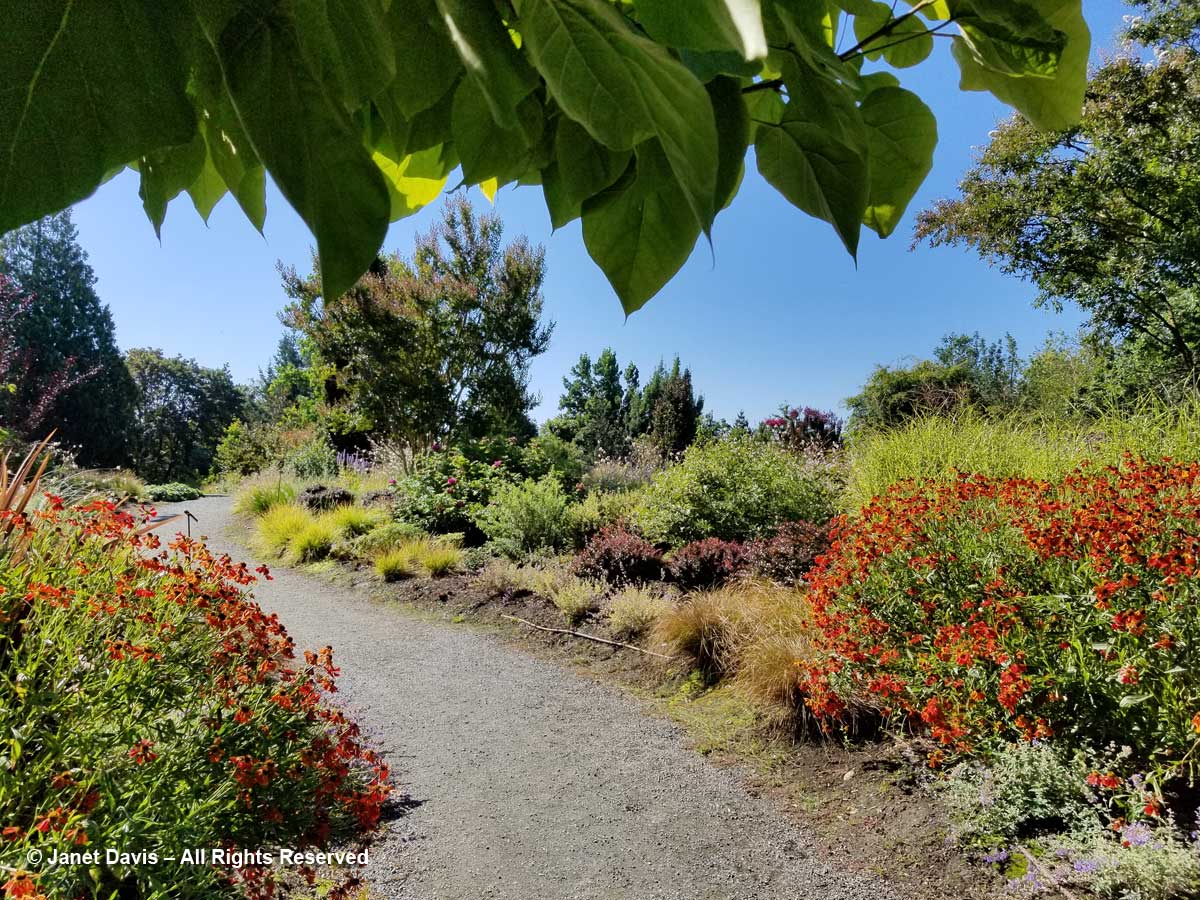
In a shady section, below, I was charmed by this small vignette of hydrangea, brunnera and geranium……
…. and the azure-blue flowers of Gentiana asclepiadea cascaded over stairs between the parallel paths.
The cultivar name of this pure white toad lily (Tricyrtis hirta) is ‘Shirohohotogisu’, which means ‘white cuckoo’, a descriptive metaphor for the upswept petals.
On higher ground beside the lawn near the garden’s gift shop, I stood in the shade of the silk tree (Albizia julibrissin) and looked back at the borders below.
The silk tree was in full flower.
At the far end of the border, the Dahlia Display Garden maintained by the Puget Sound Dahlia Association was at its late summer best.
Who doesn’t love the brilliant colours of dahlias?
The bright sun on this dahlia suited the leafcutter bee just fine. (Bees love single-petalled dahlias!)
Even this southern green stink bug nymph looked fetching on an orange dahlia.
Since our schedule had us driving to the beaches of Oregon that day, we hurried out of the NPA Perennial Border area on a path through the forest. Here you’ll find the Native Discovery Garden. From the website: “The Native Discovery Garden, maintained by the East Lake Washington District of Garden Clubs and the Washington Native Plant Society, inspires visitors to look to the native plant palette when planning their home gardens. Adapted to the climate and conditions of the Pacific Northwest, native plants in urban landscapes can be ecologically sound, beautiful, and low maintenance. Adjacent to a natural wetland, this garden illustrates the many layers of plant life in the Northwest, from ground covers to trees. It serves as a transition from the gardens to the woodlands and forested lands to the south.”
I stopped at a beautiful bench, sculpted from Washington state hexagonal columnar basalt by sculptor Barry Namm.
There were excited children watching the fish beneath the waterfall in the Shorts Groundcover Garden.
Water is used throughout Bellevue Botanical Garden, in inventive ways both natural and highly artificial.
I captured some of those water features in this short video.
To honor its ‘sister city’ relationship with Yao City near Osaka, Bellevue originally established the Yao Japanese Garden at Kelsey Creek Park. In 1992, the garden was moved to the Bellevue Botanical Garden, where it opened two years later. This is the entrance gate.
Unlike many traditional Japanese gardens, there are lushly beautiful plantings here.
I loved this timber bridge.
But there are also the more traditional features of a Japanese garden.
We stopped briefly at the Tateuchi Viewing Pavilion, nestled under massive red cedars (Thuja plicata). It was a gift from the Tateuchi Foundation, i.e. Atsuhiko Tateuchi and his wife, Ina Goodwin Tateuchi.
Then it was time to take the Tateuchi Loop Path to return to our car and drive south towards Oregon.

